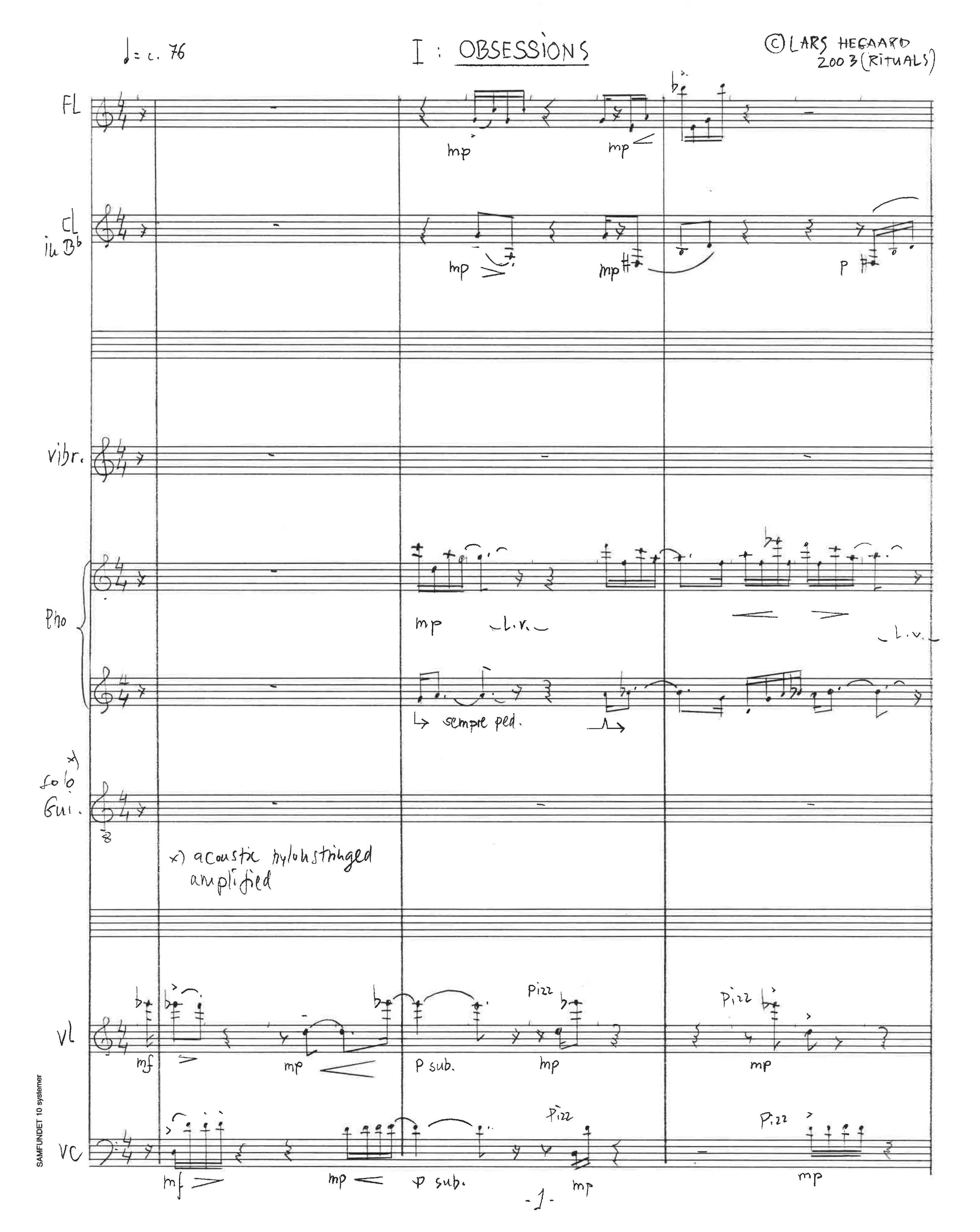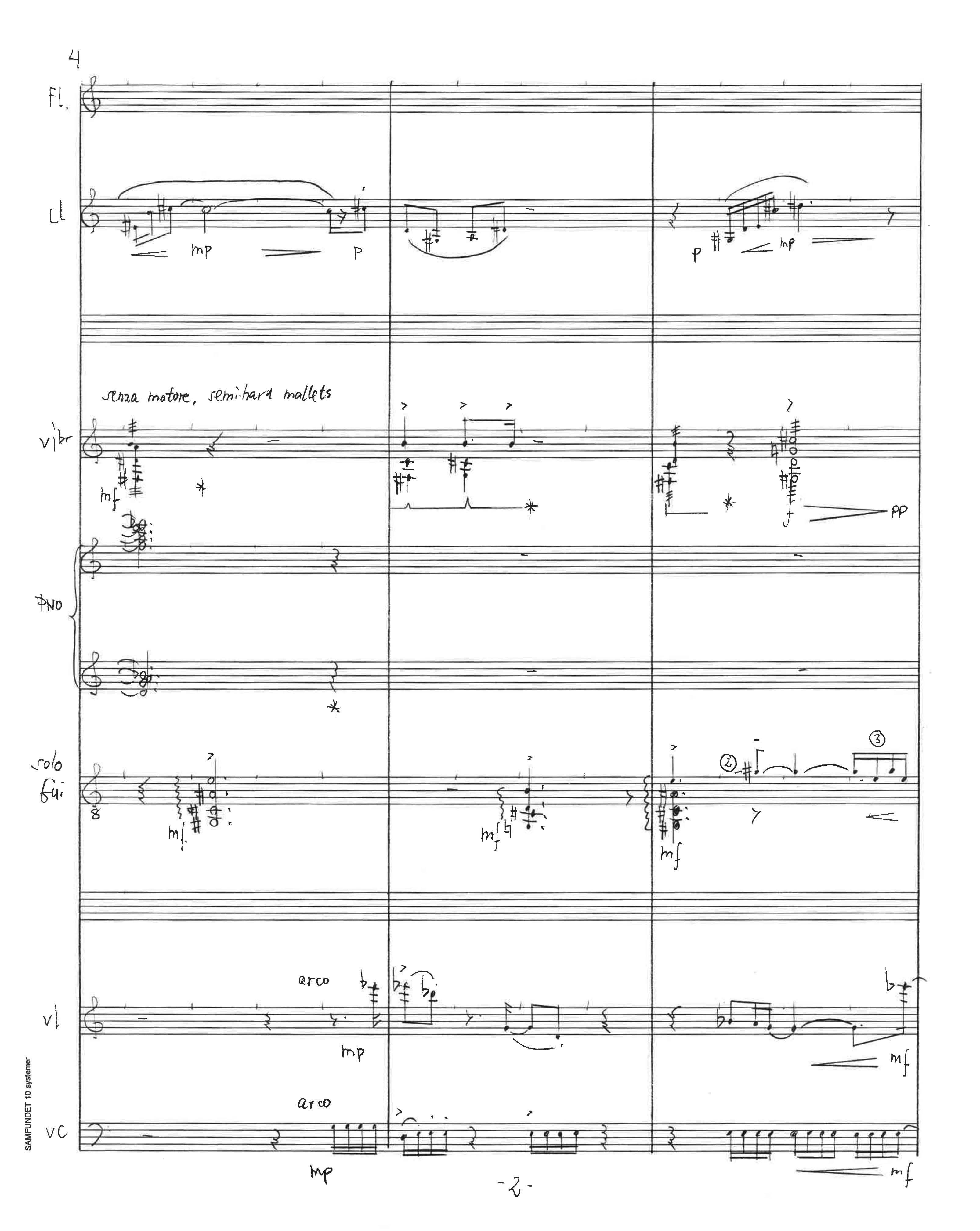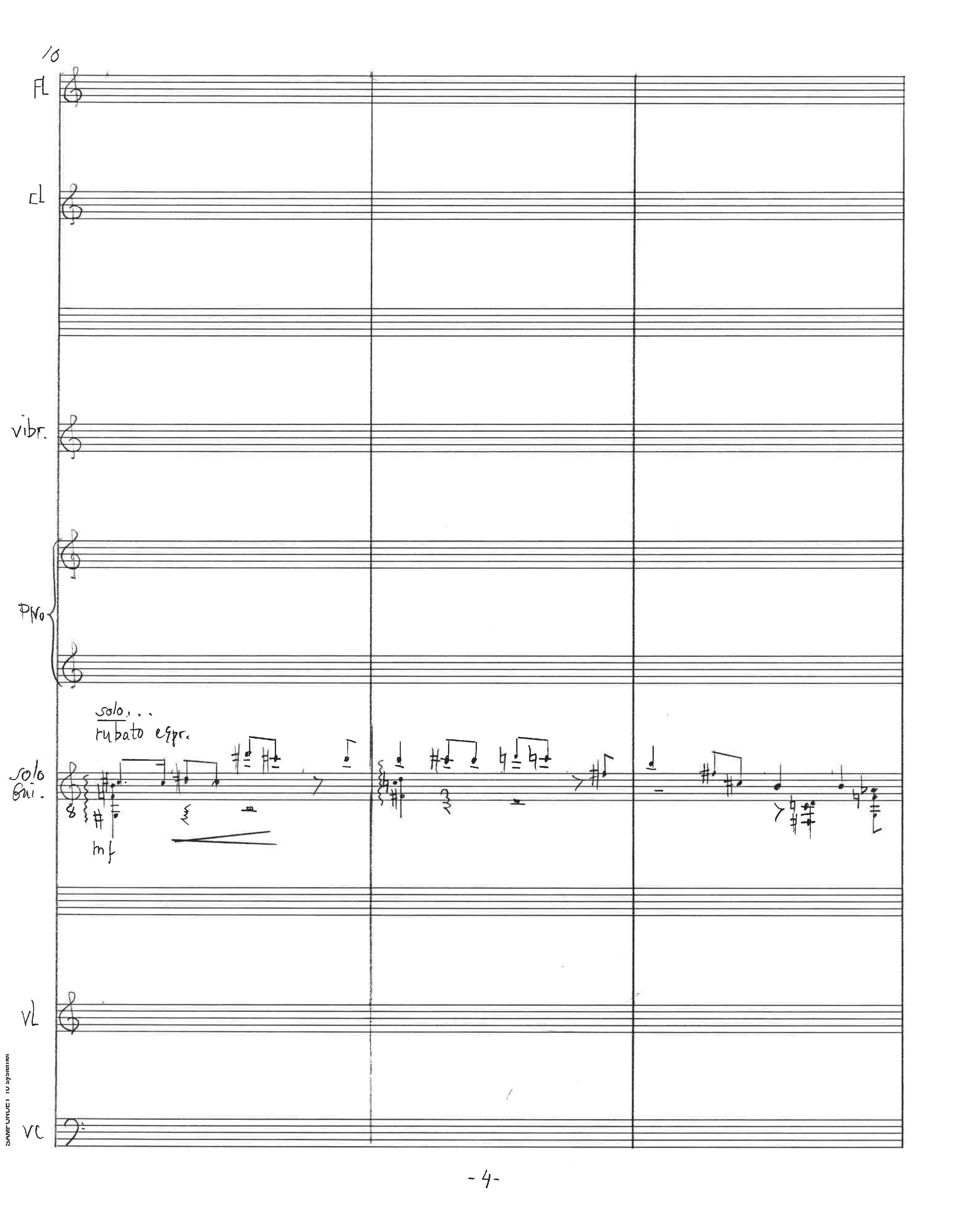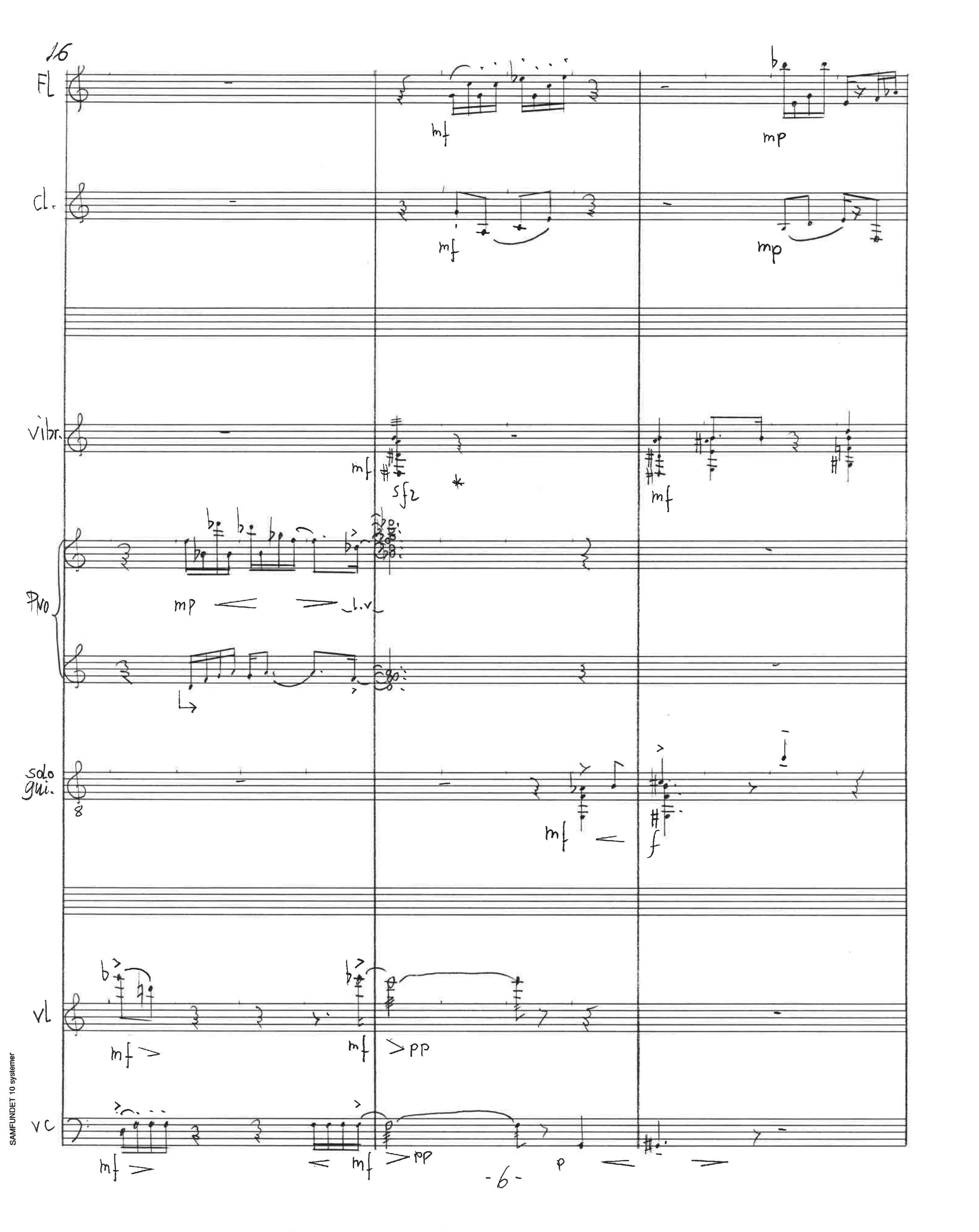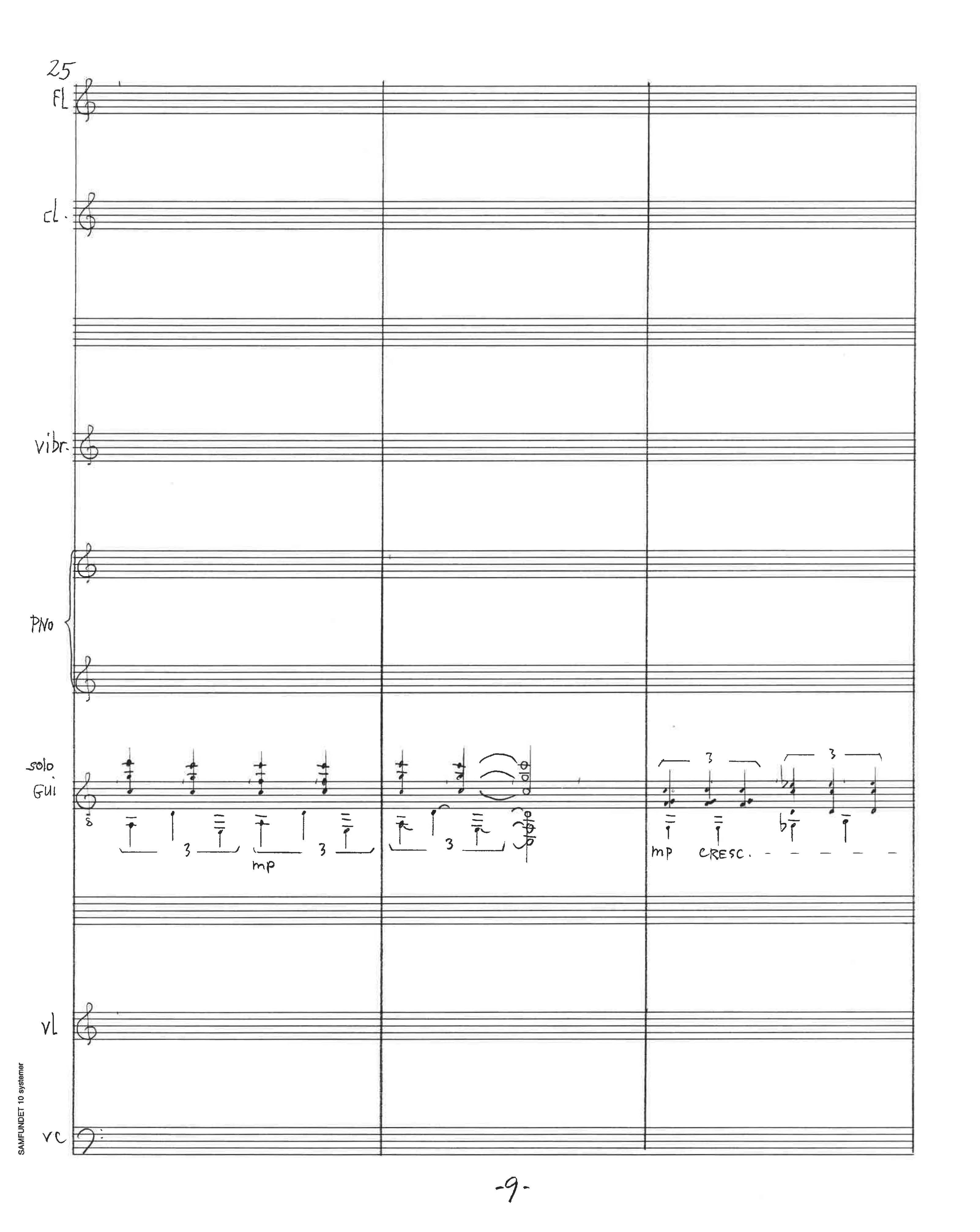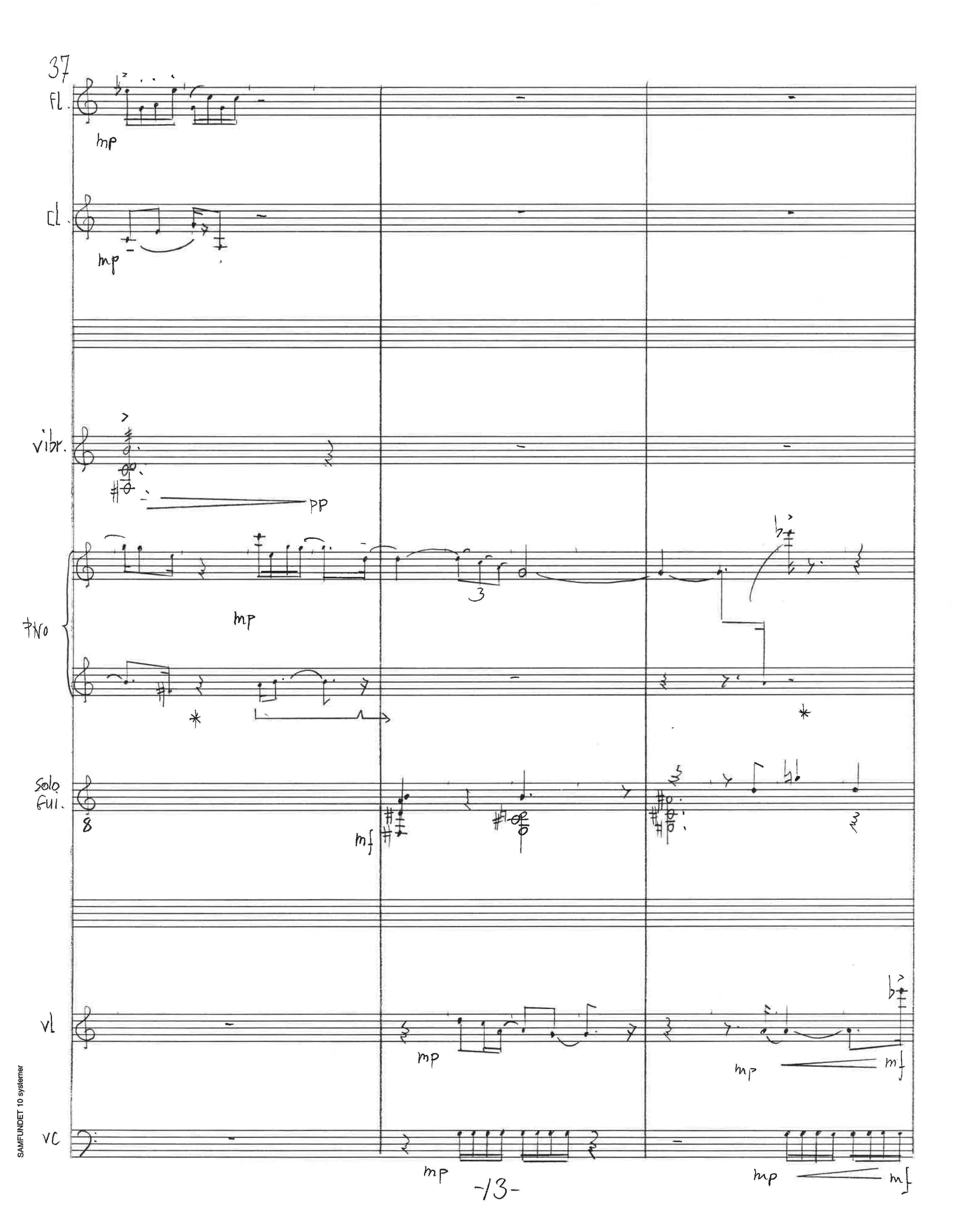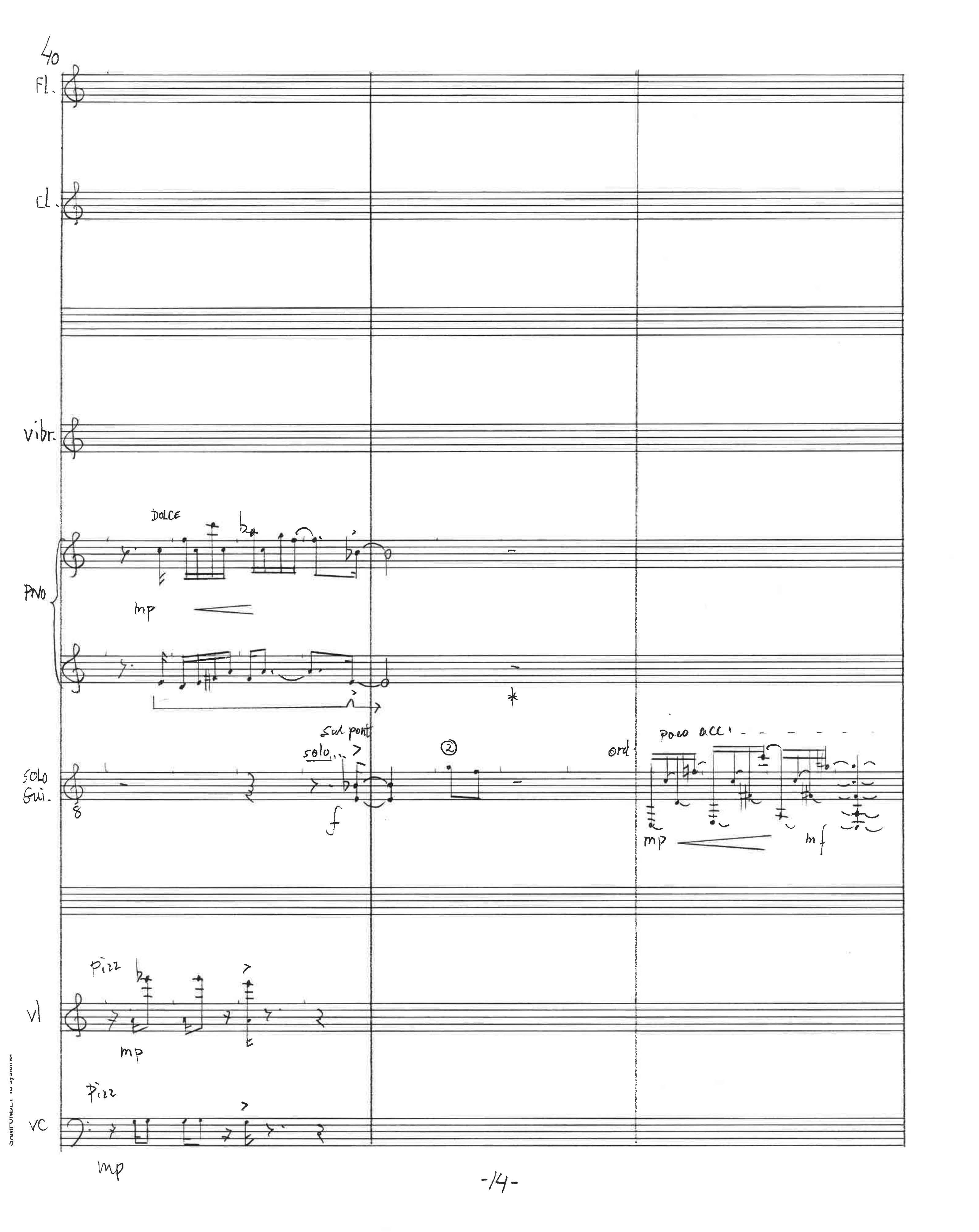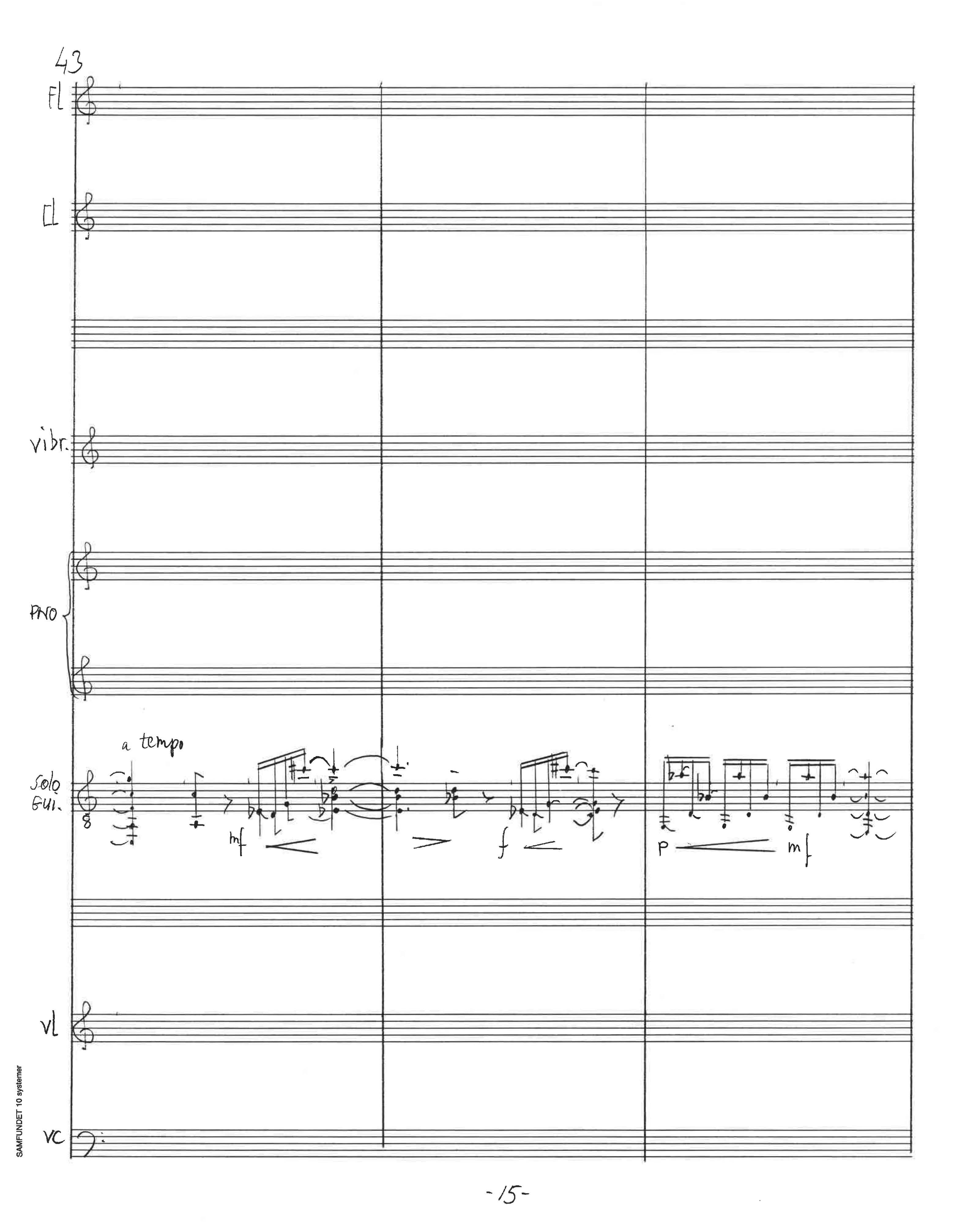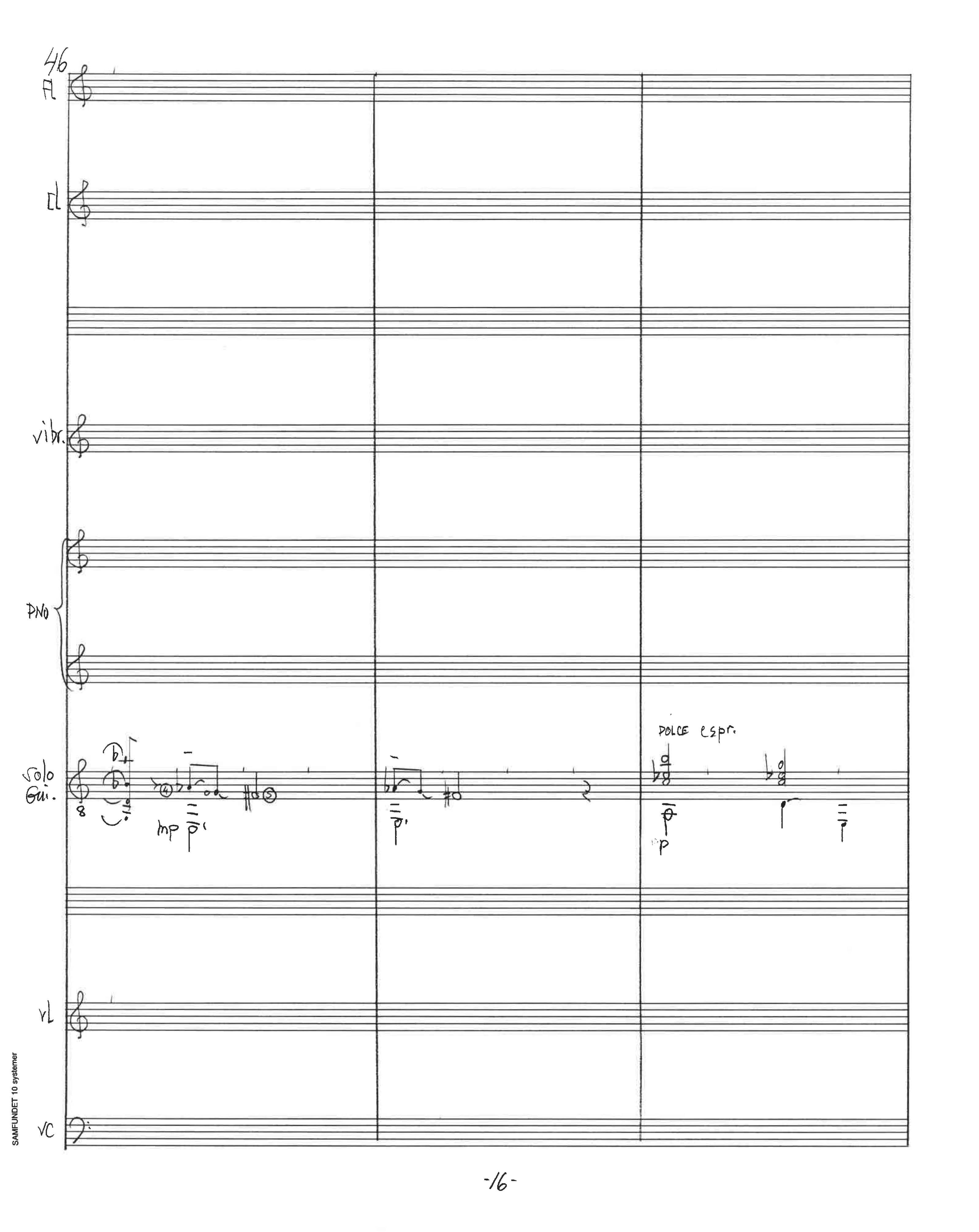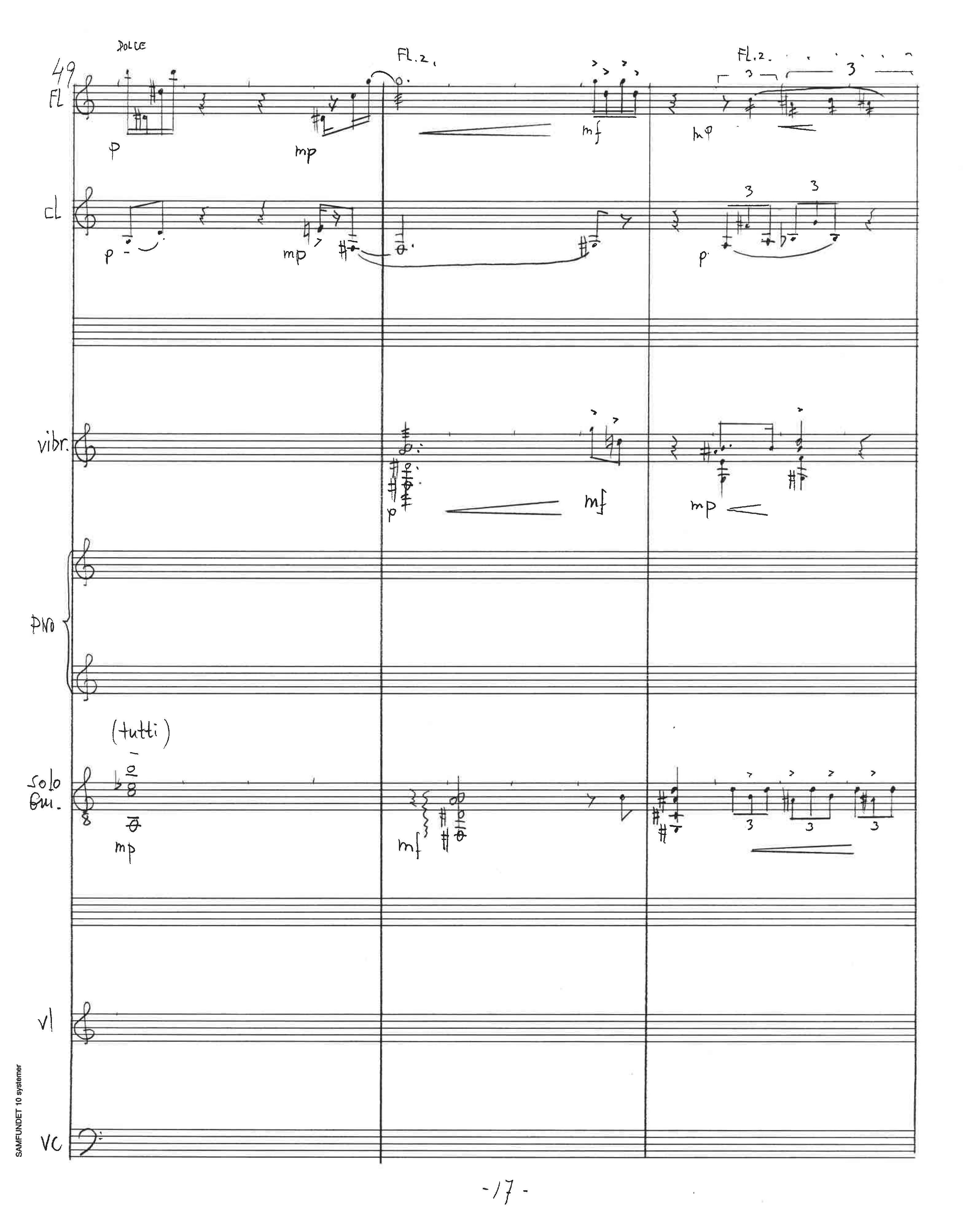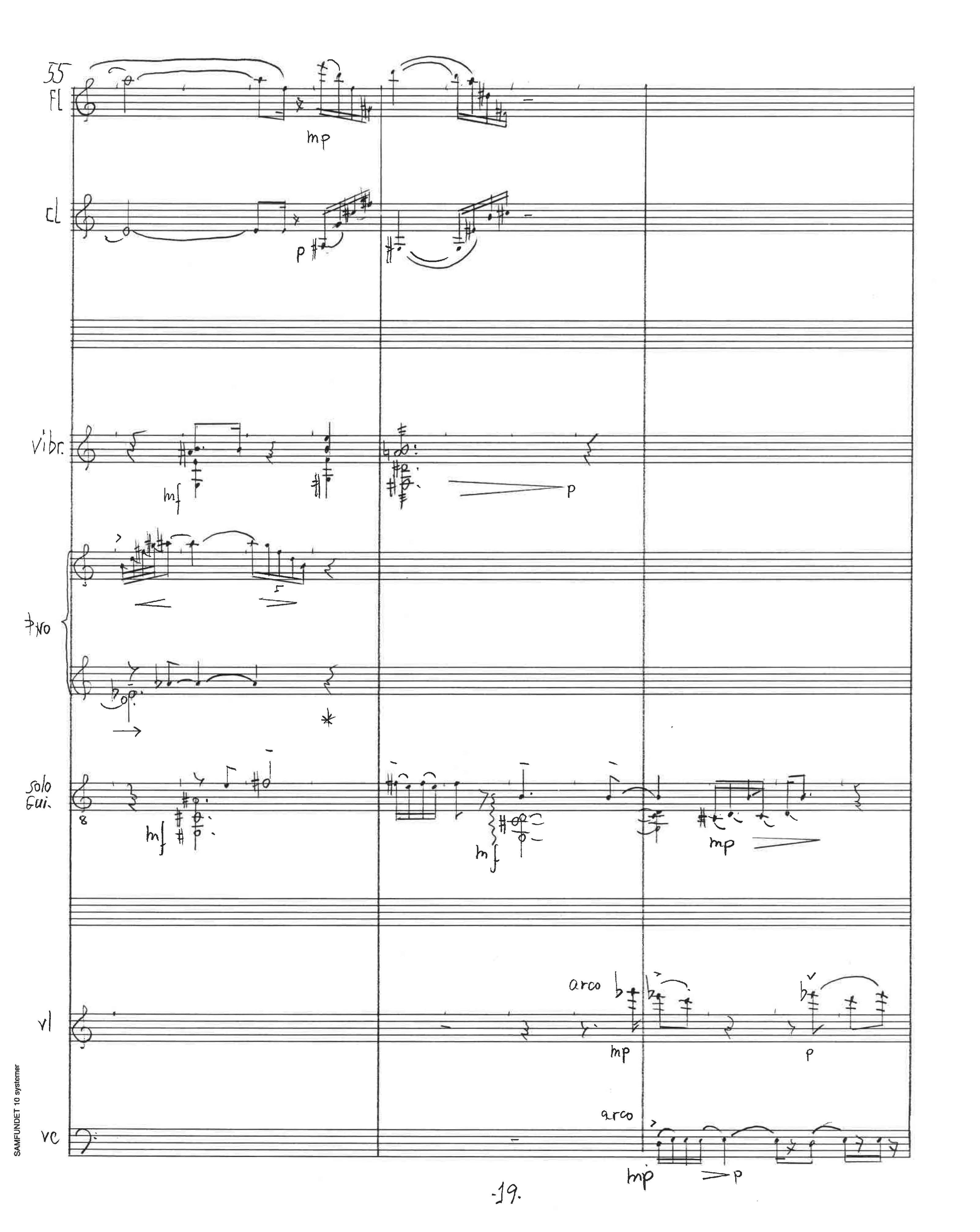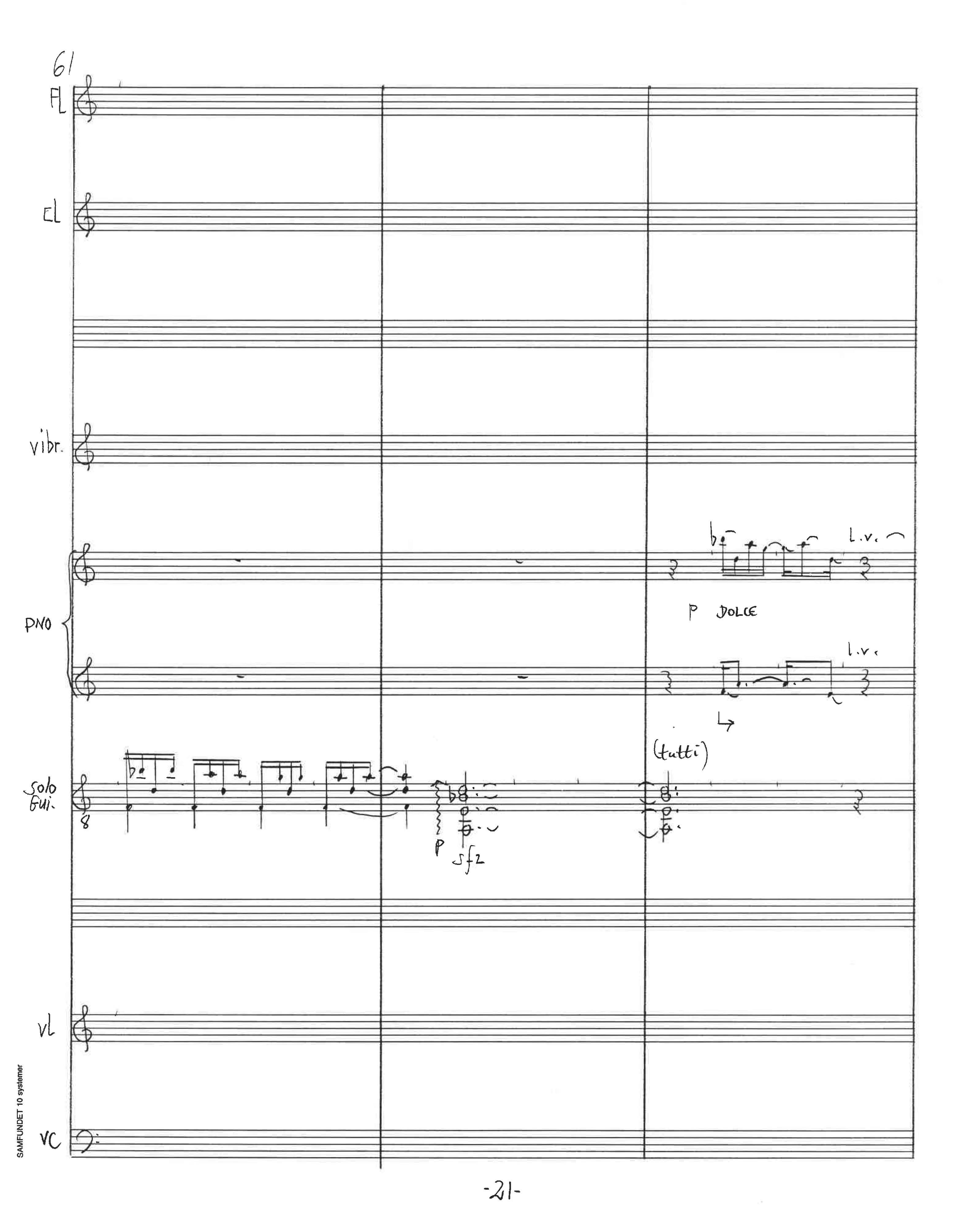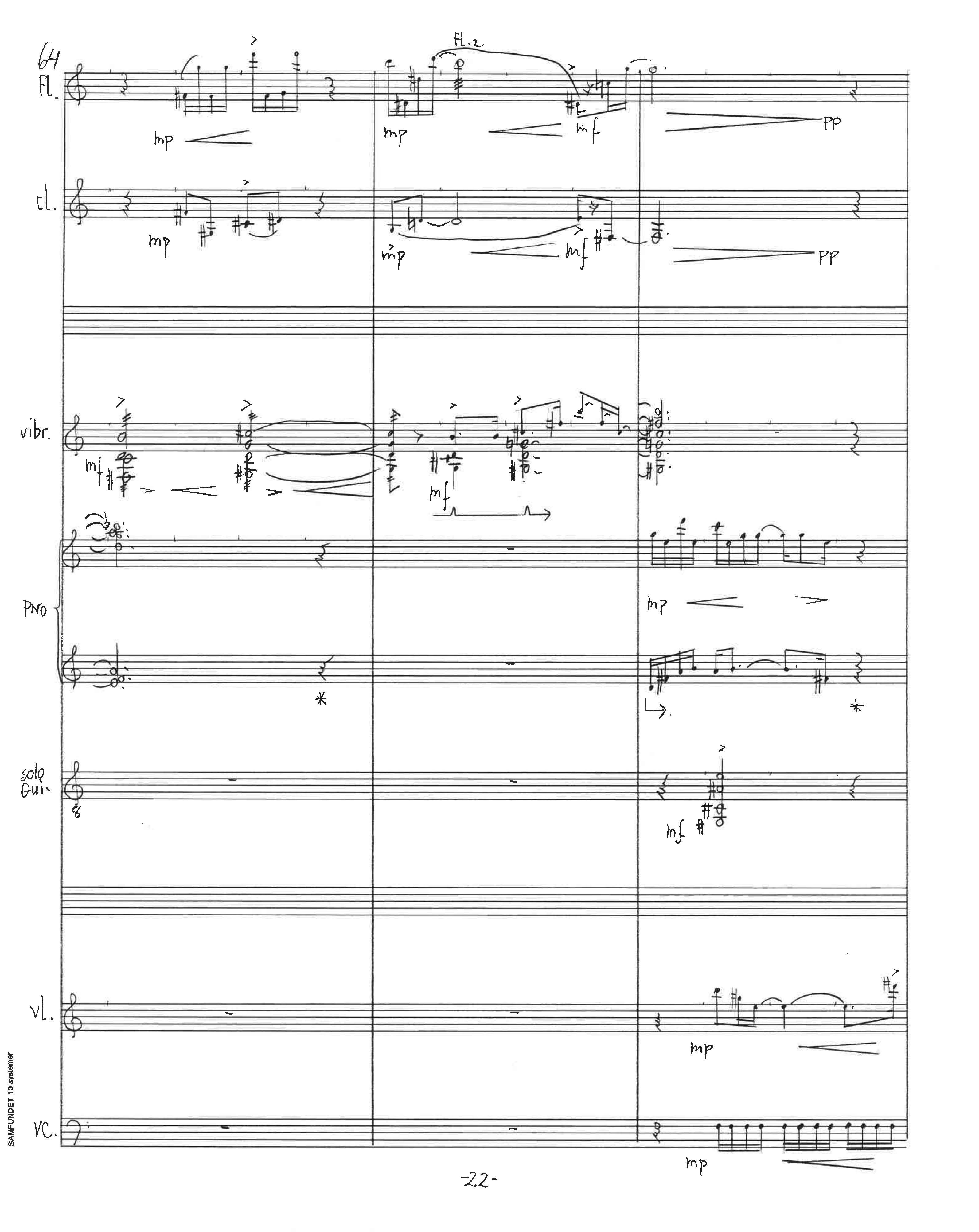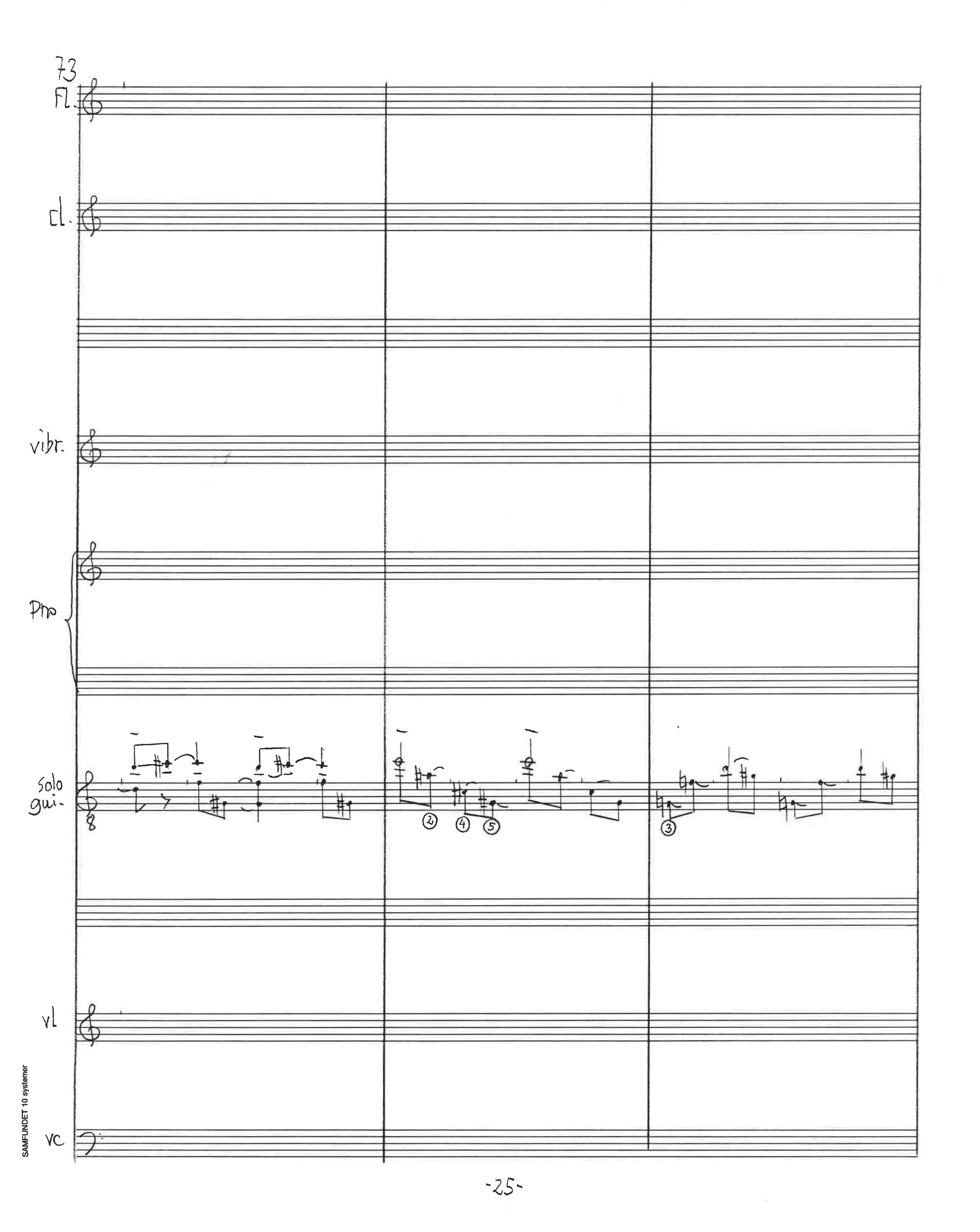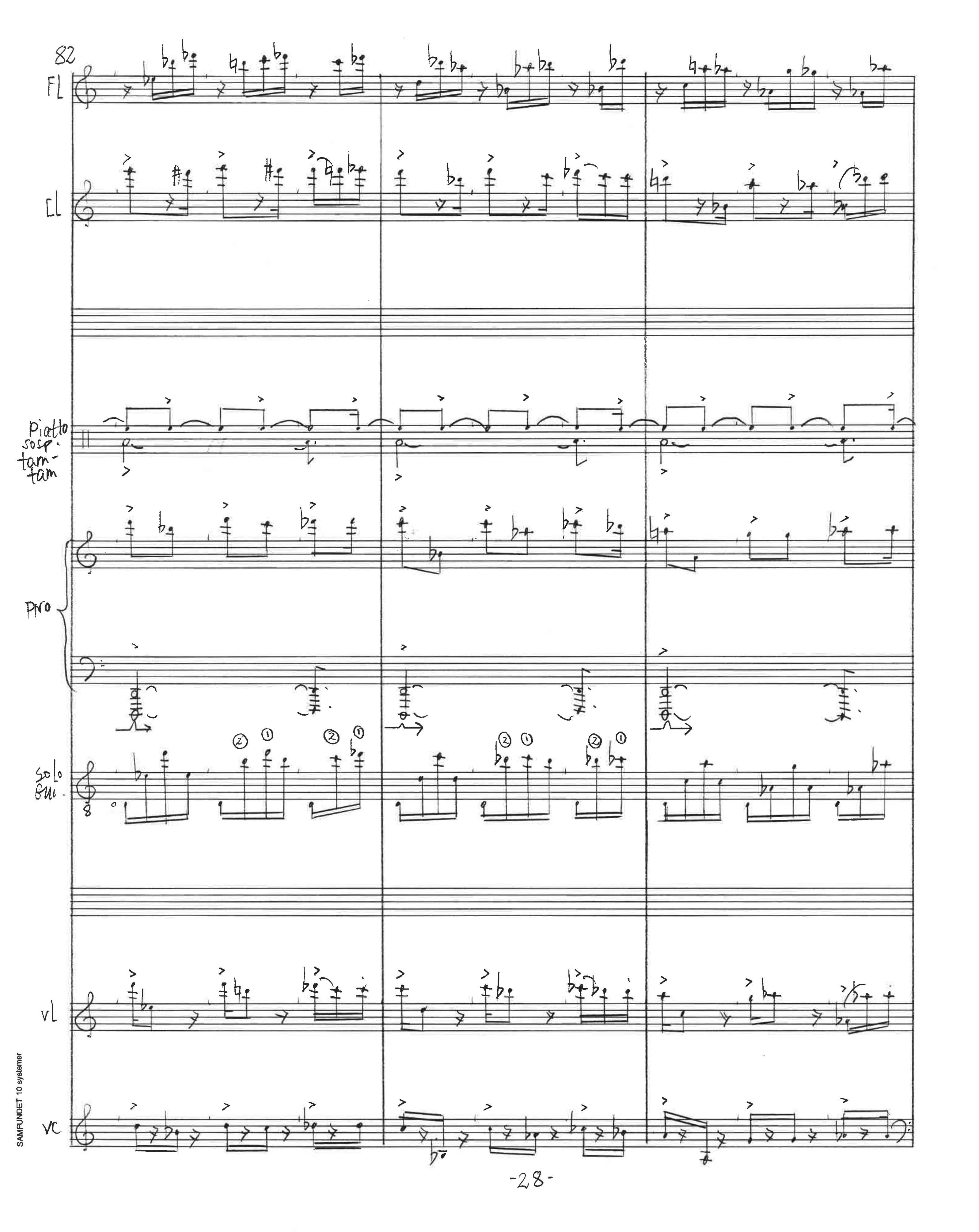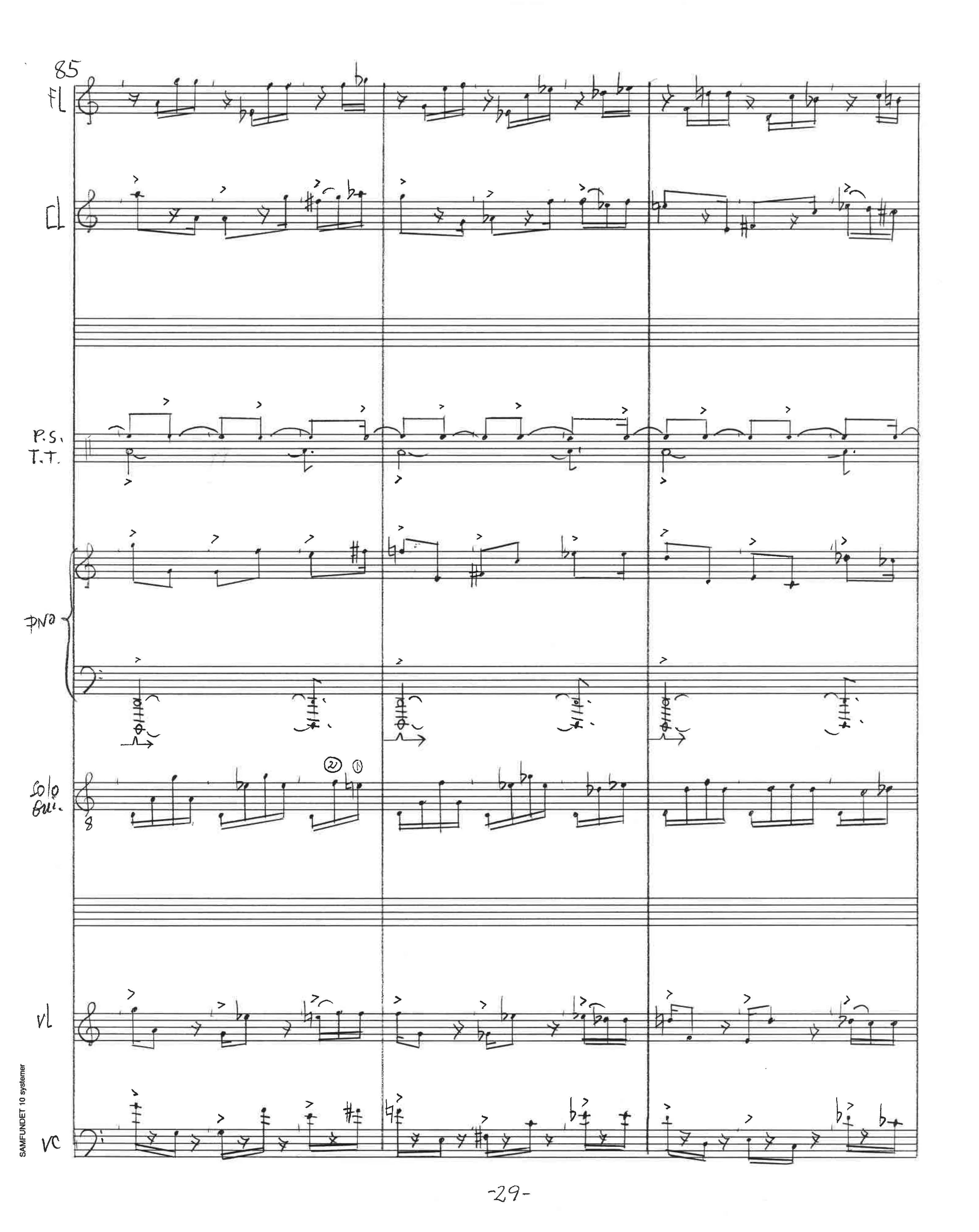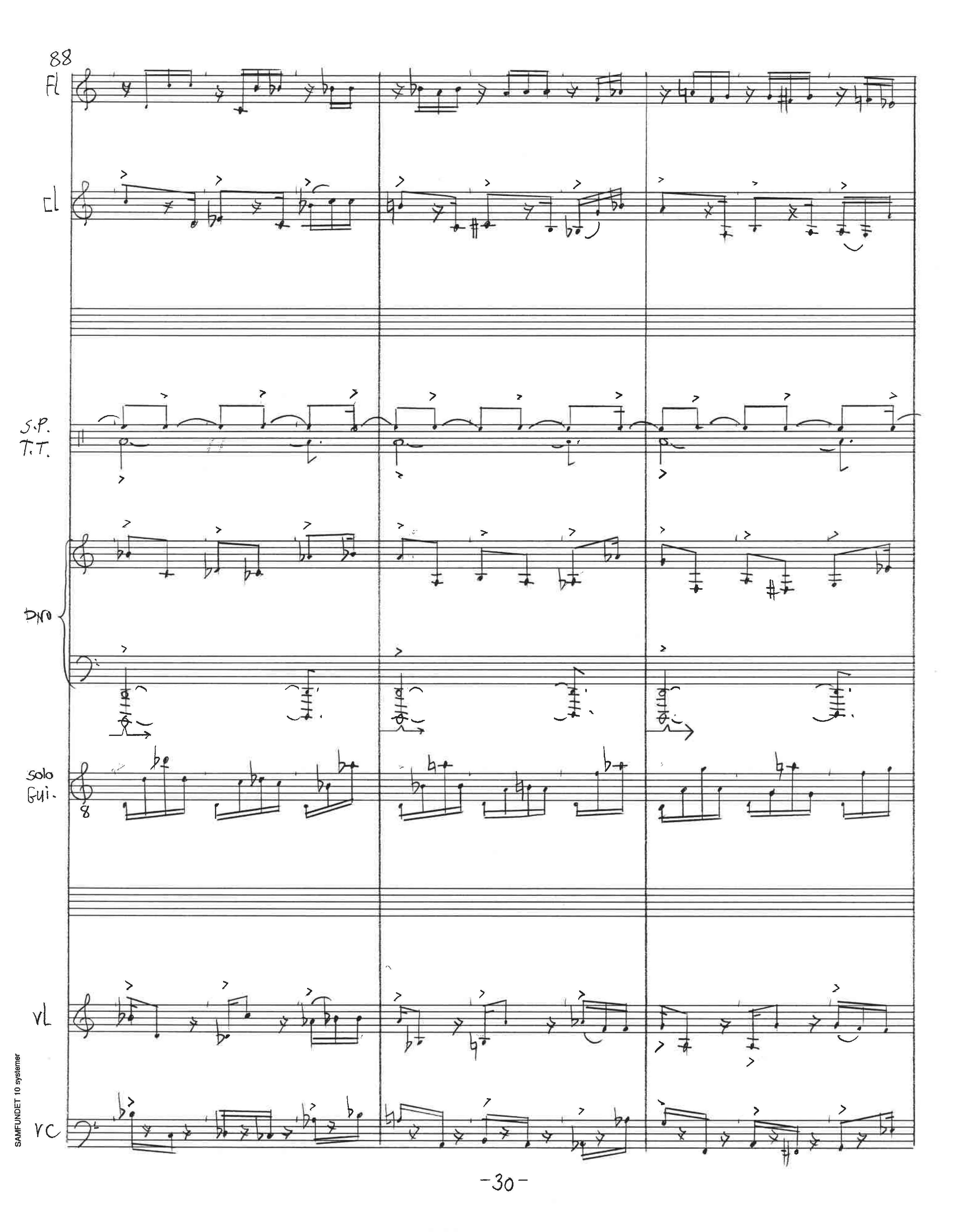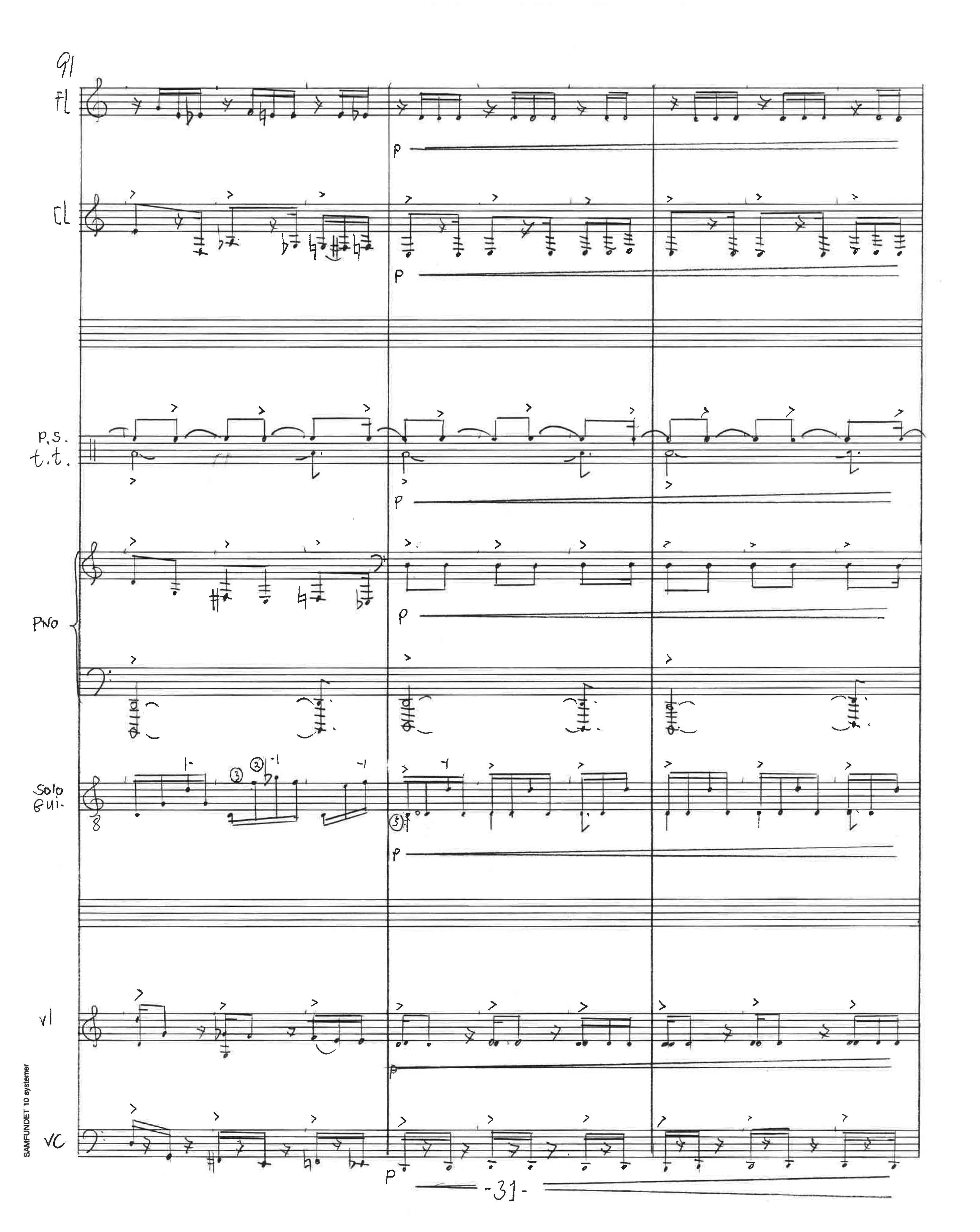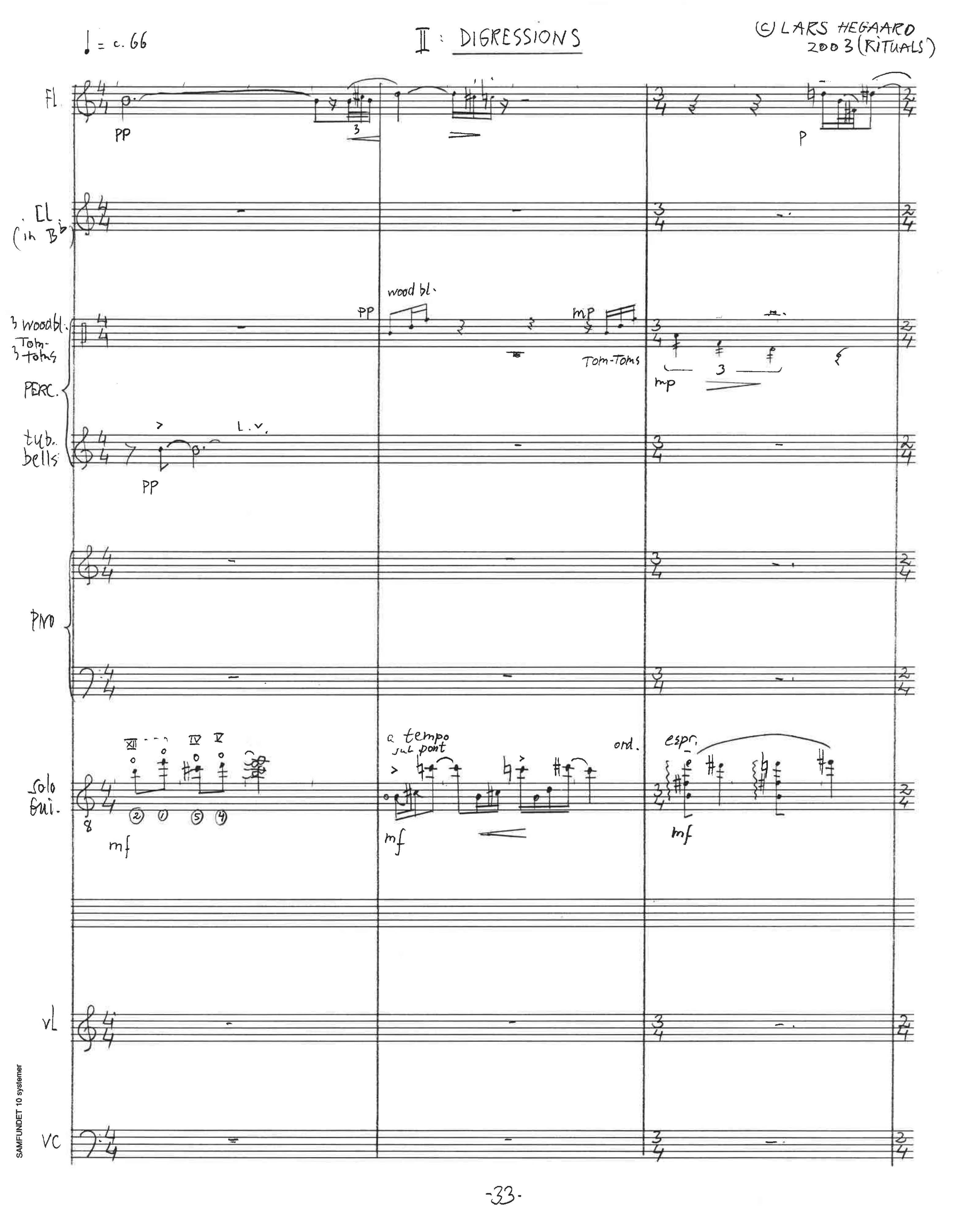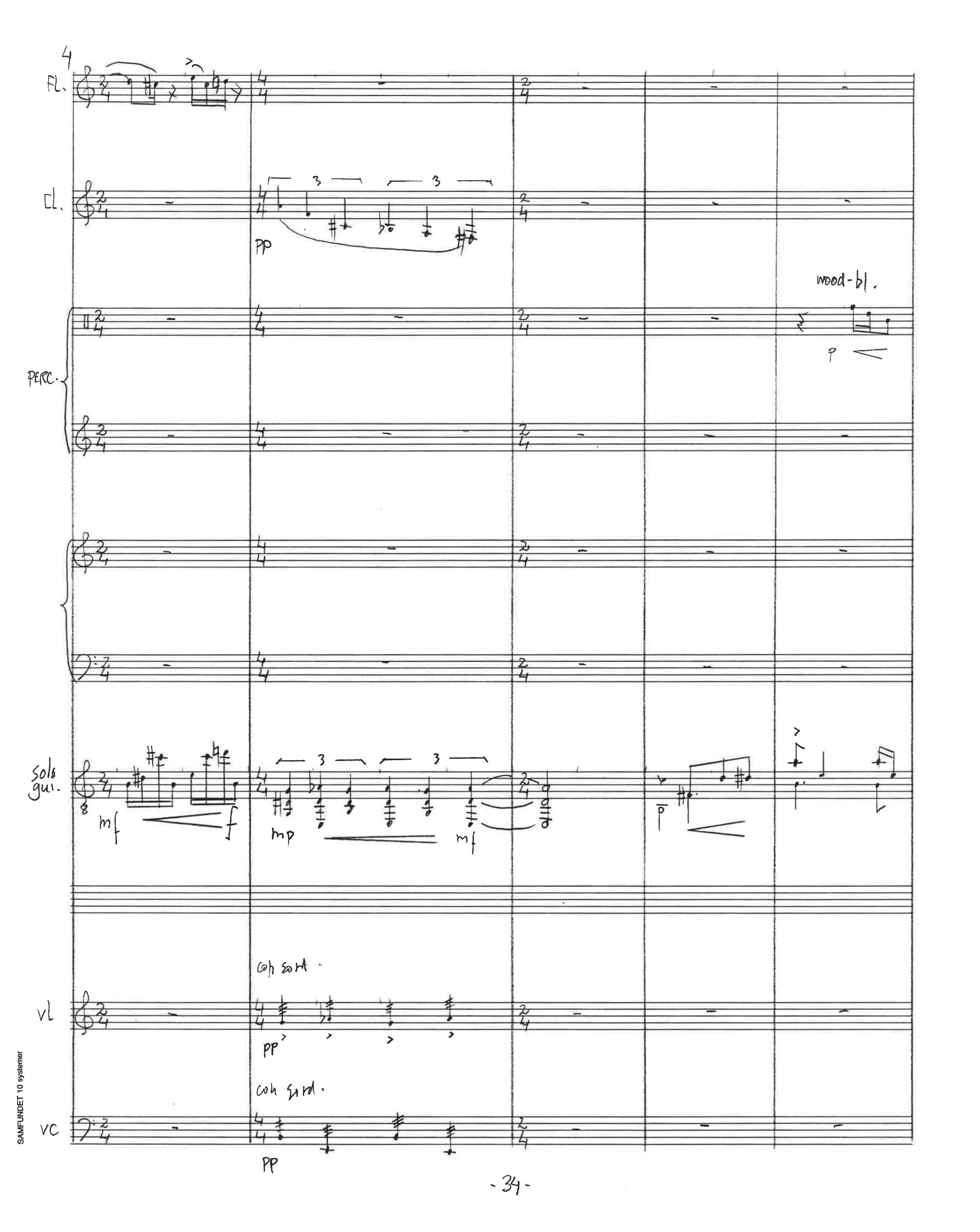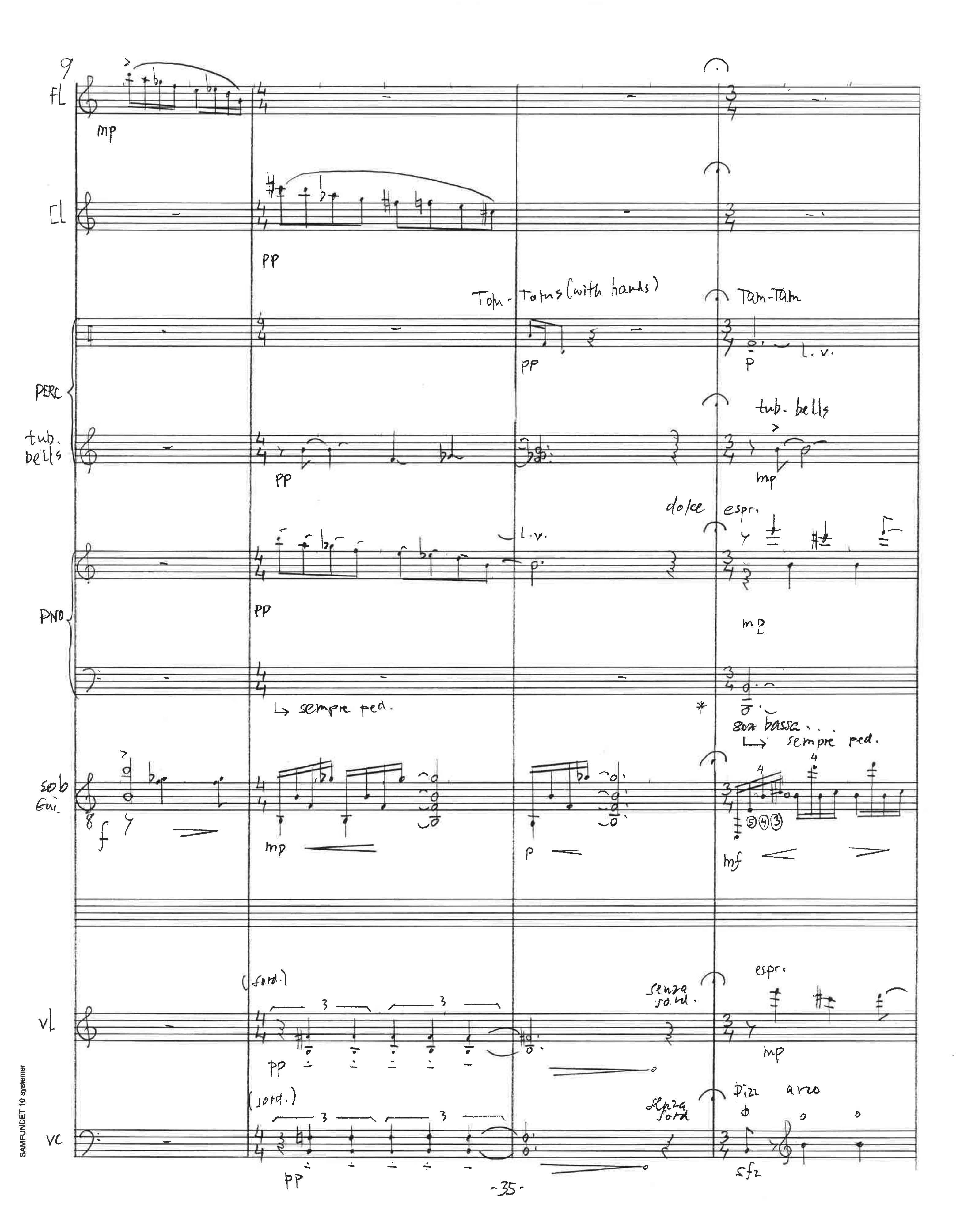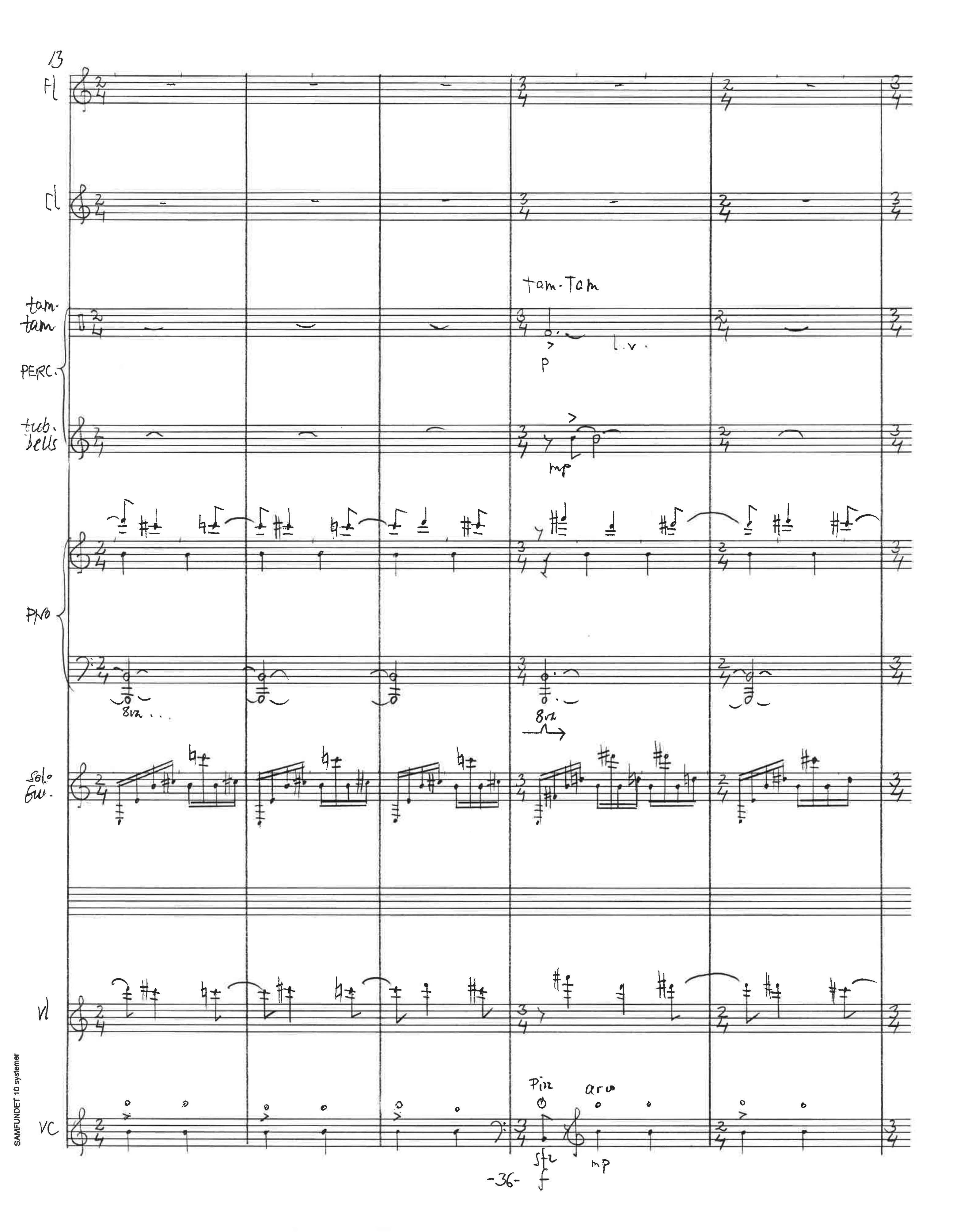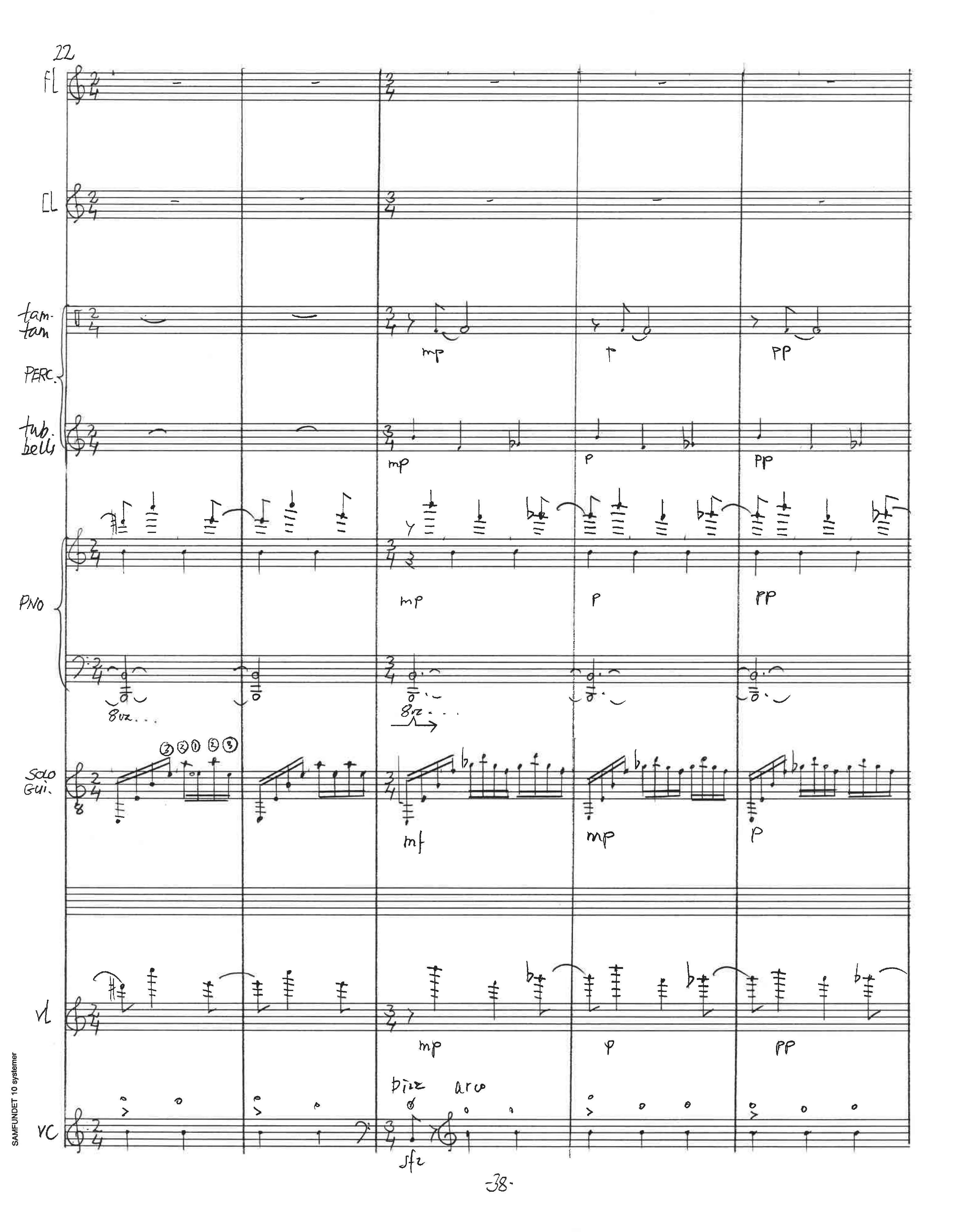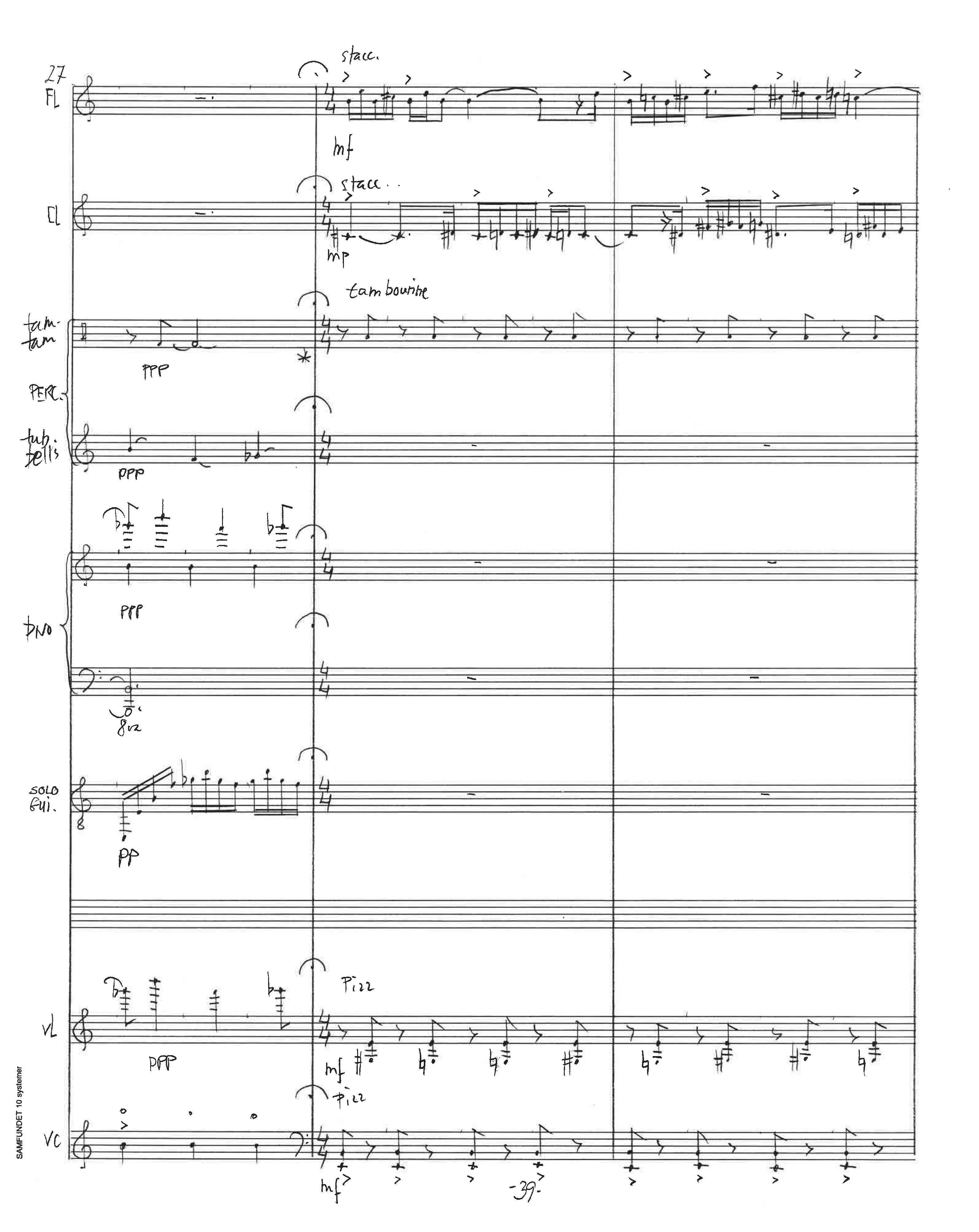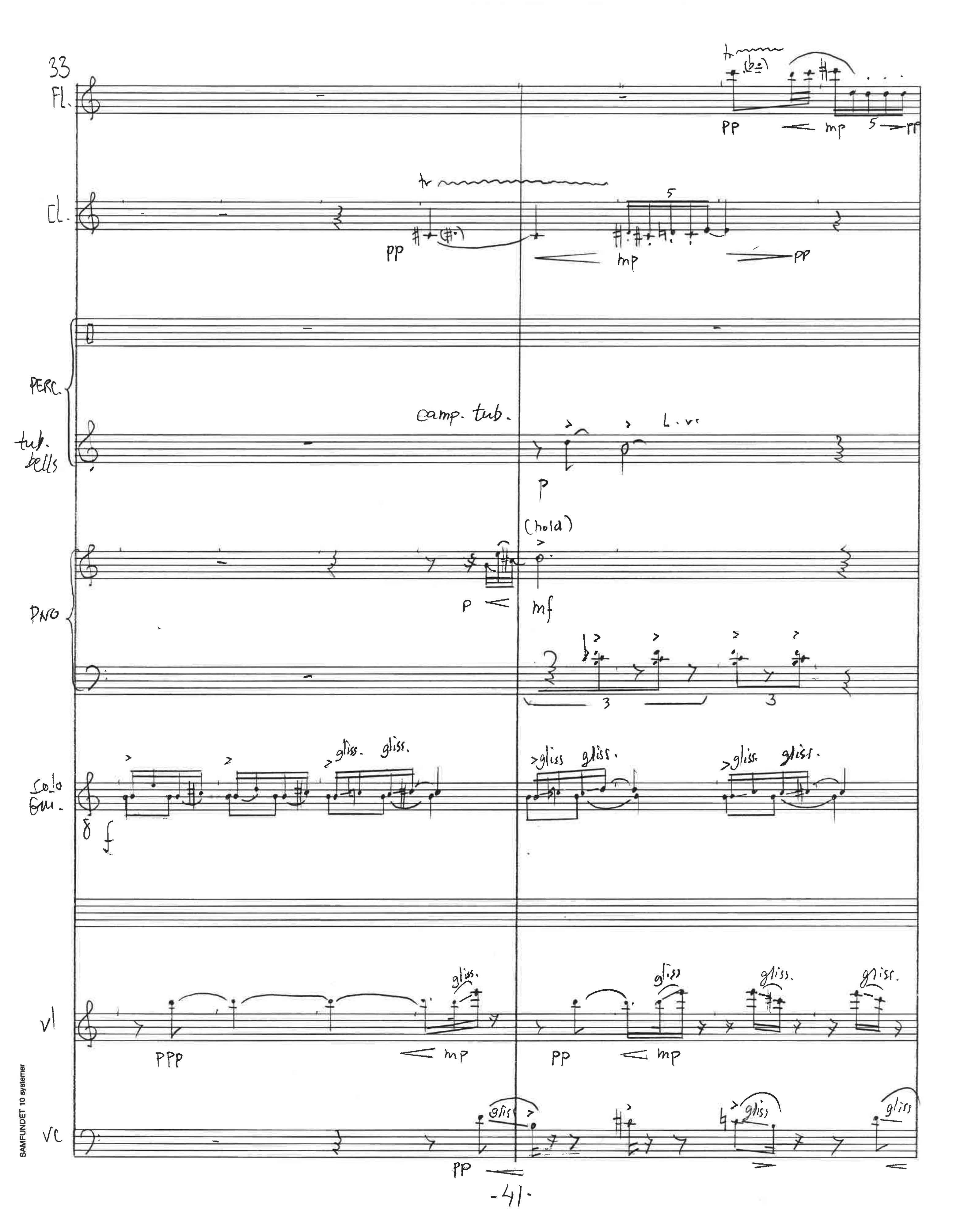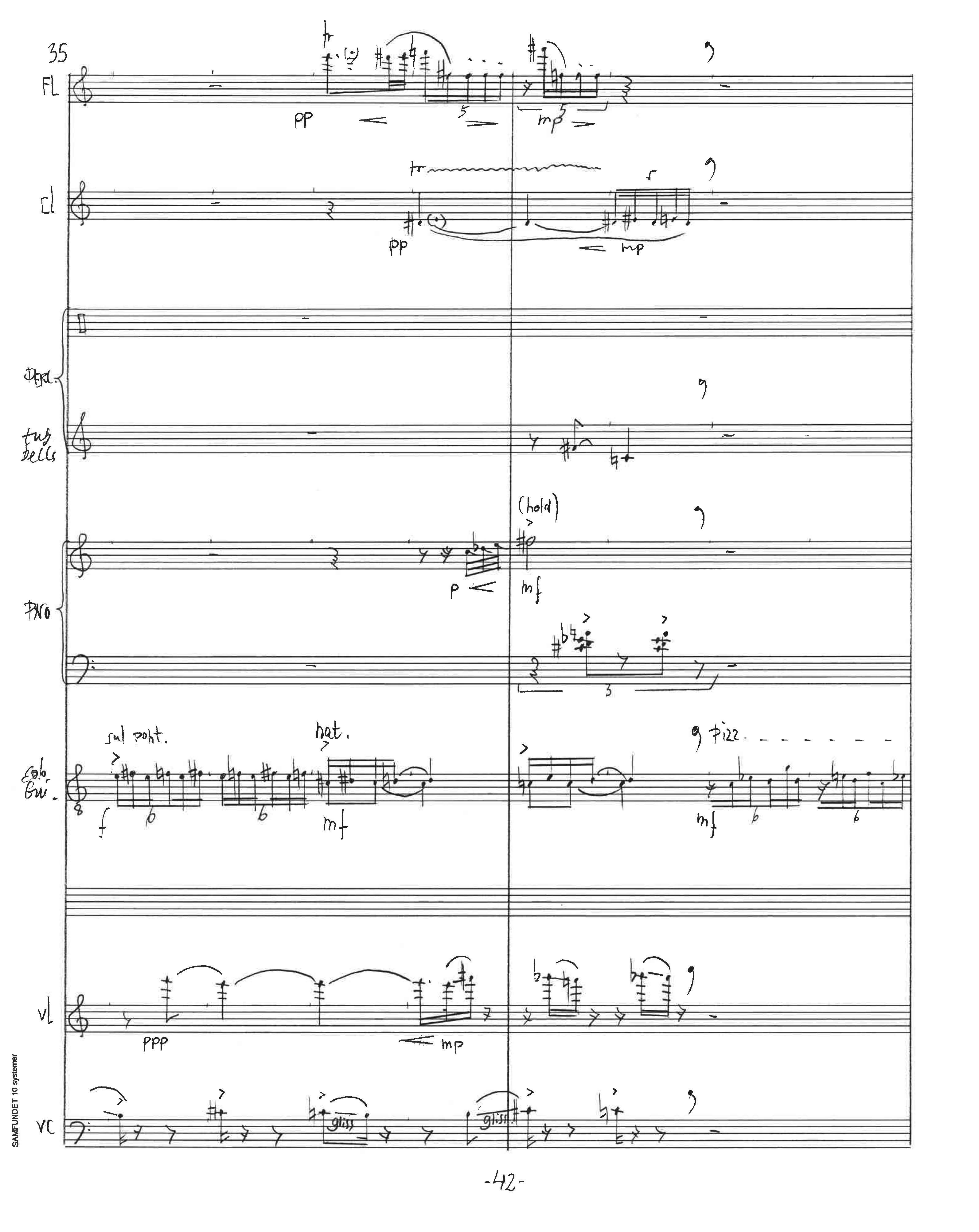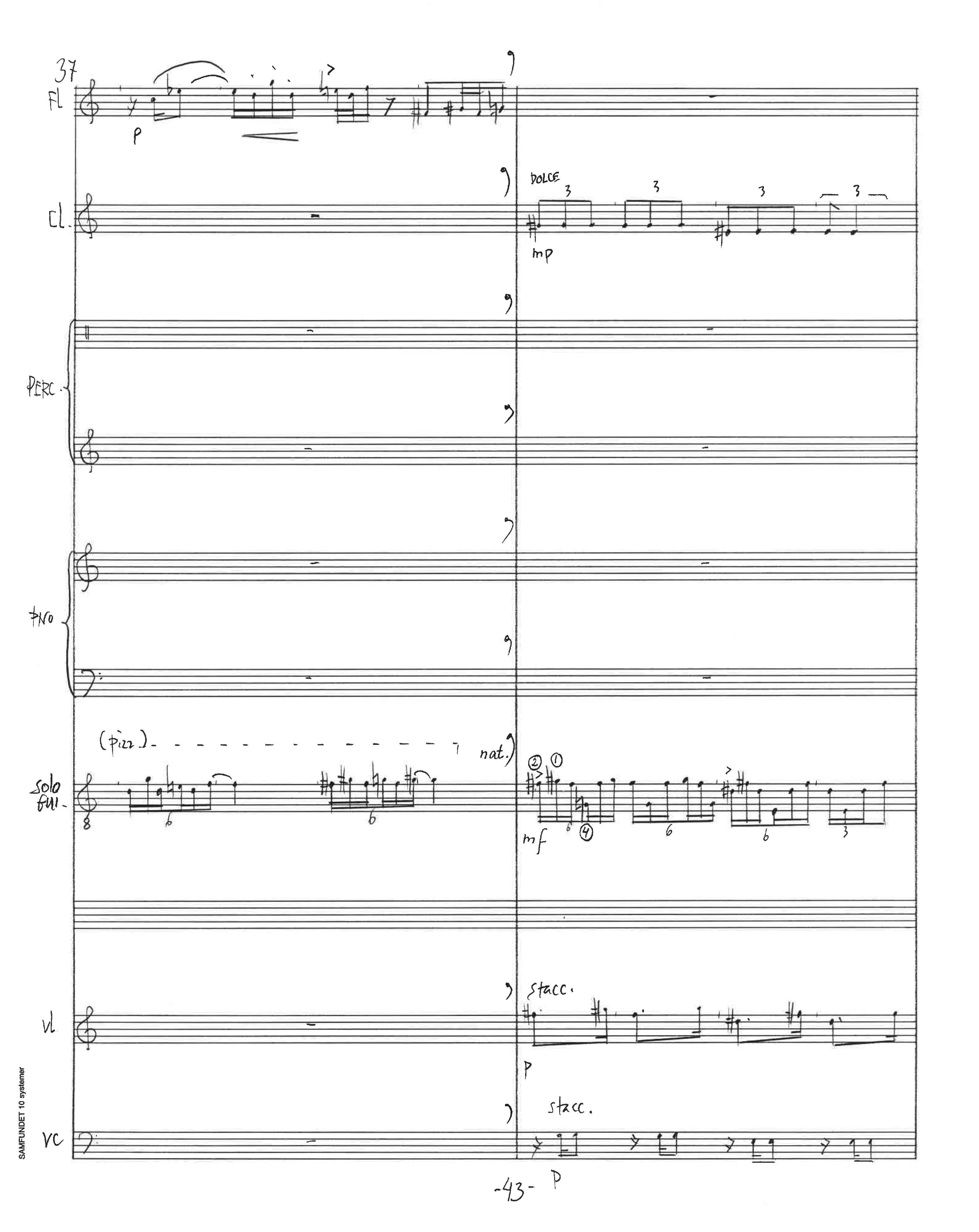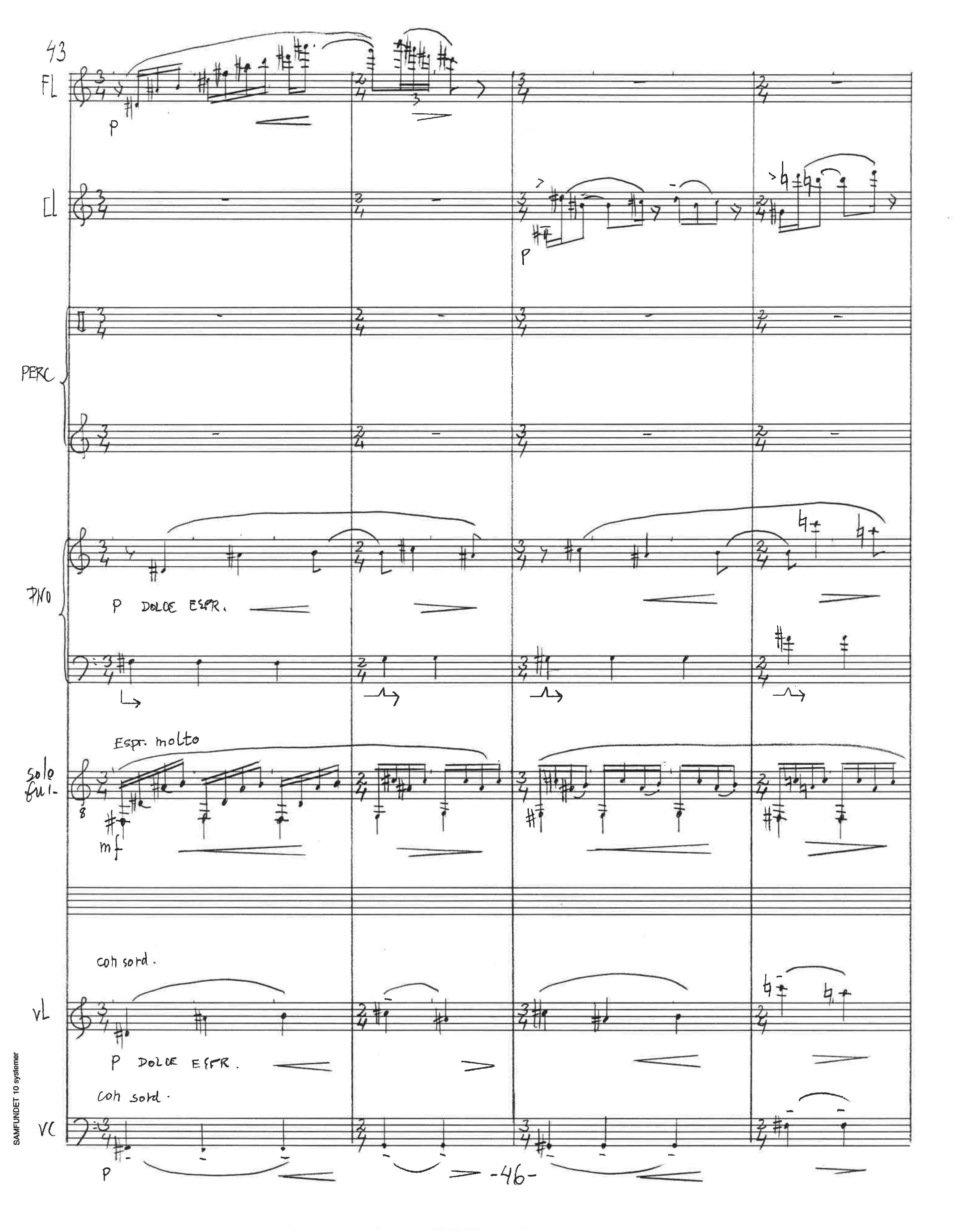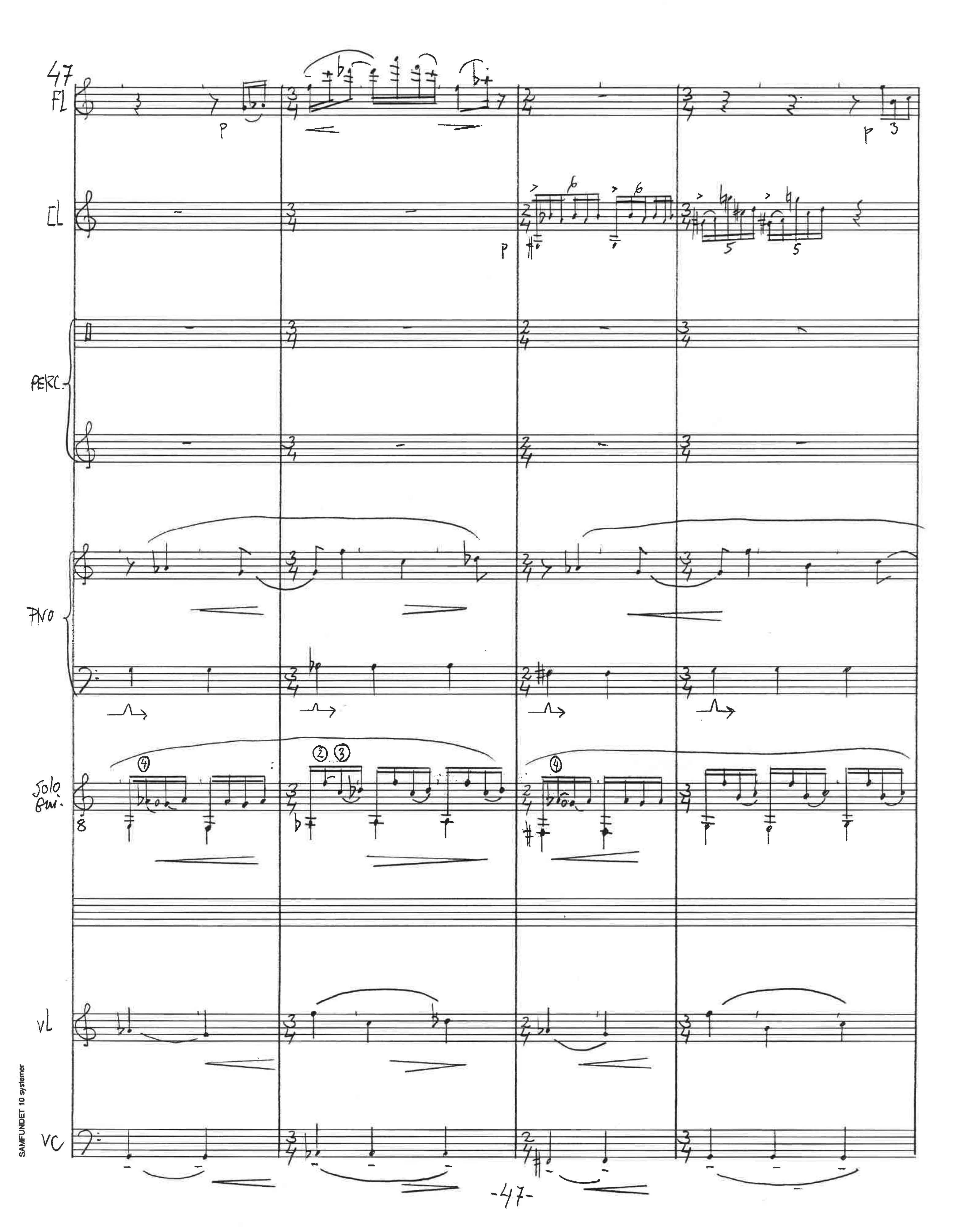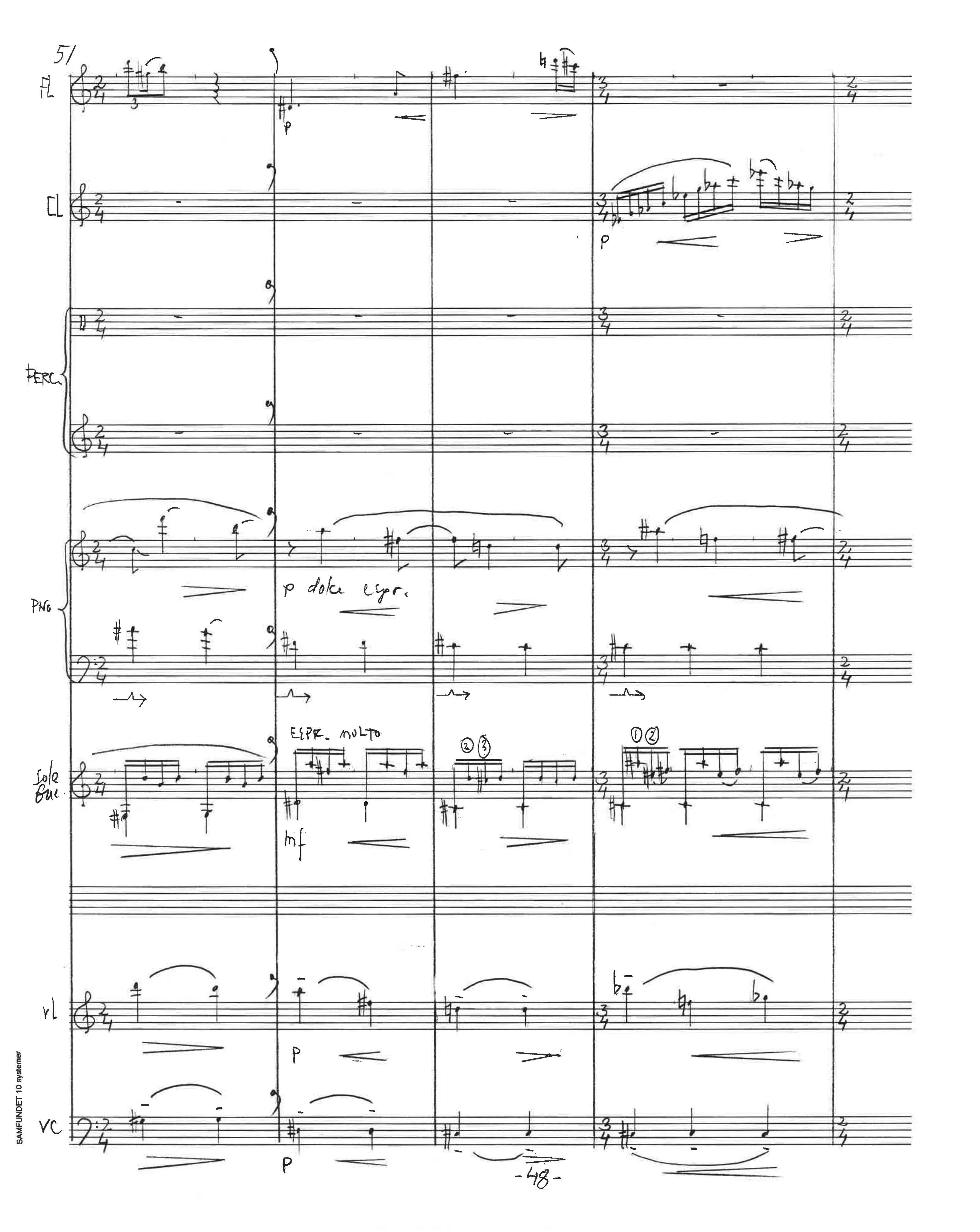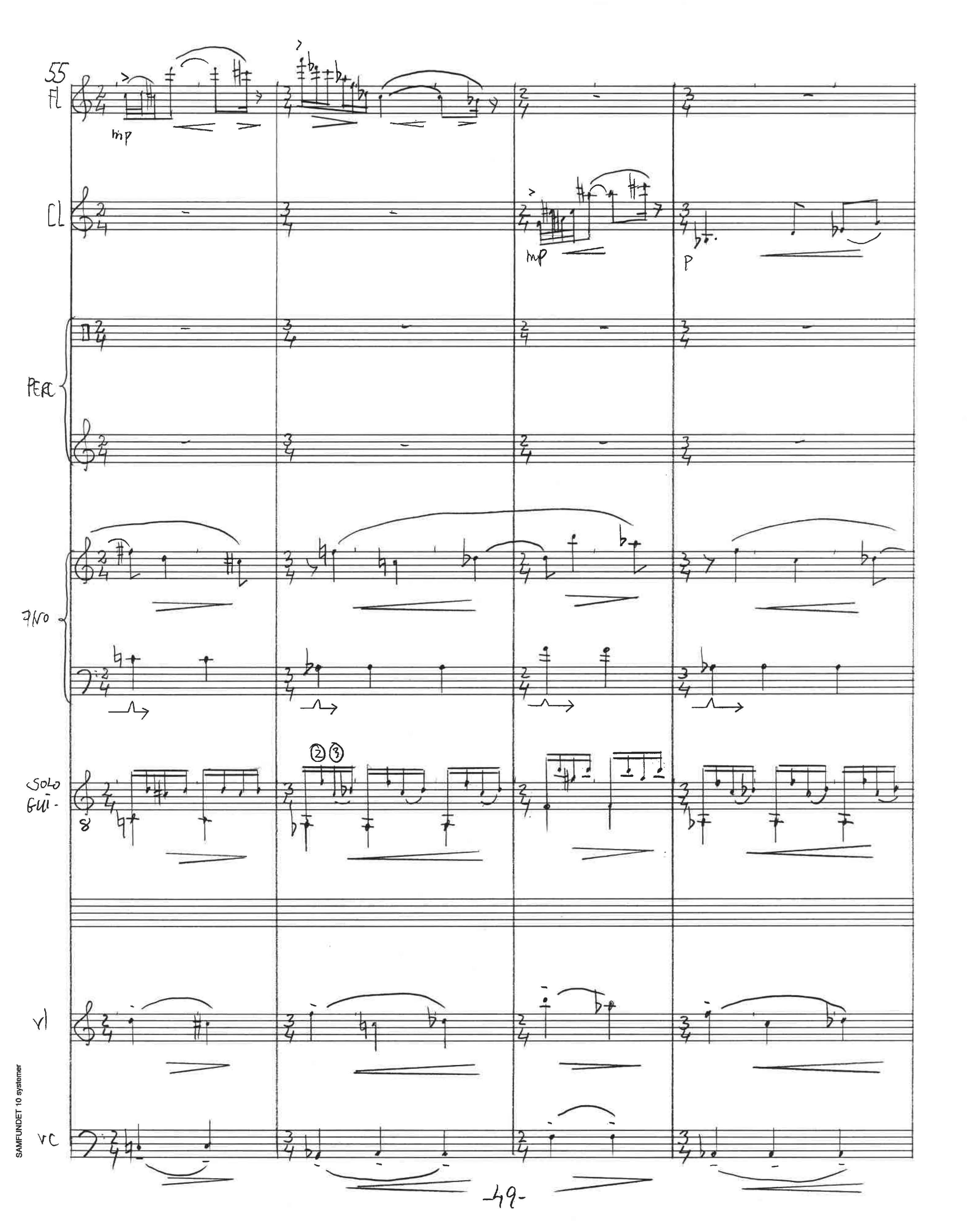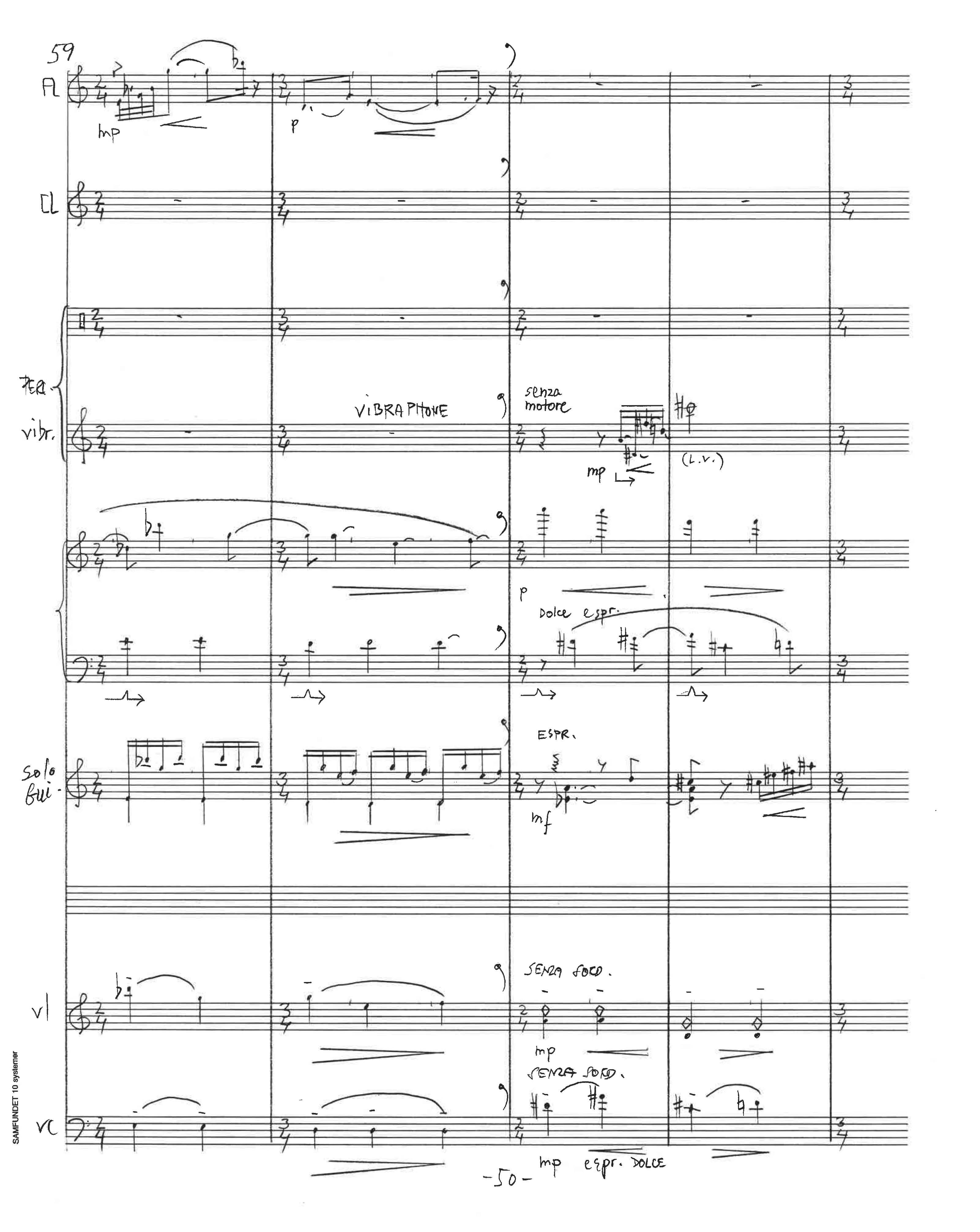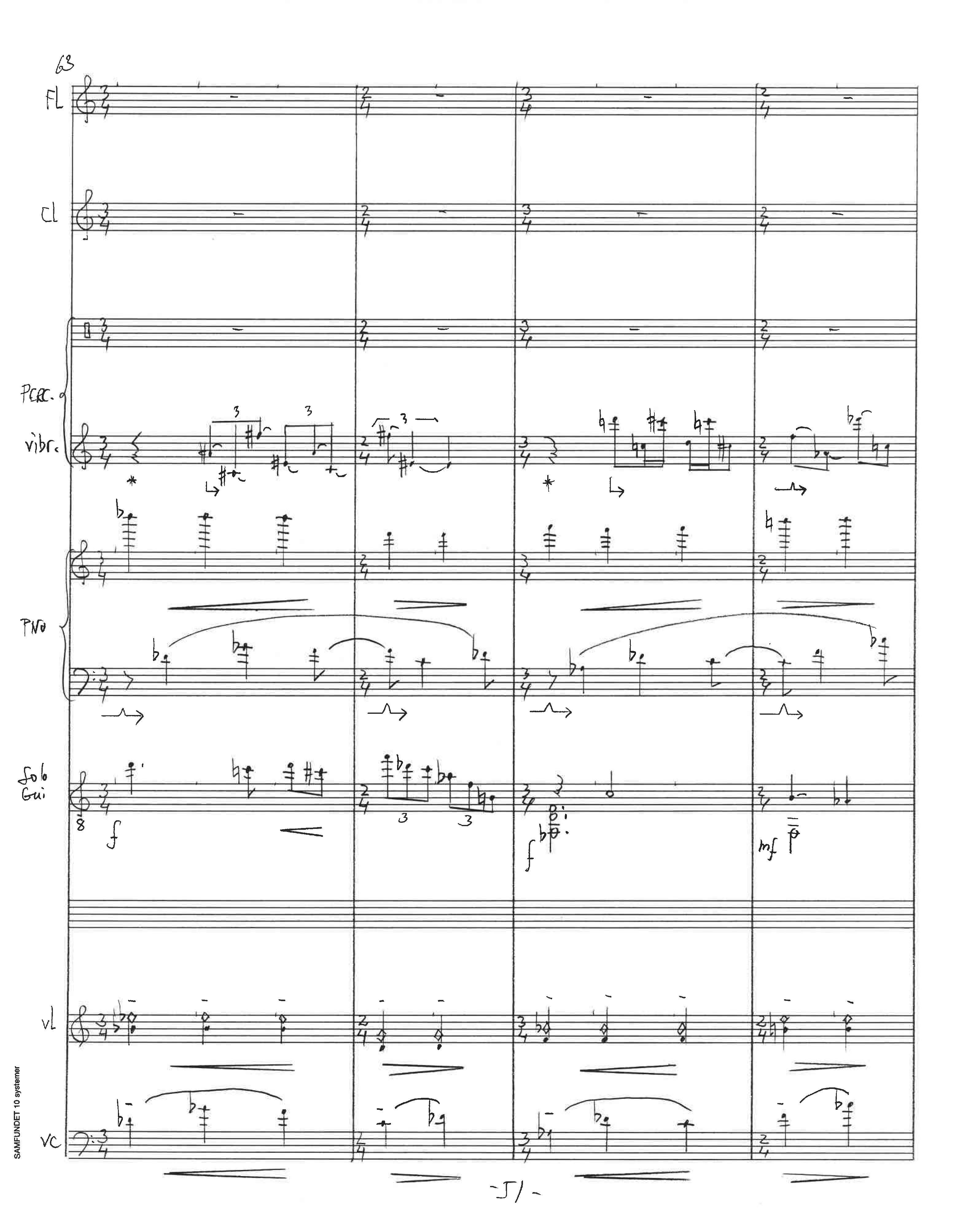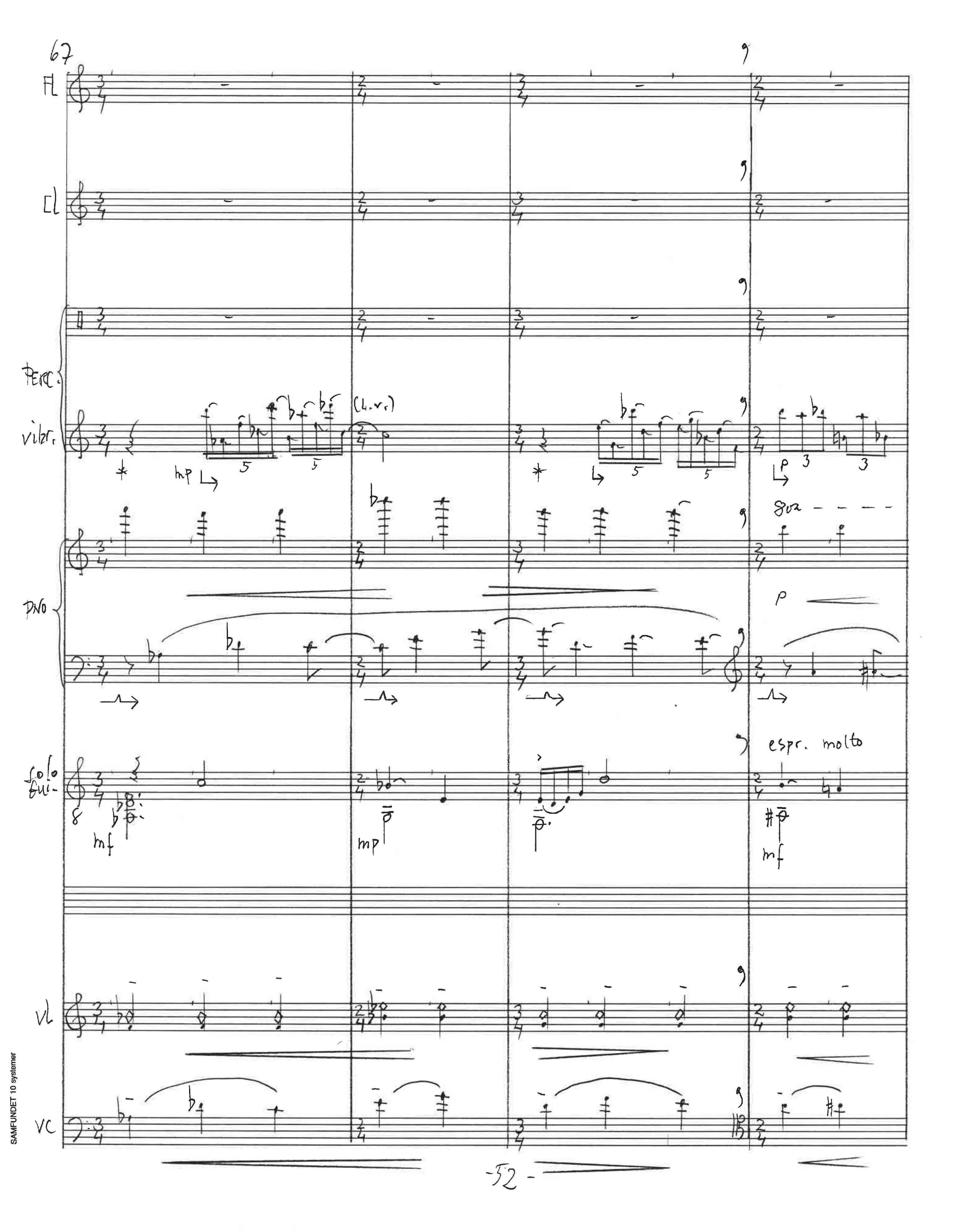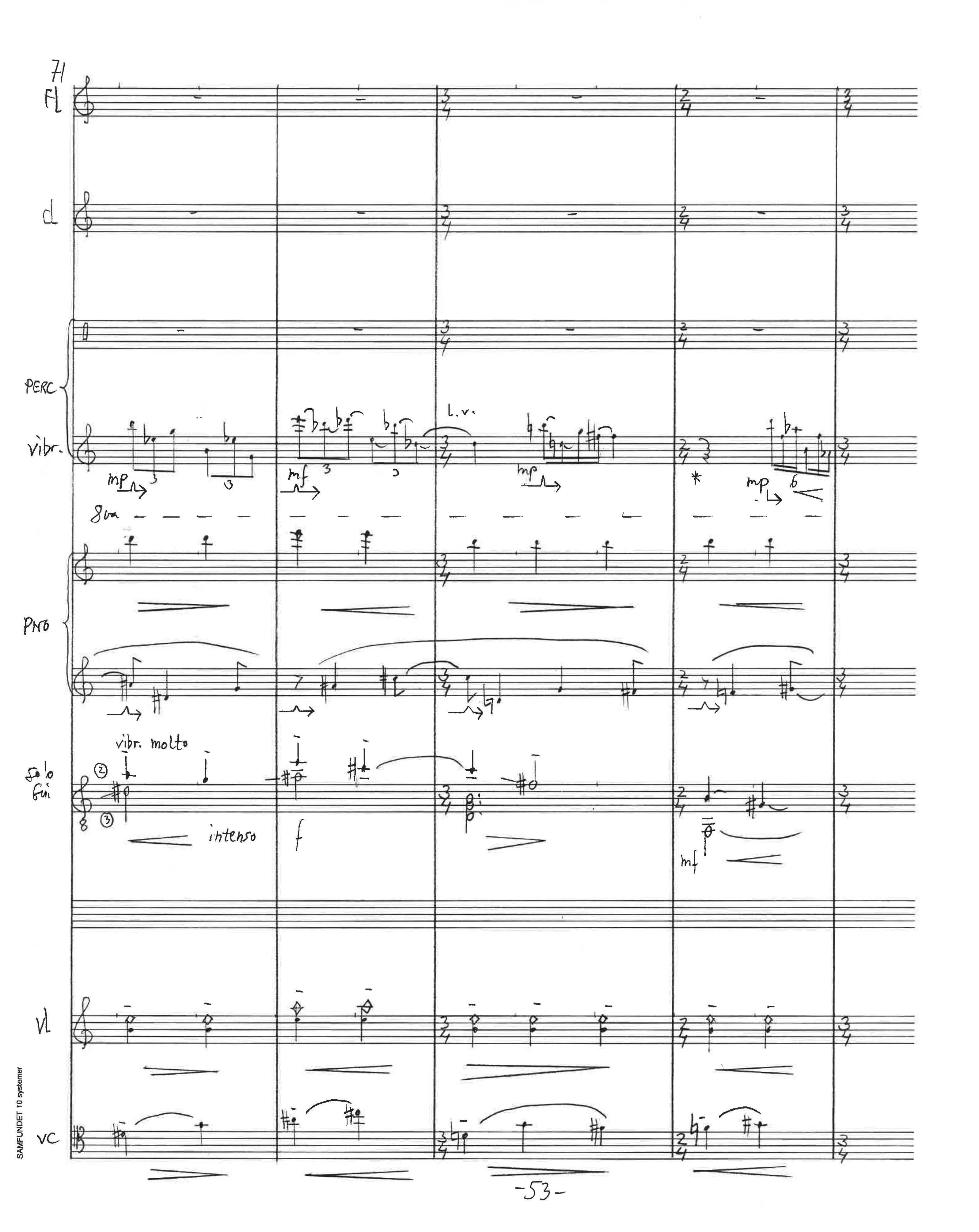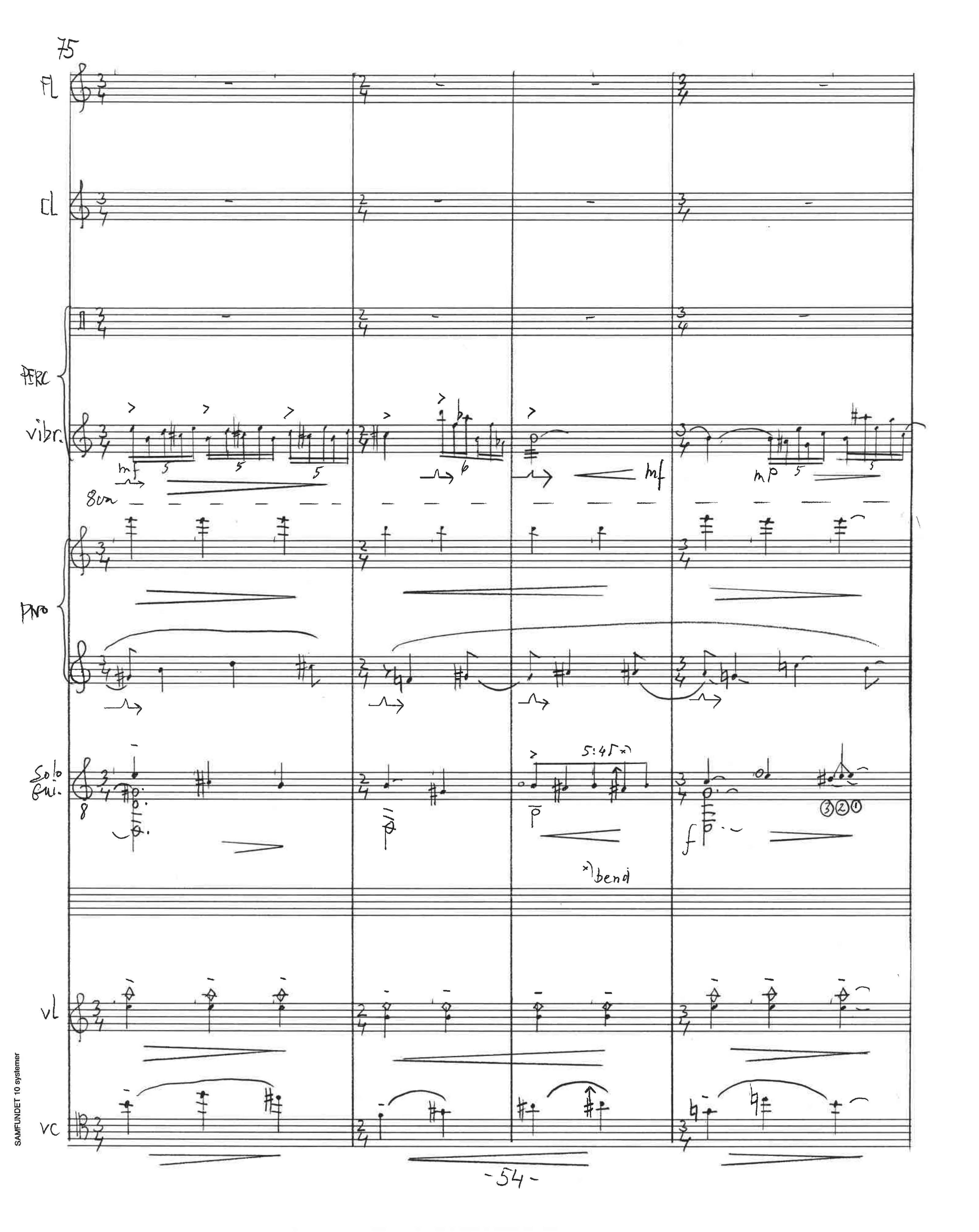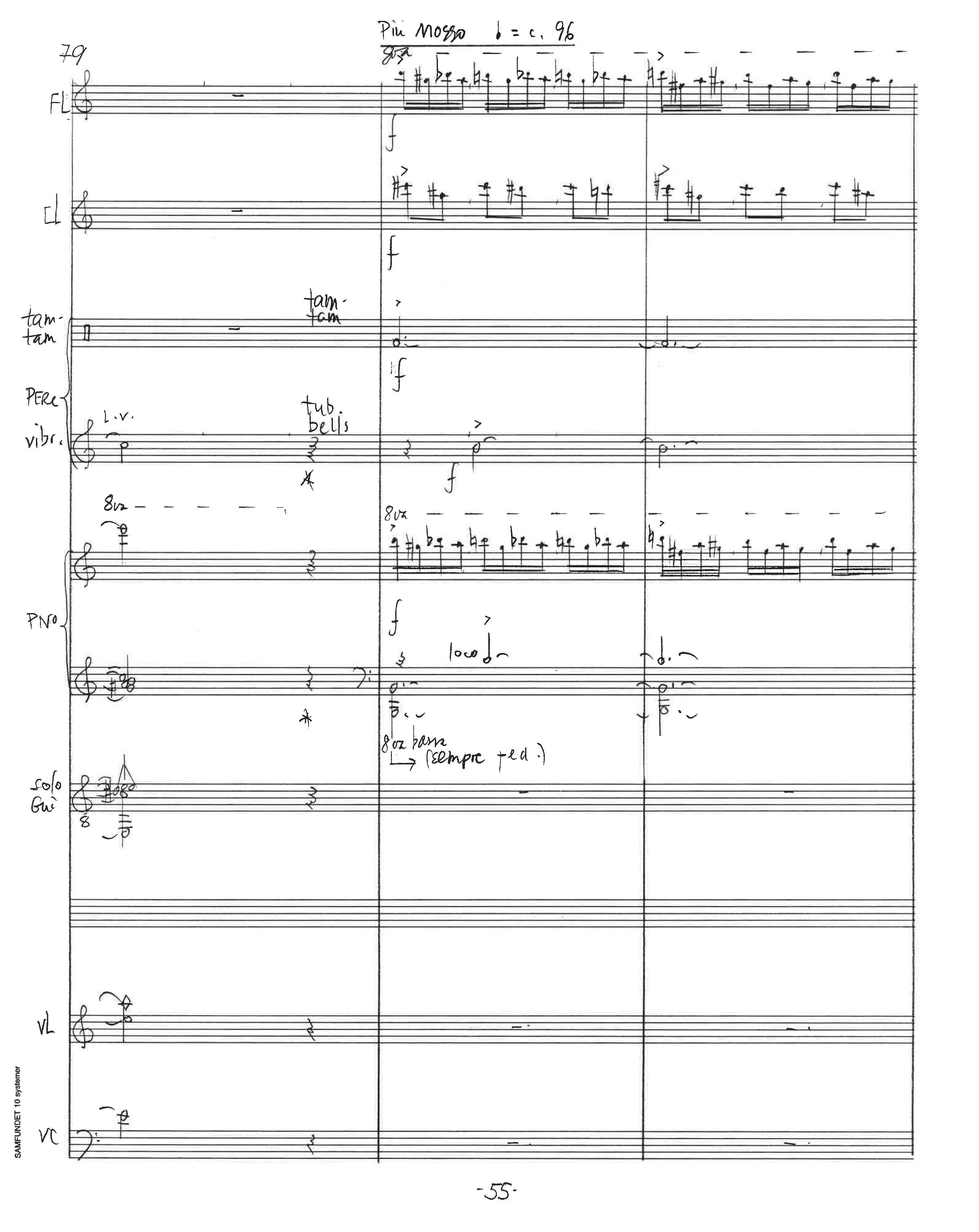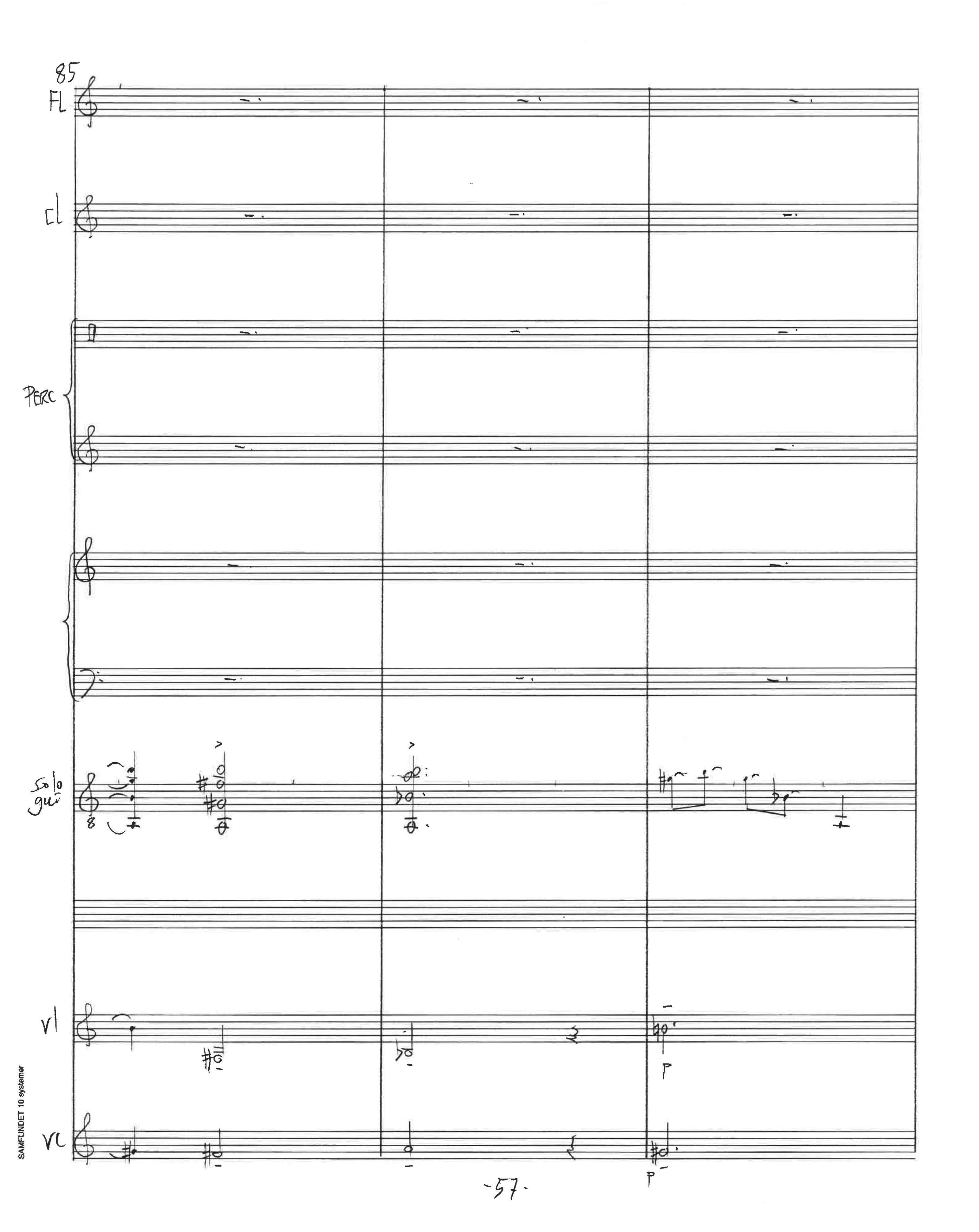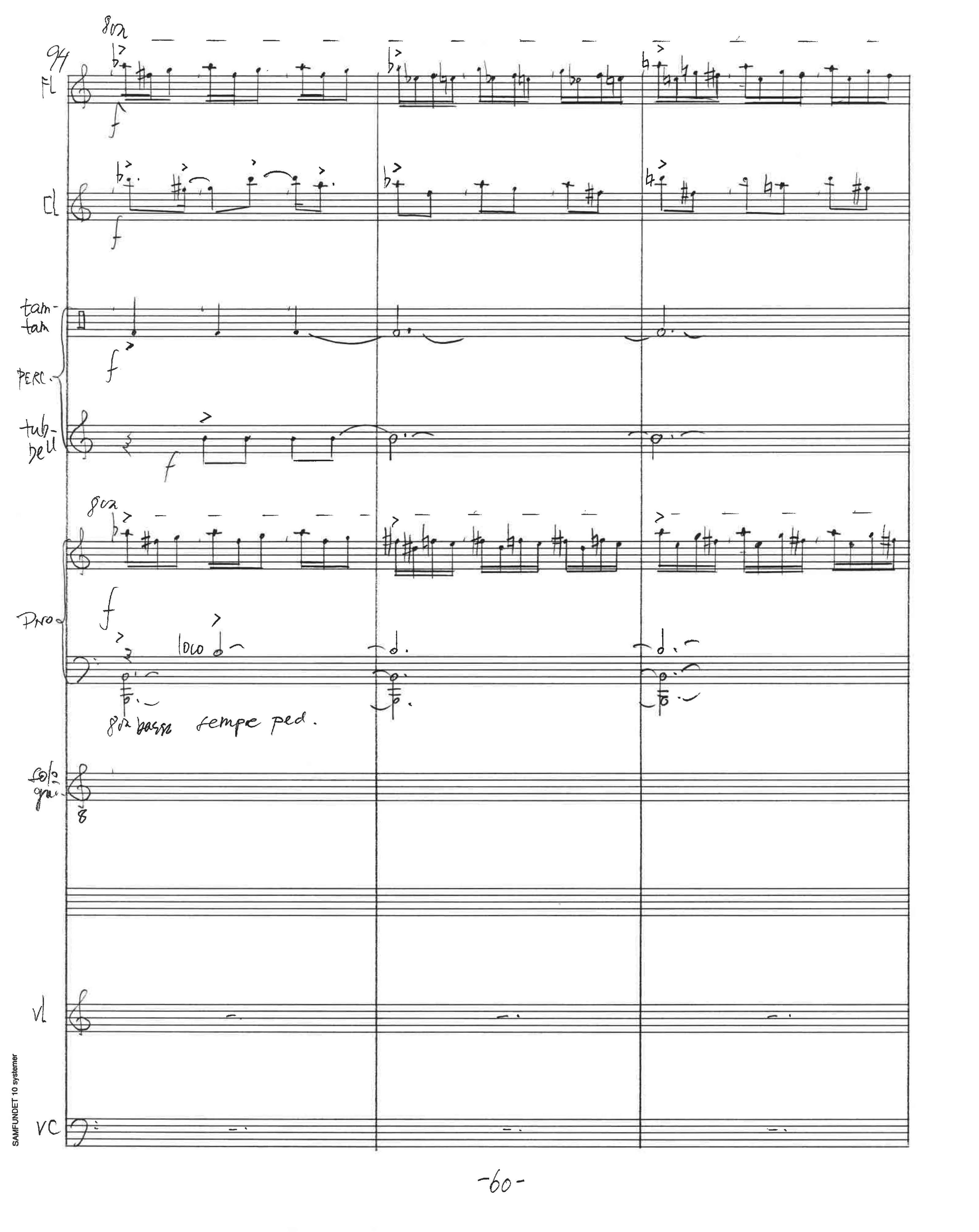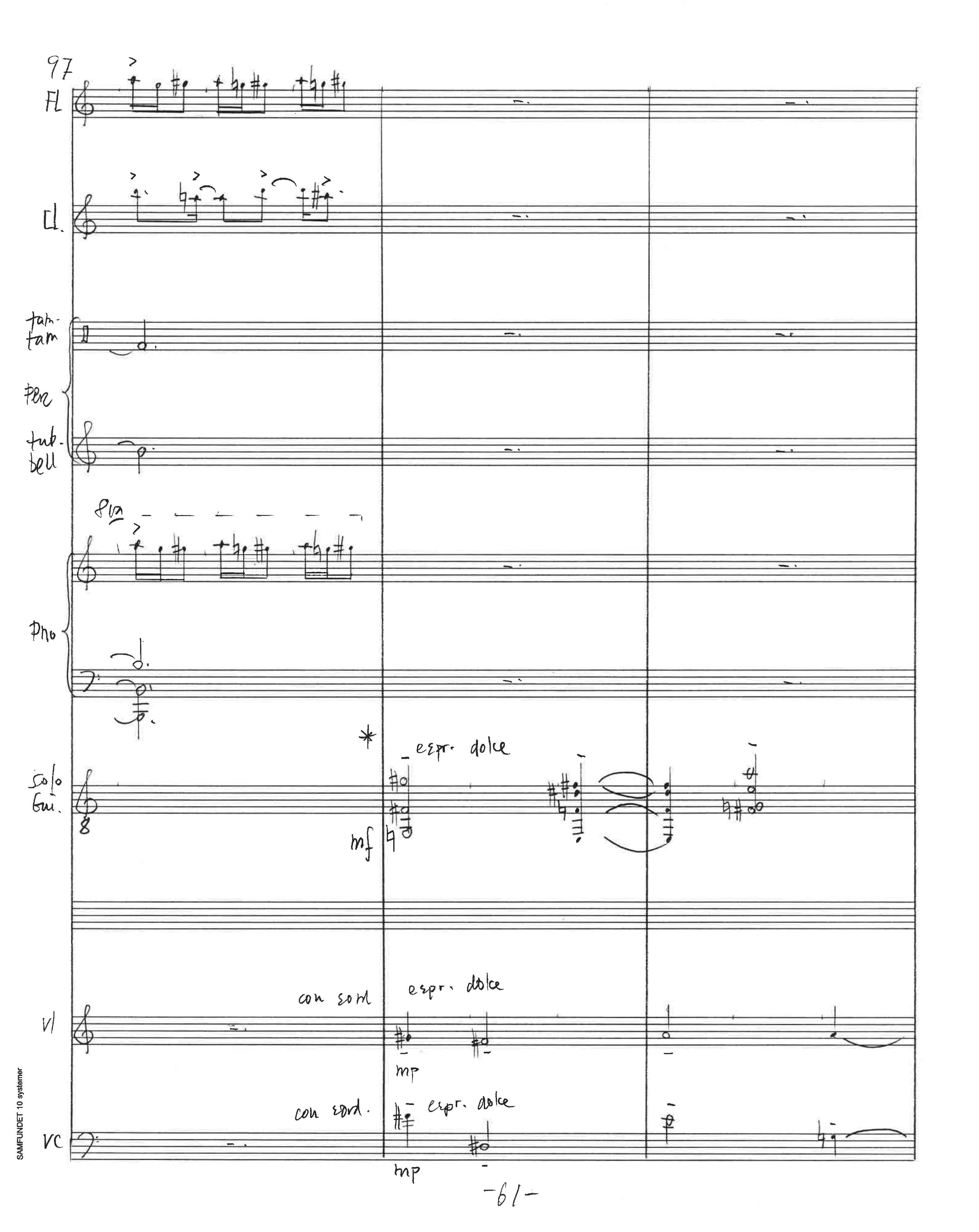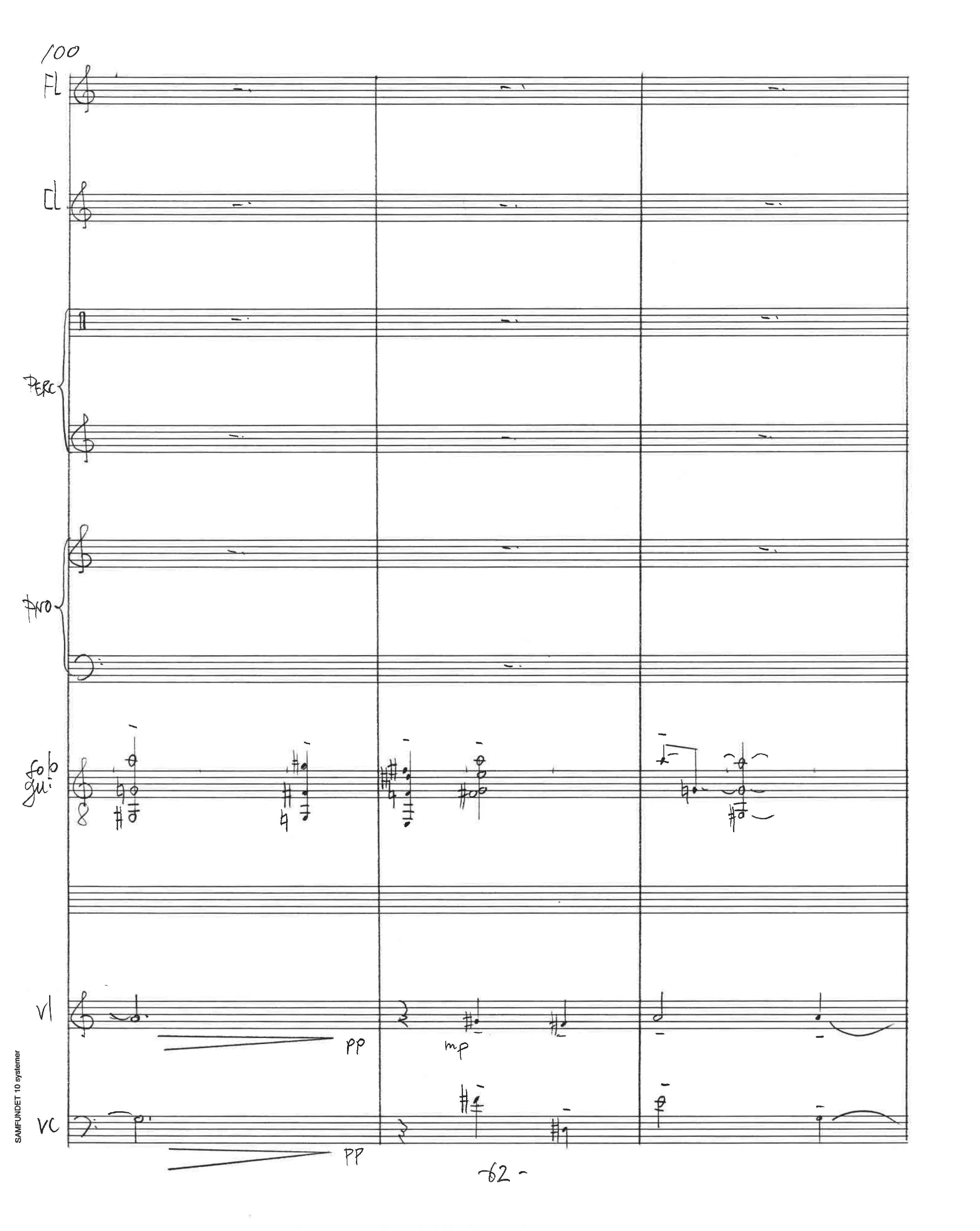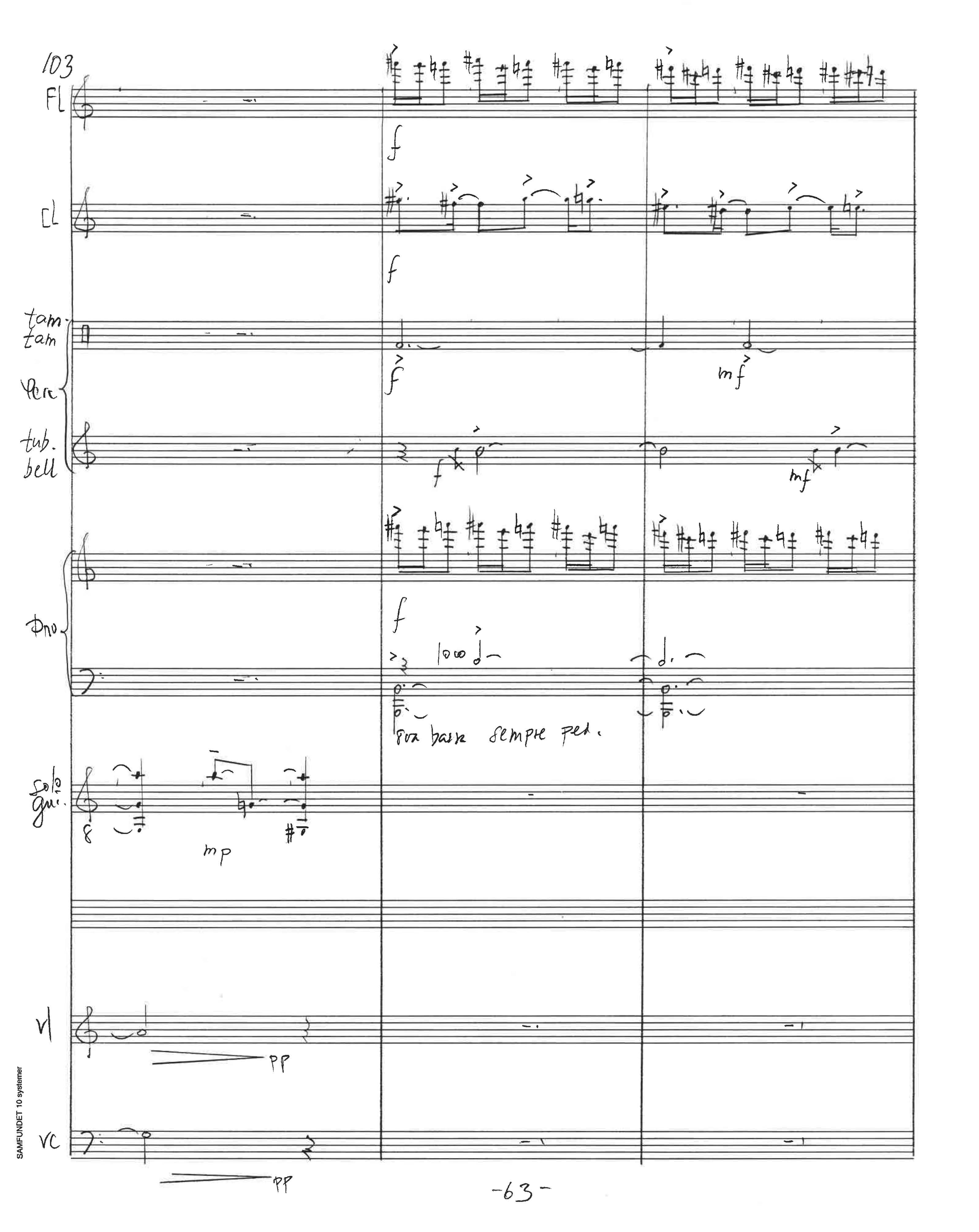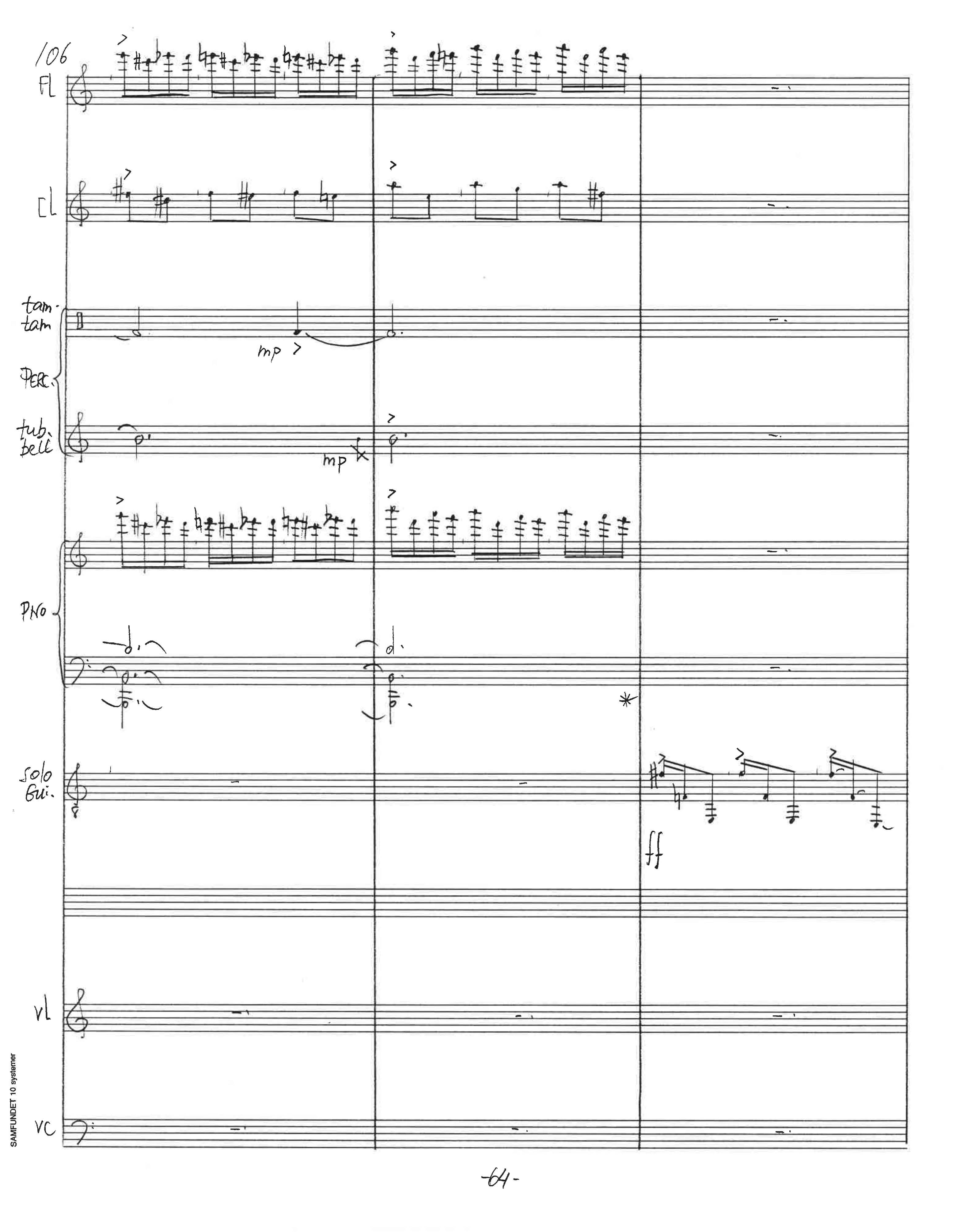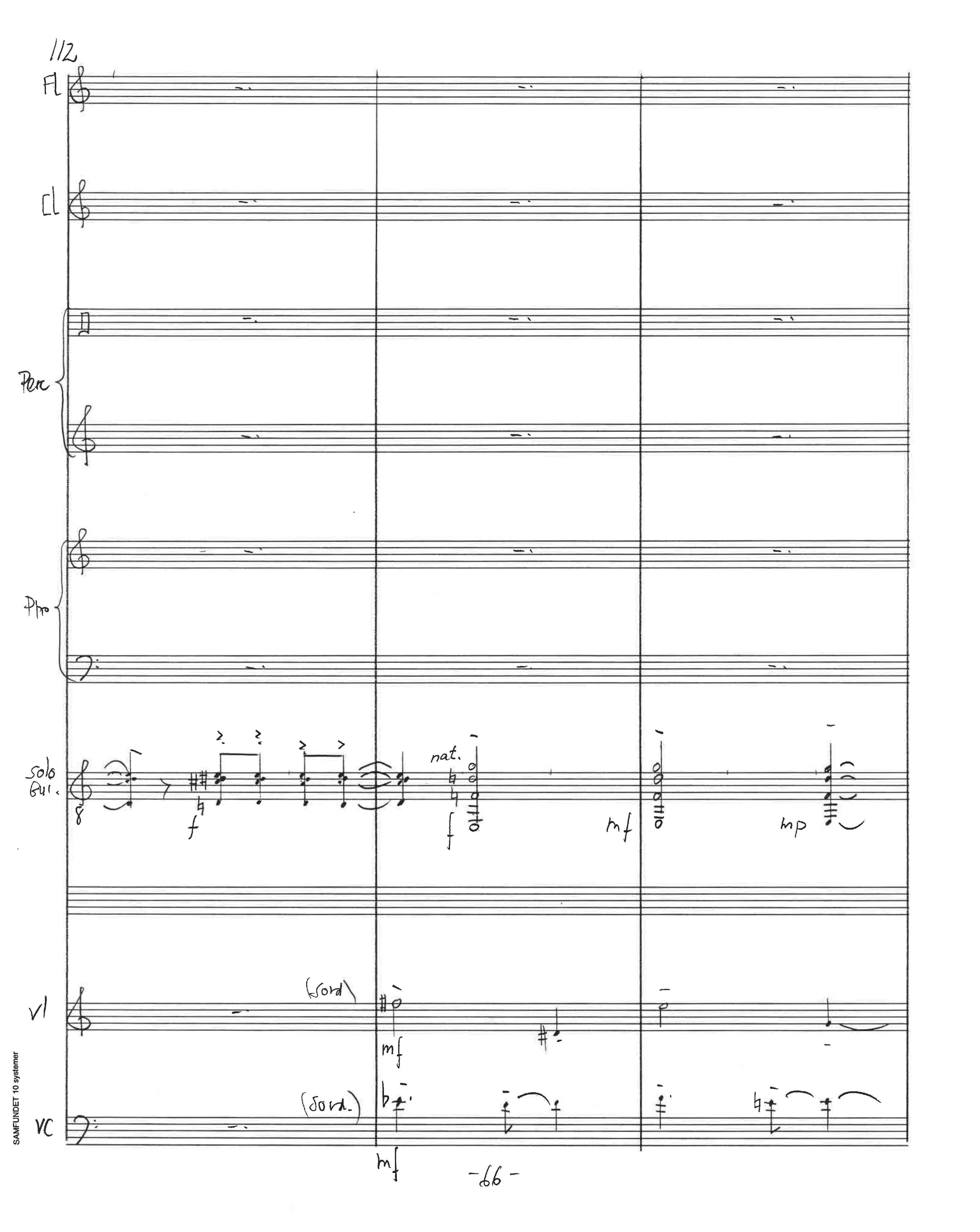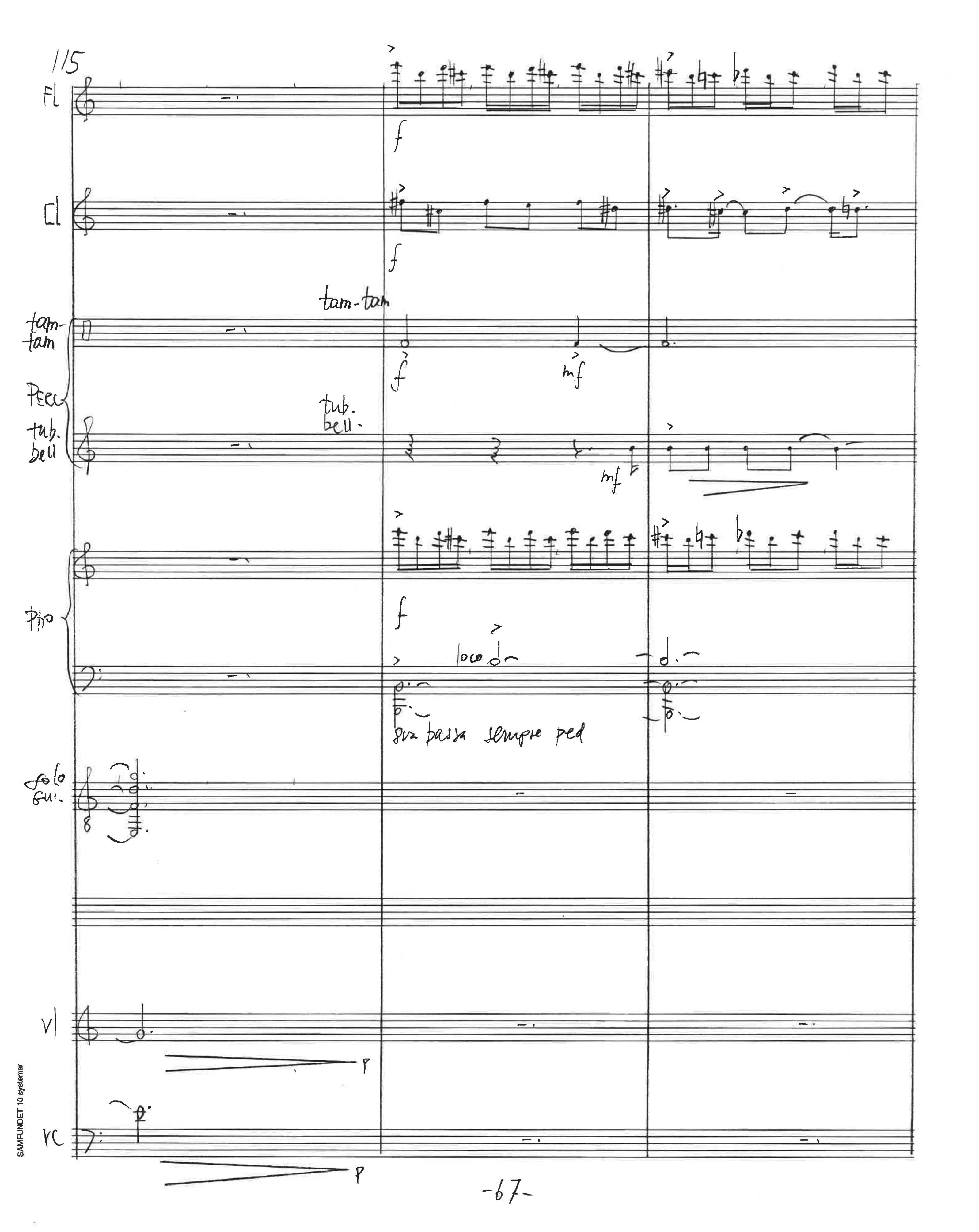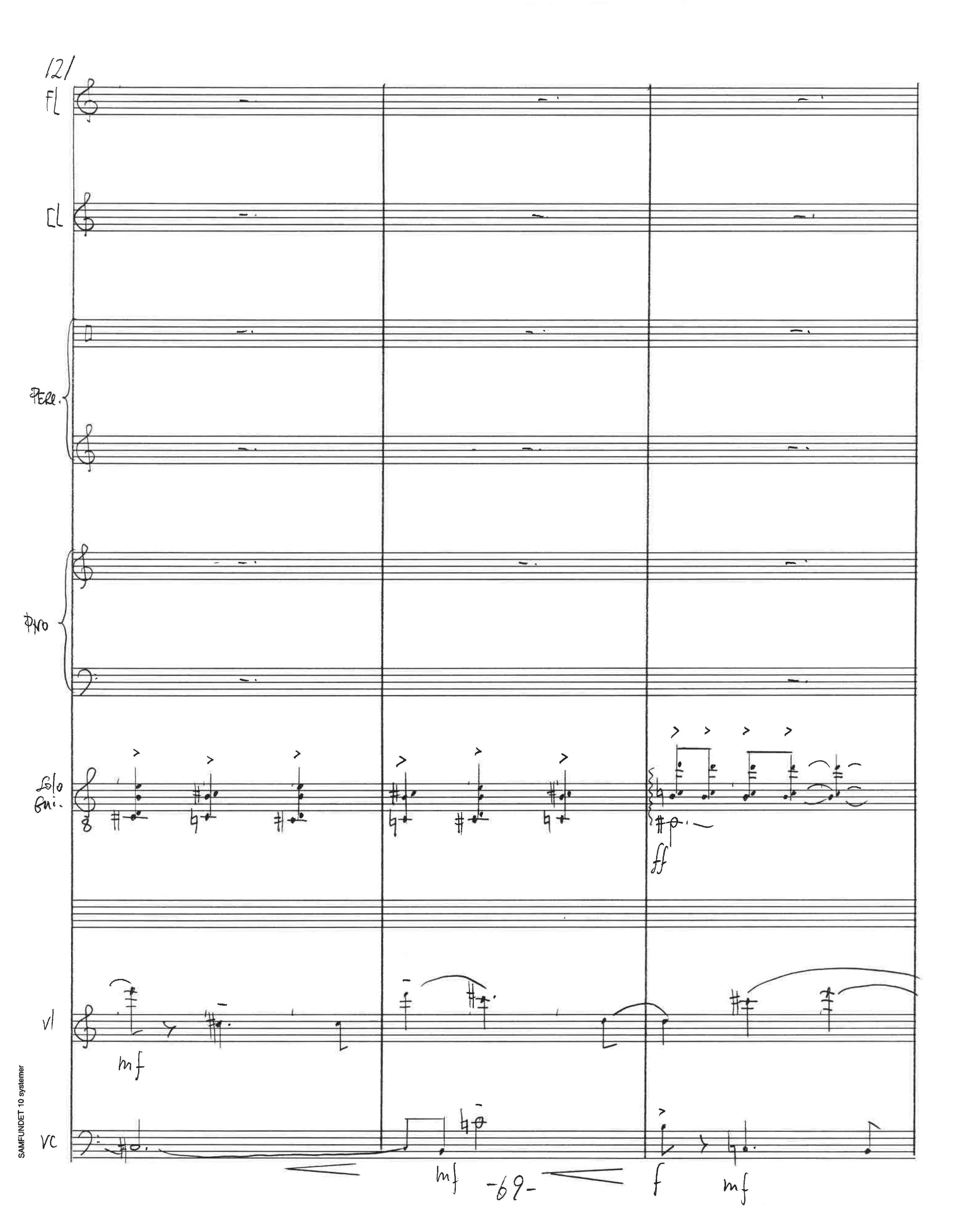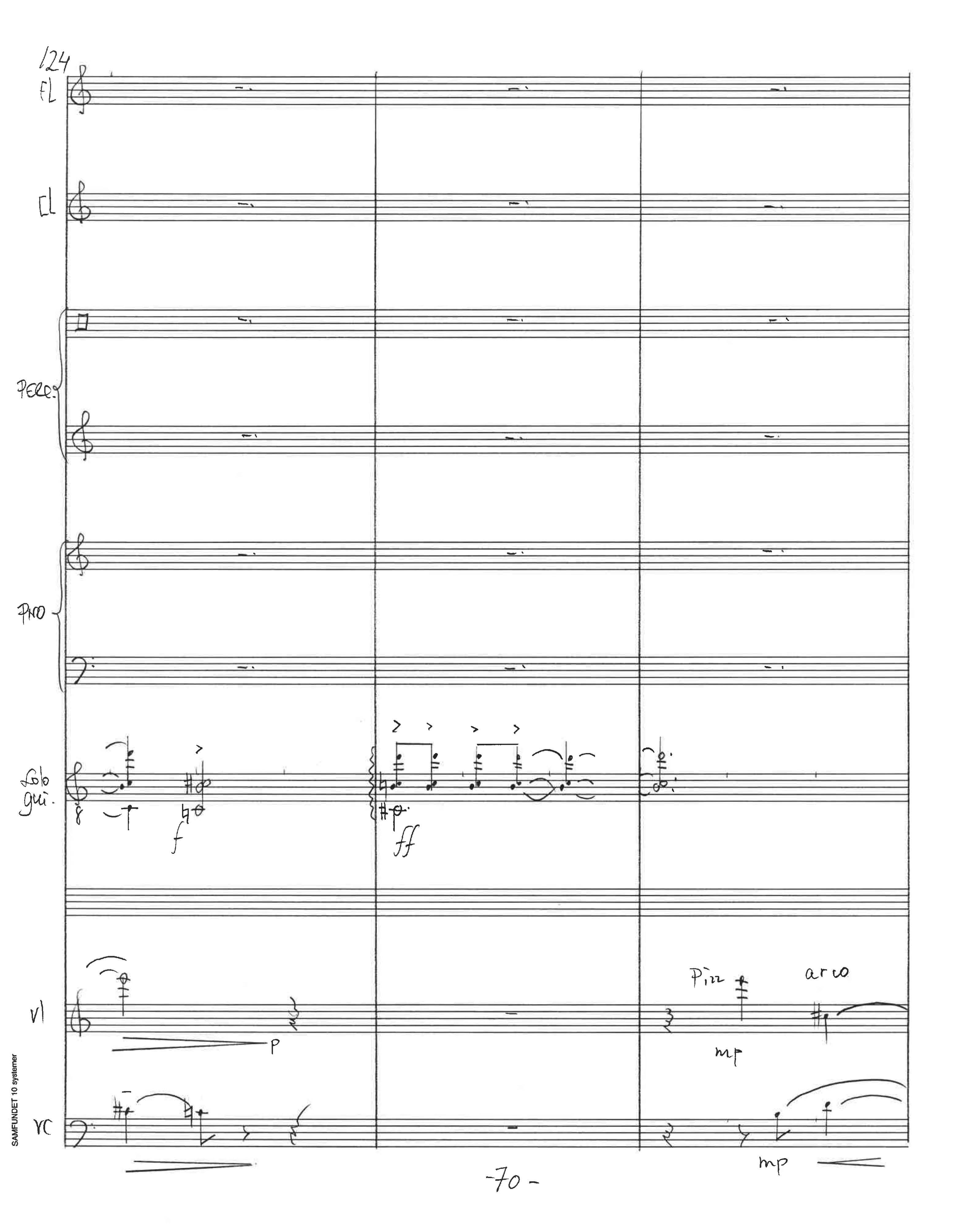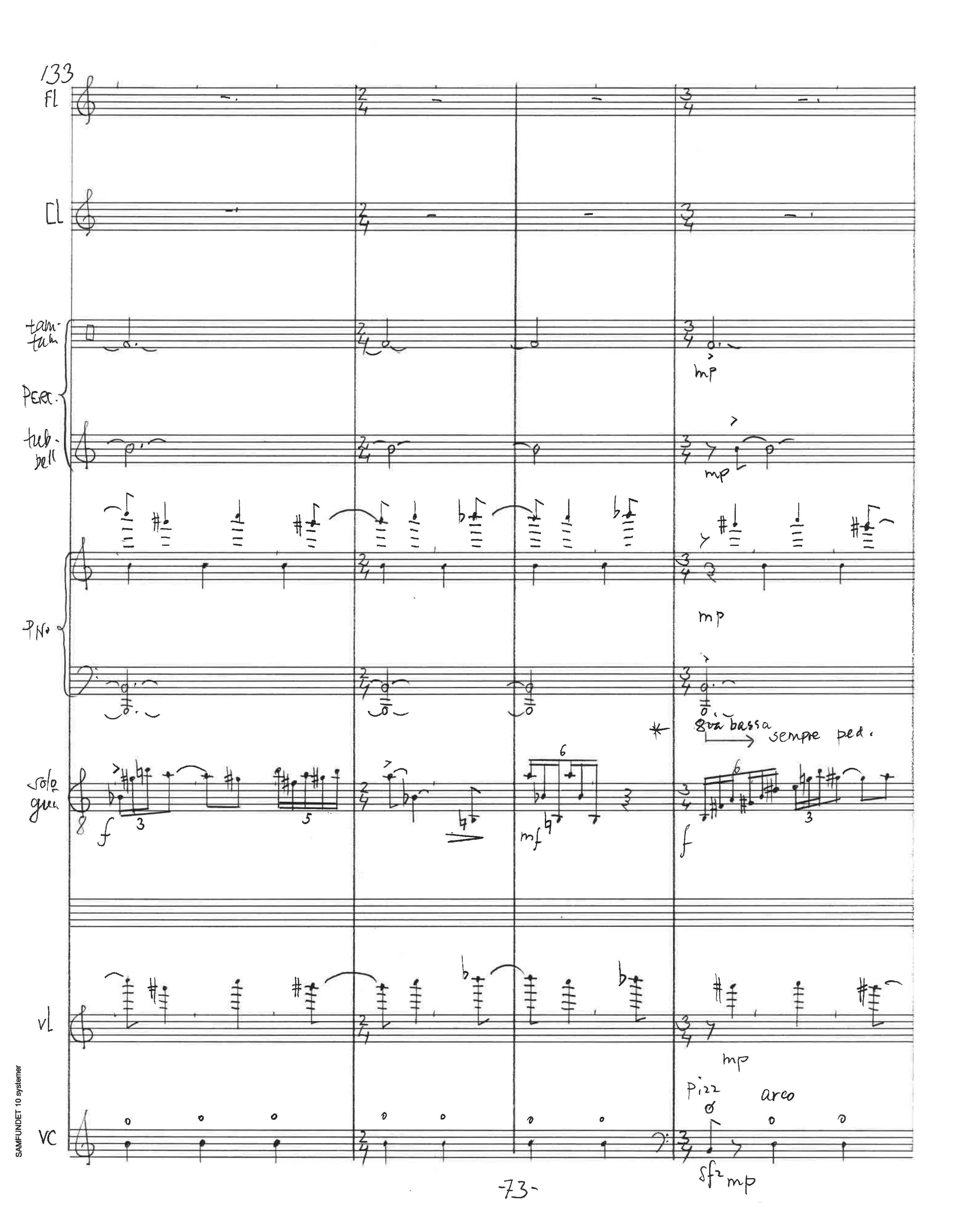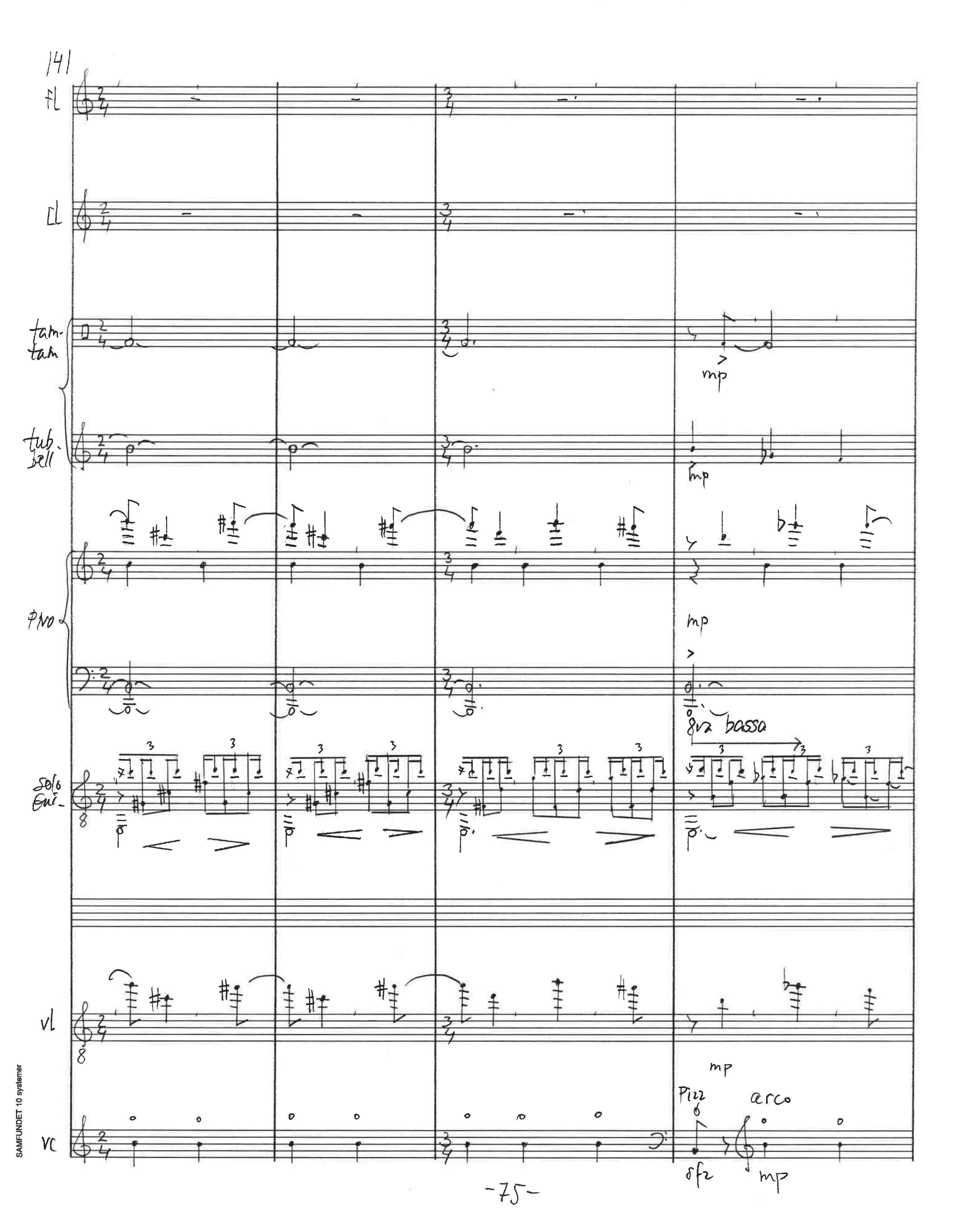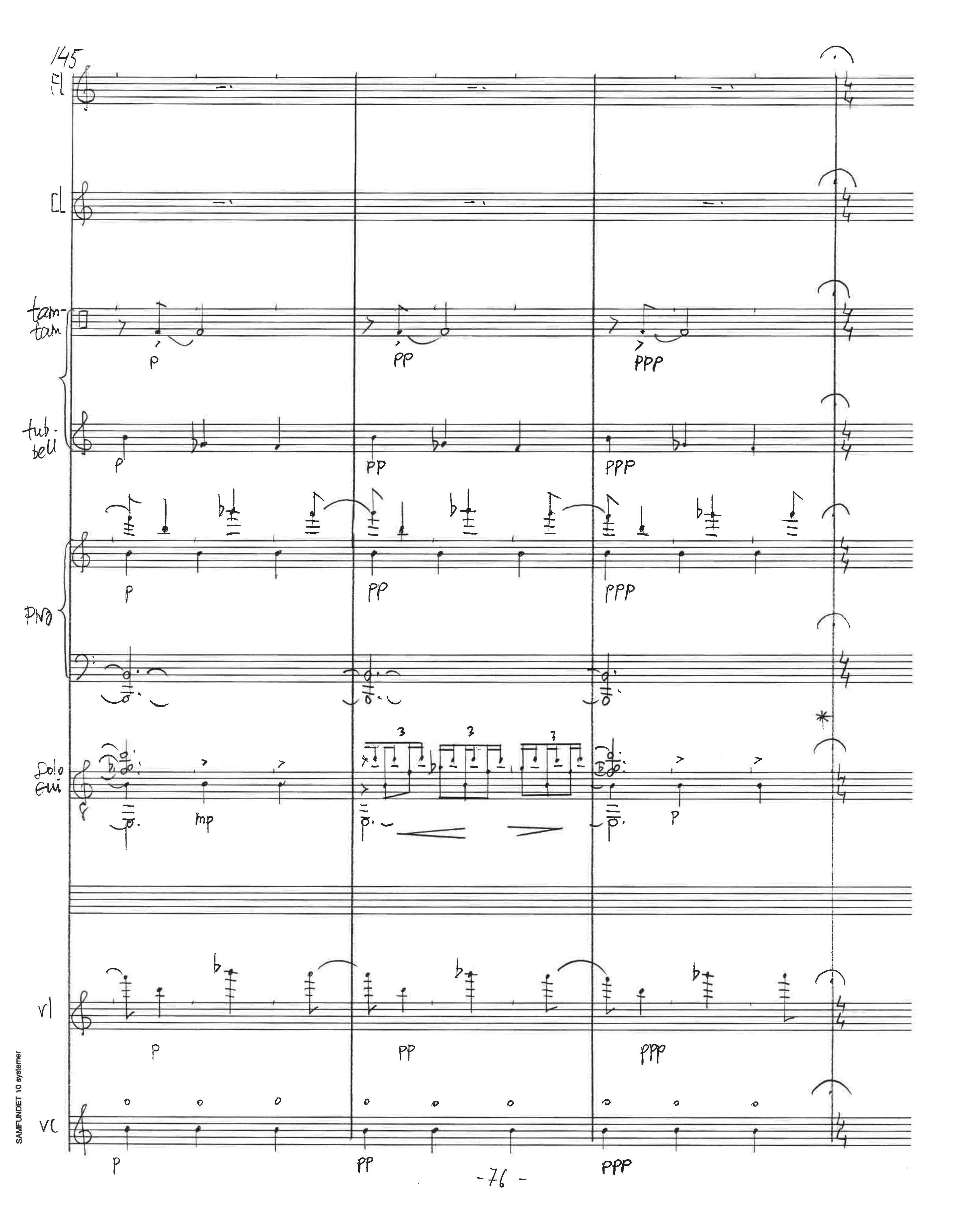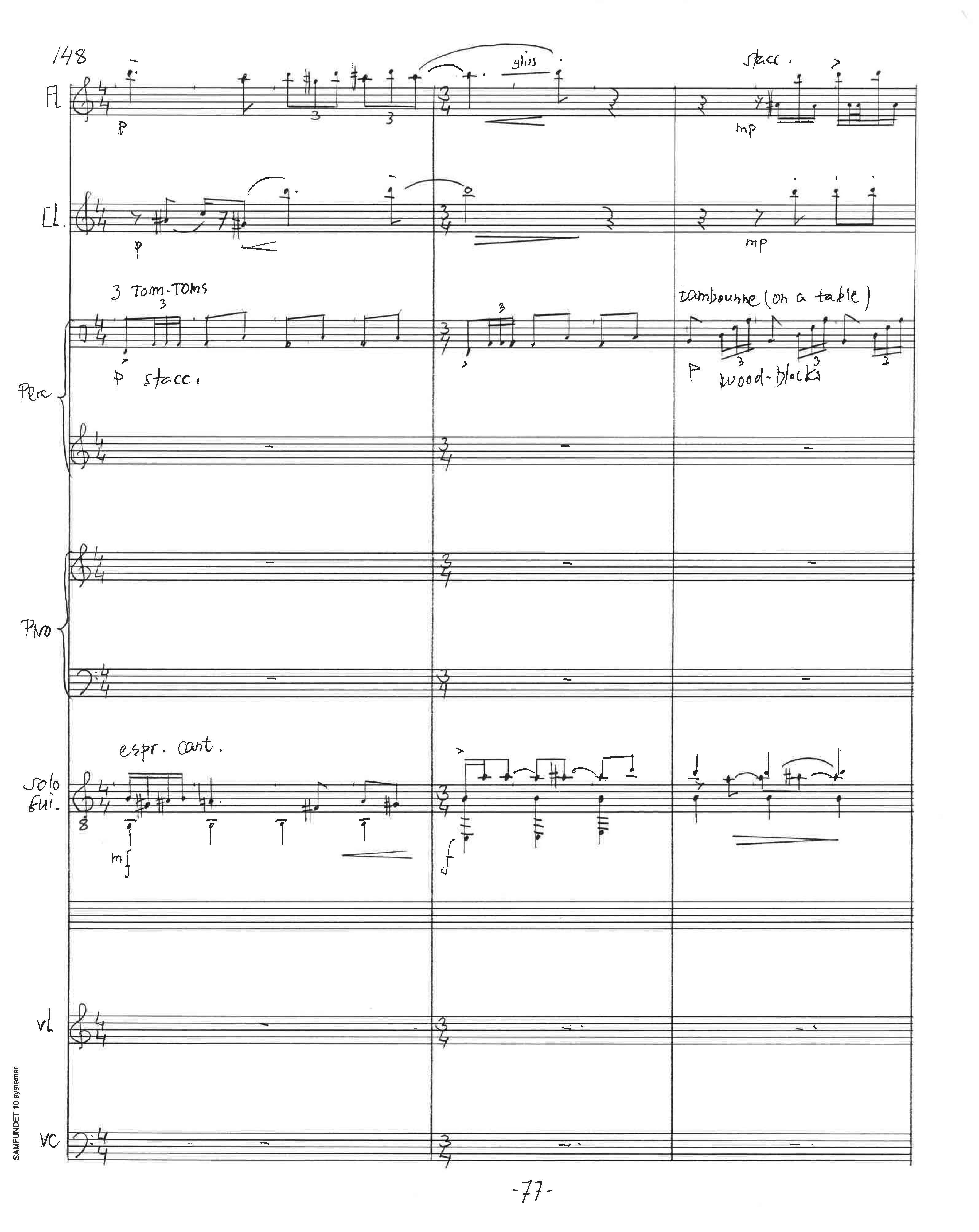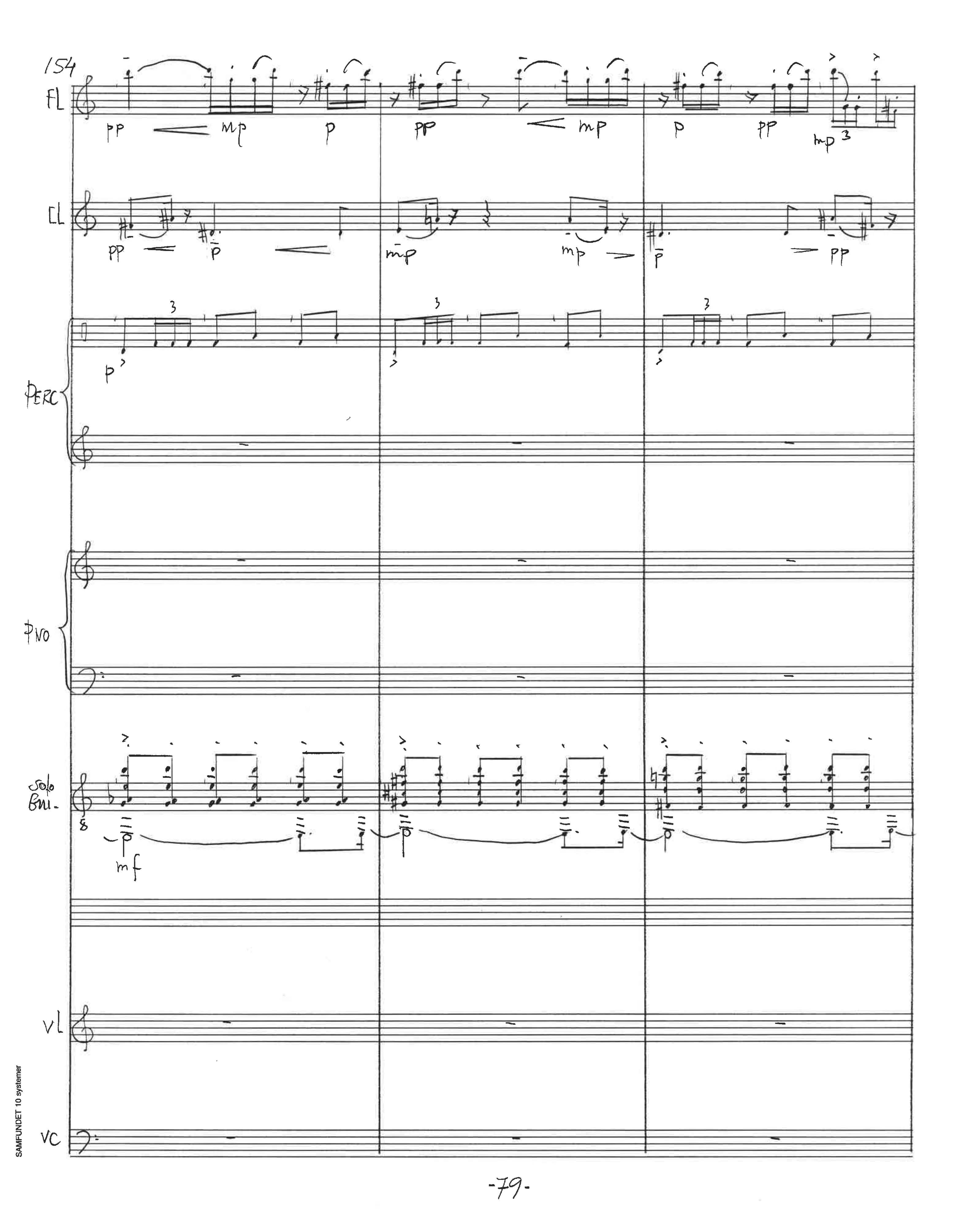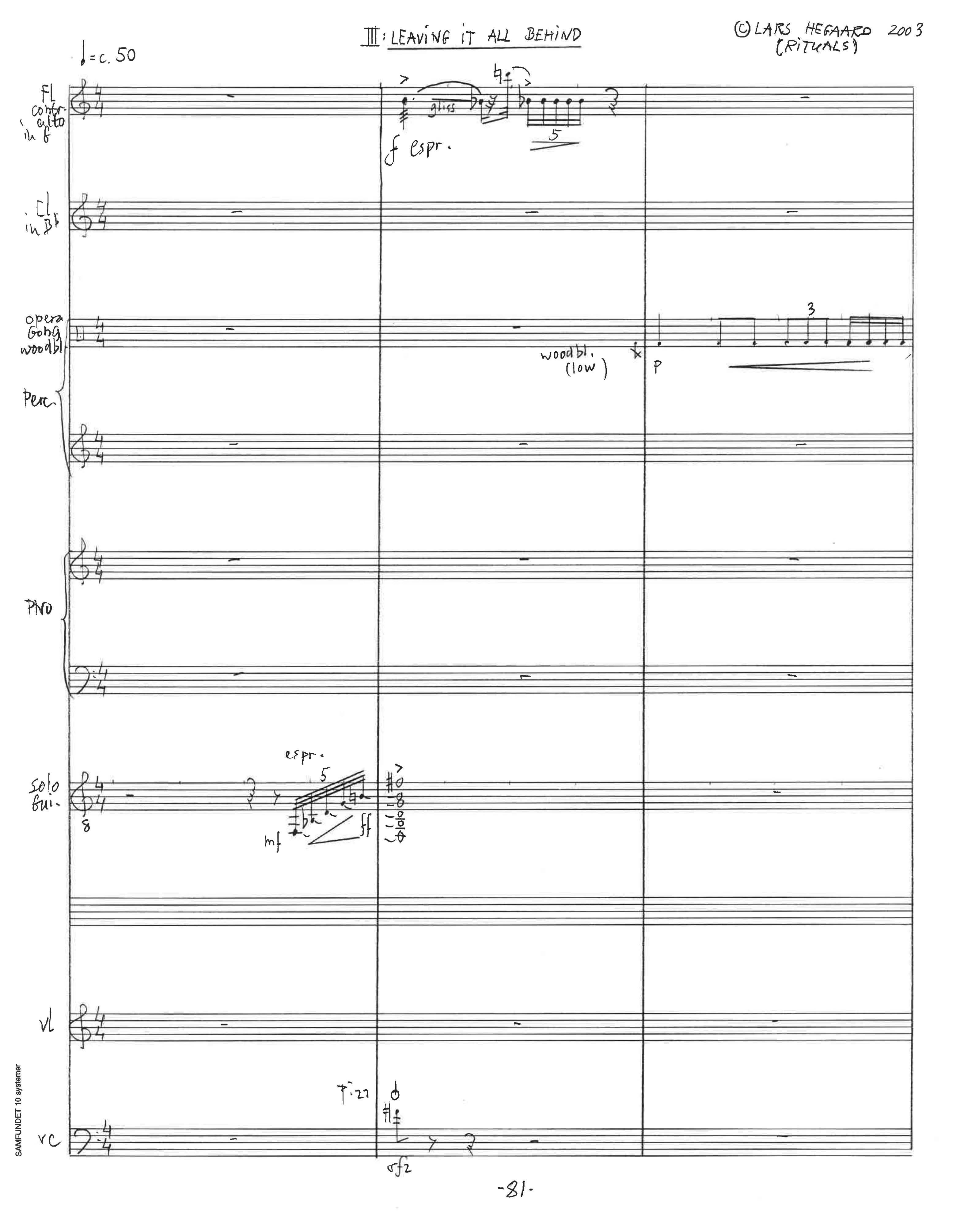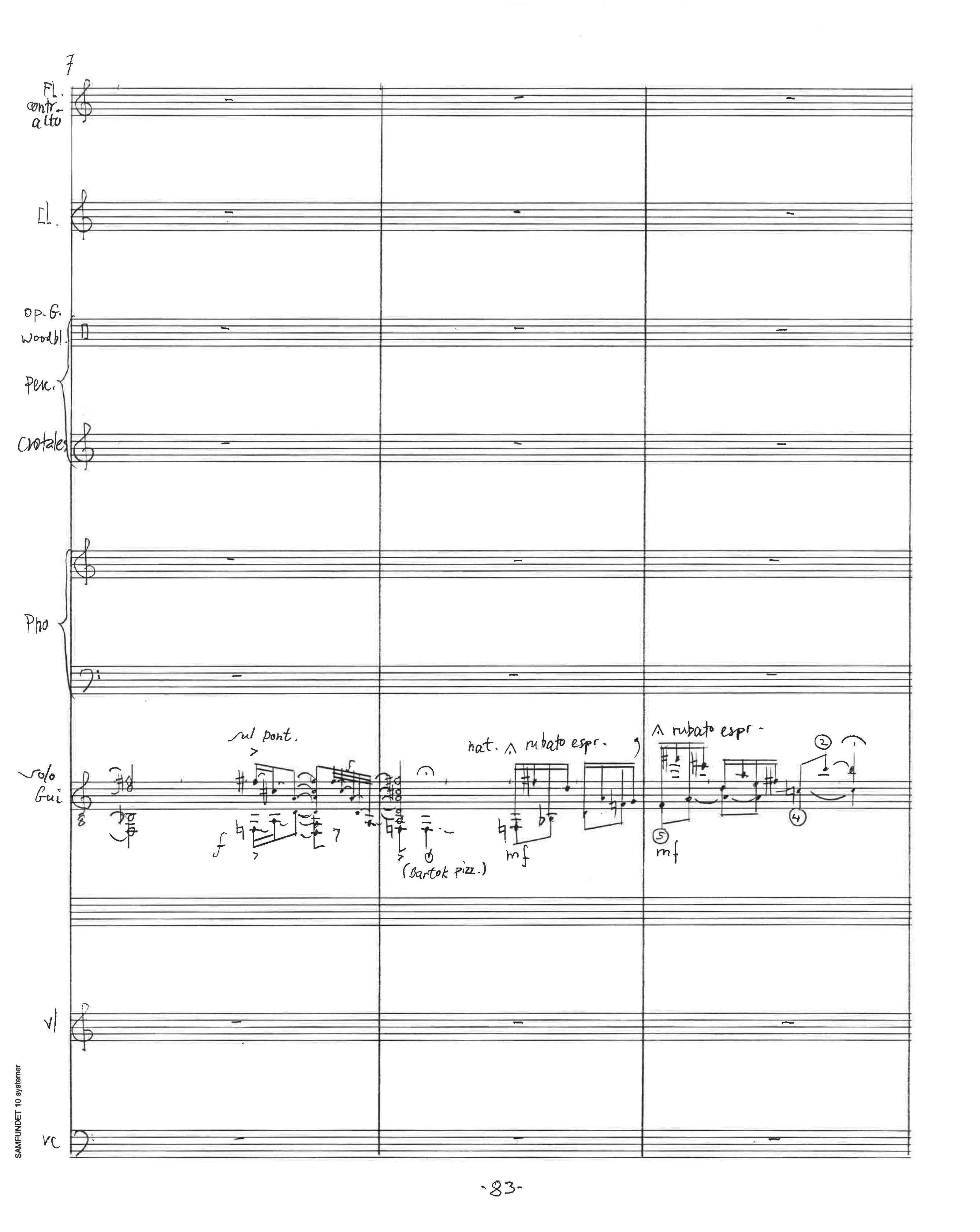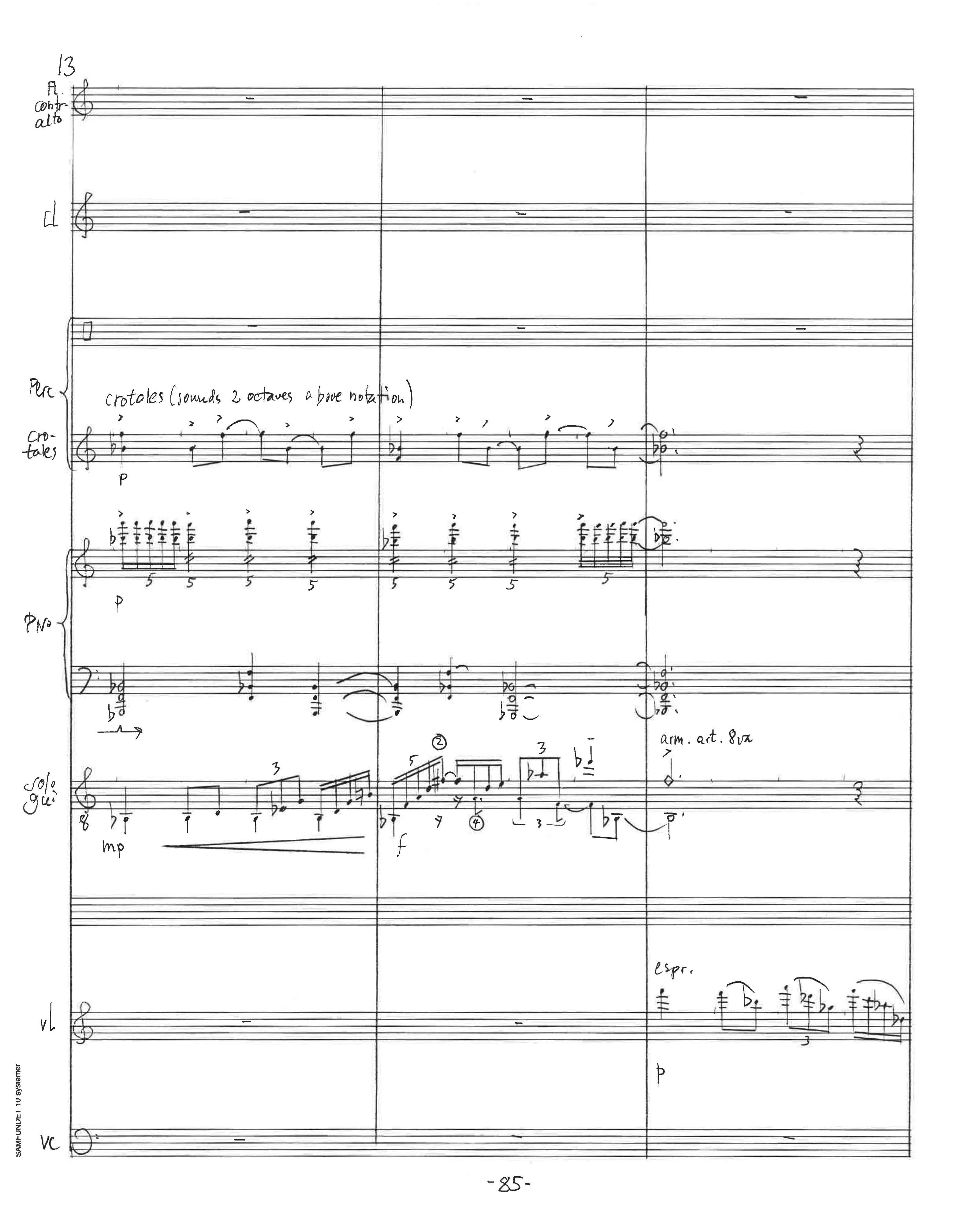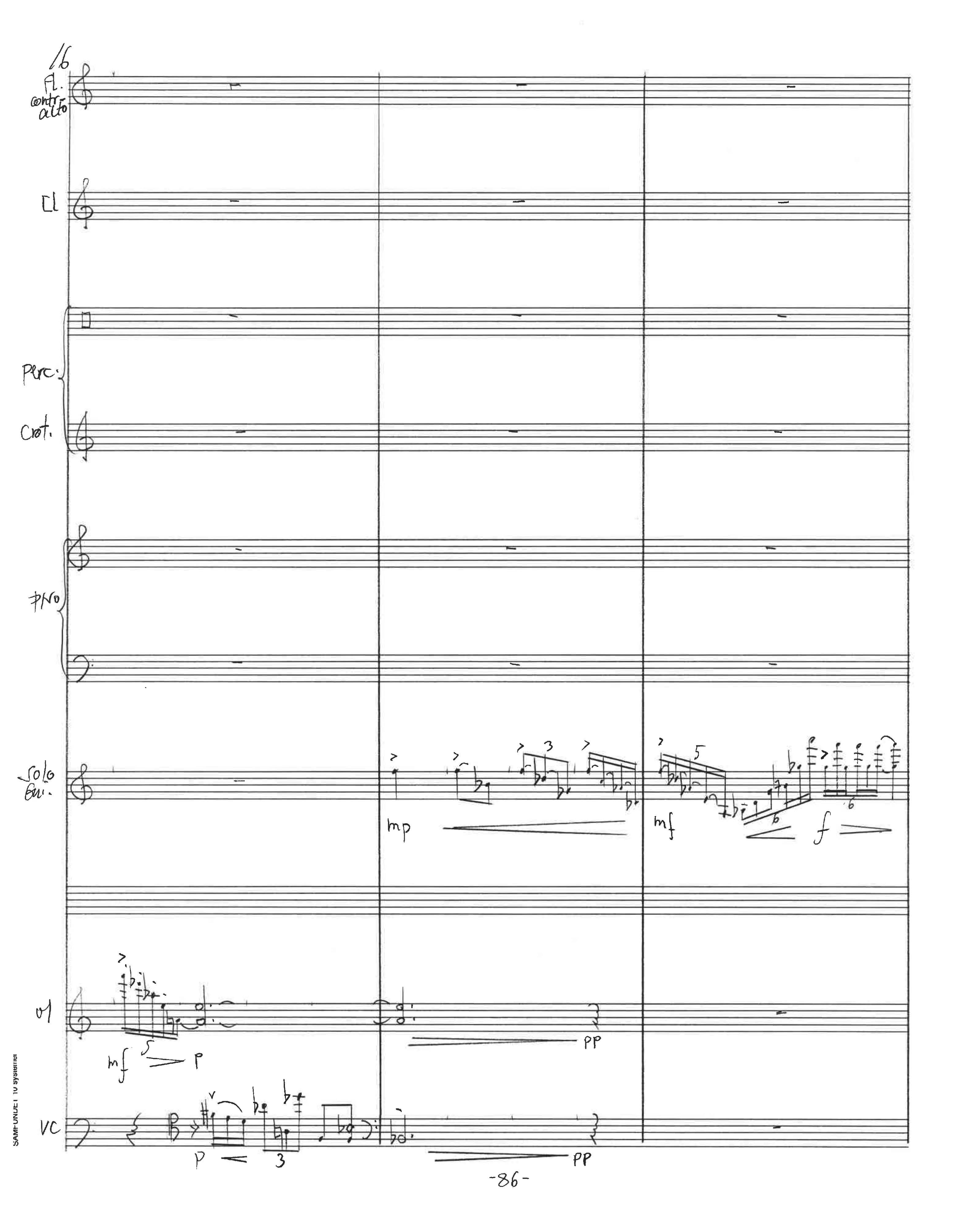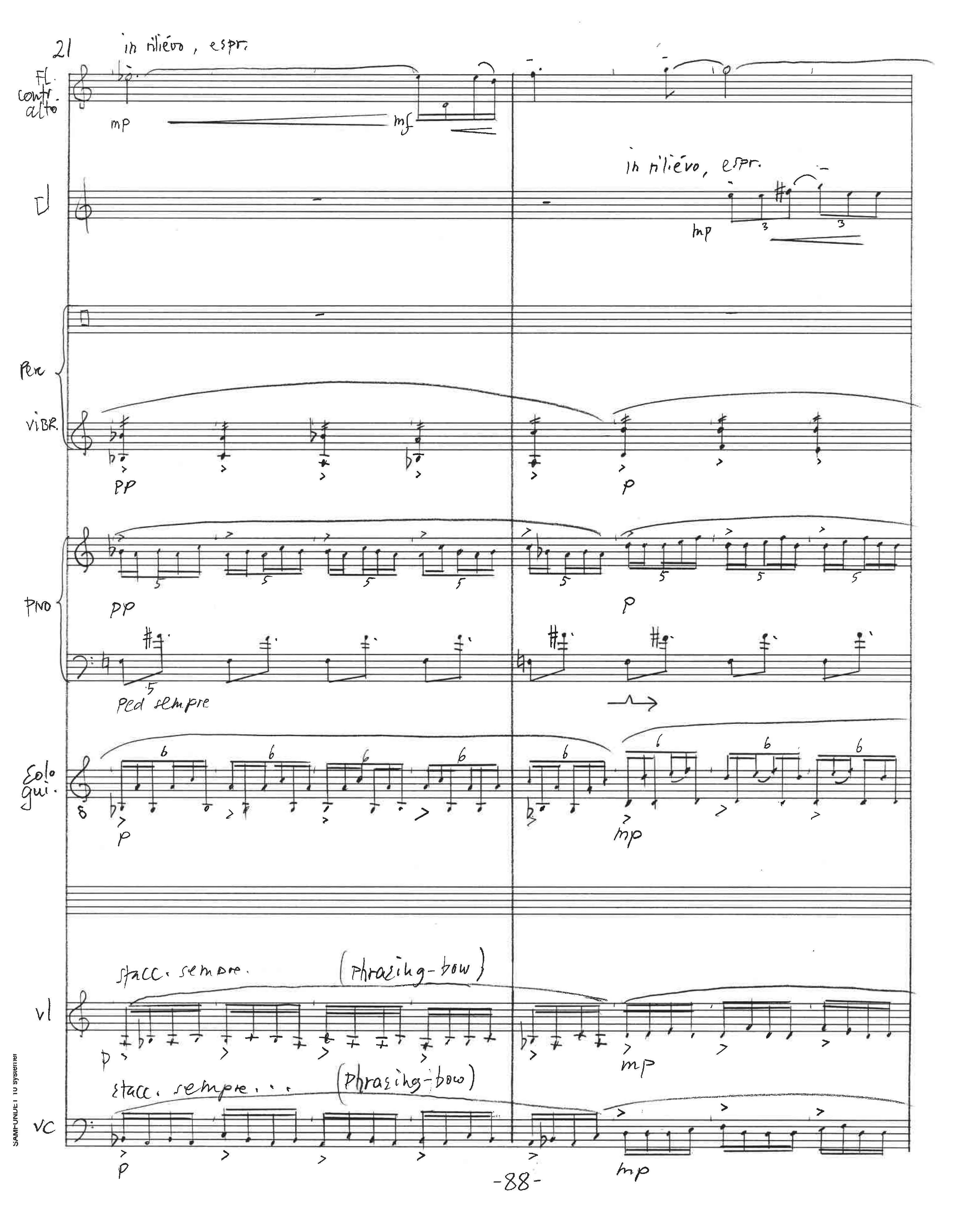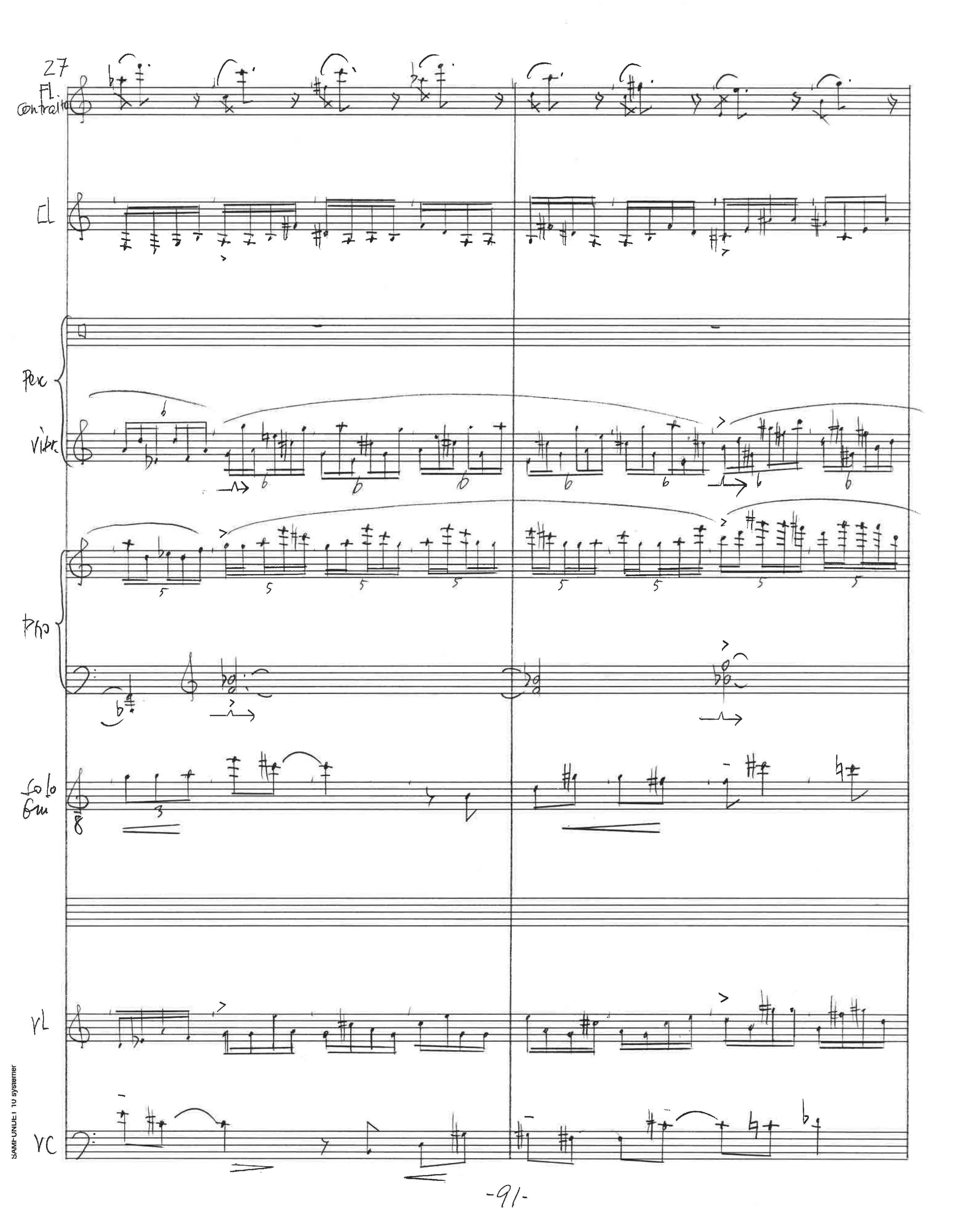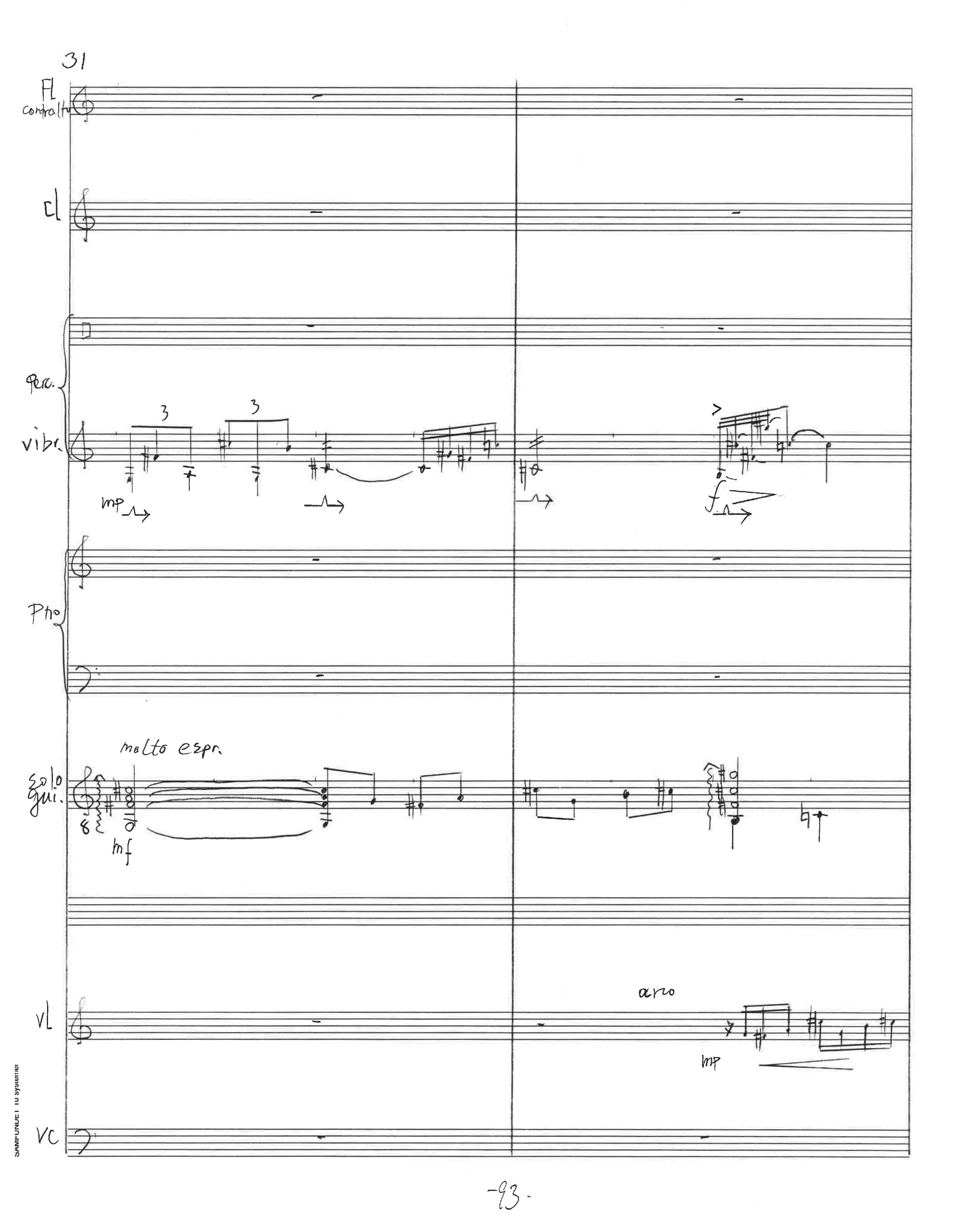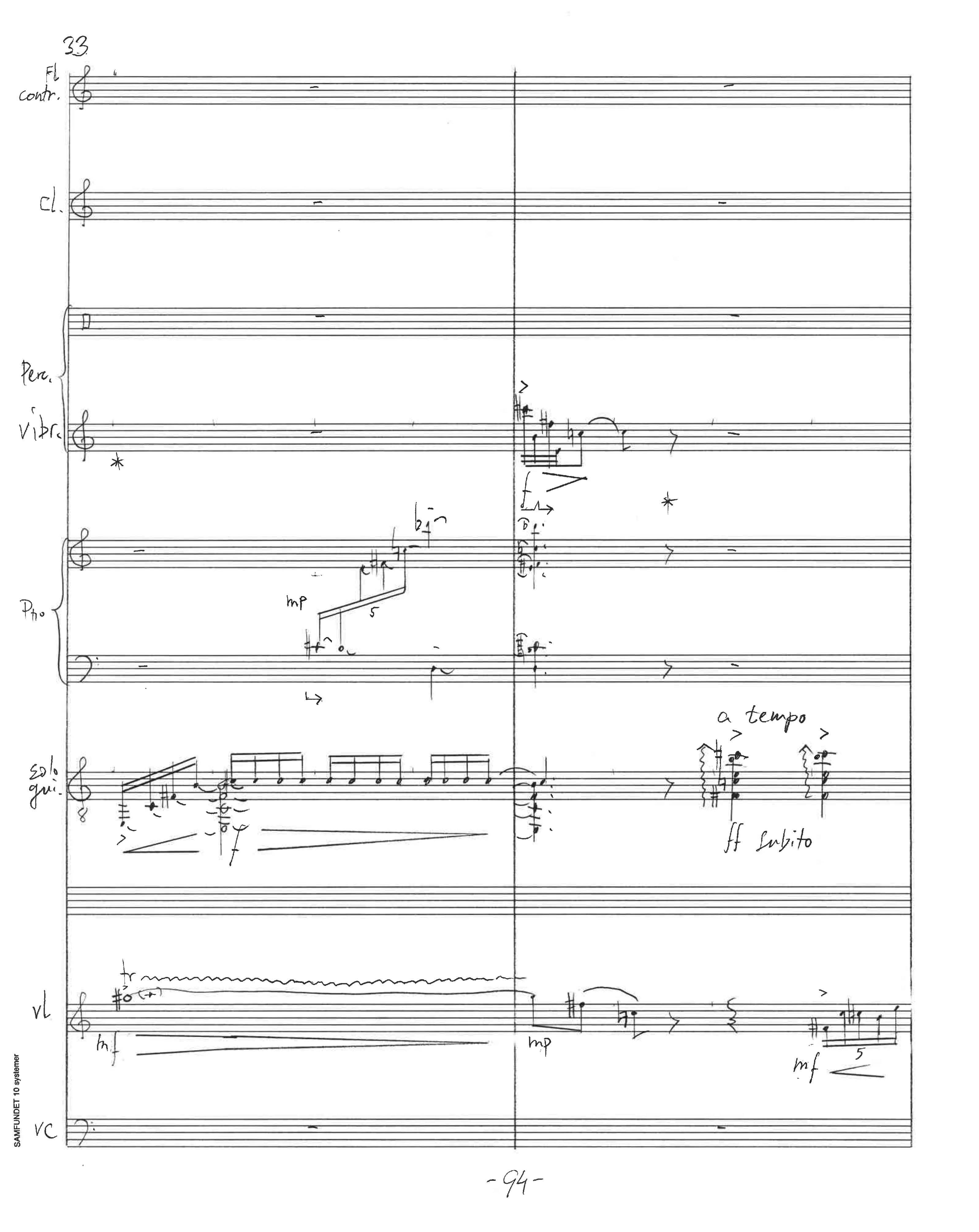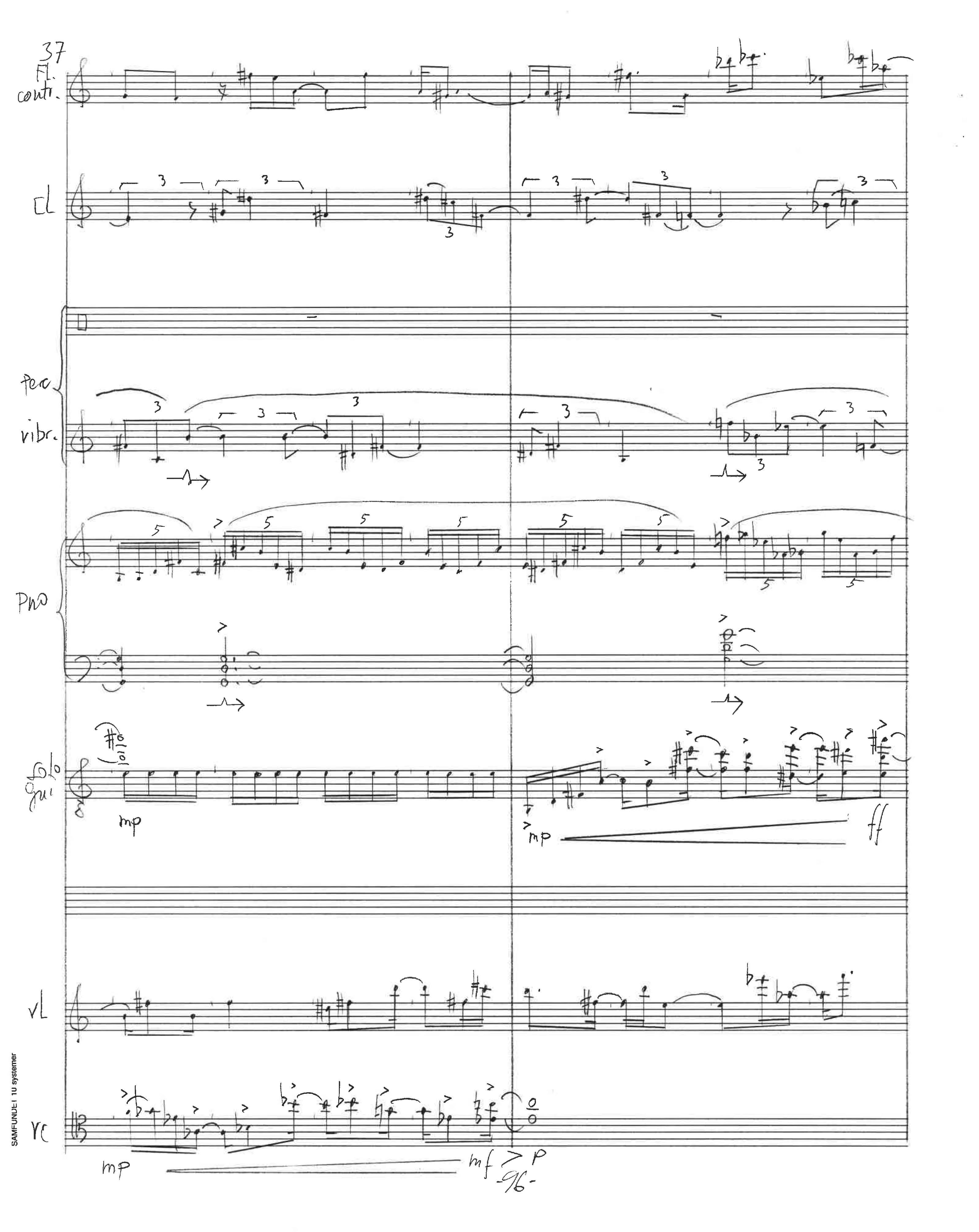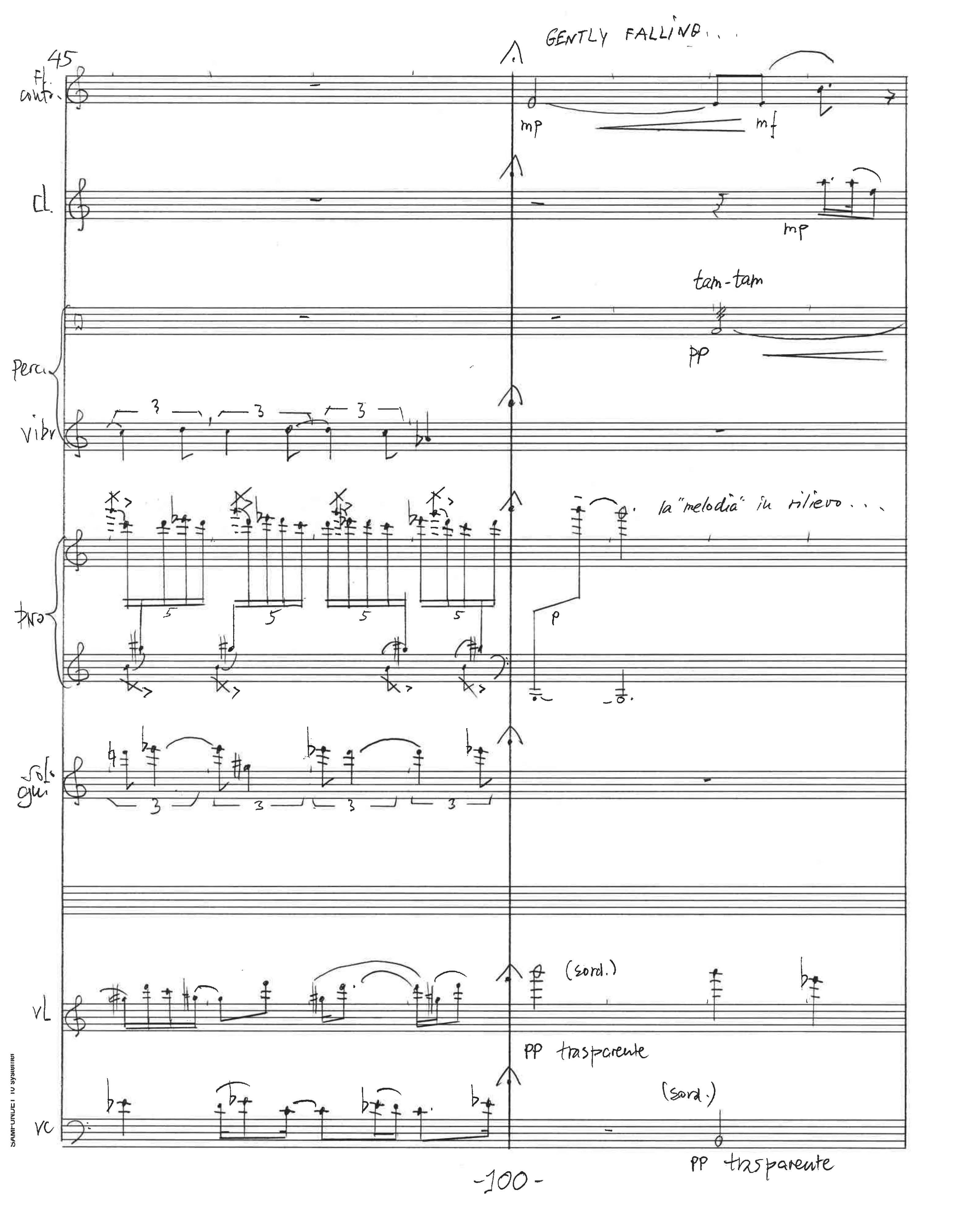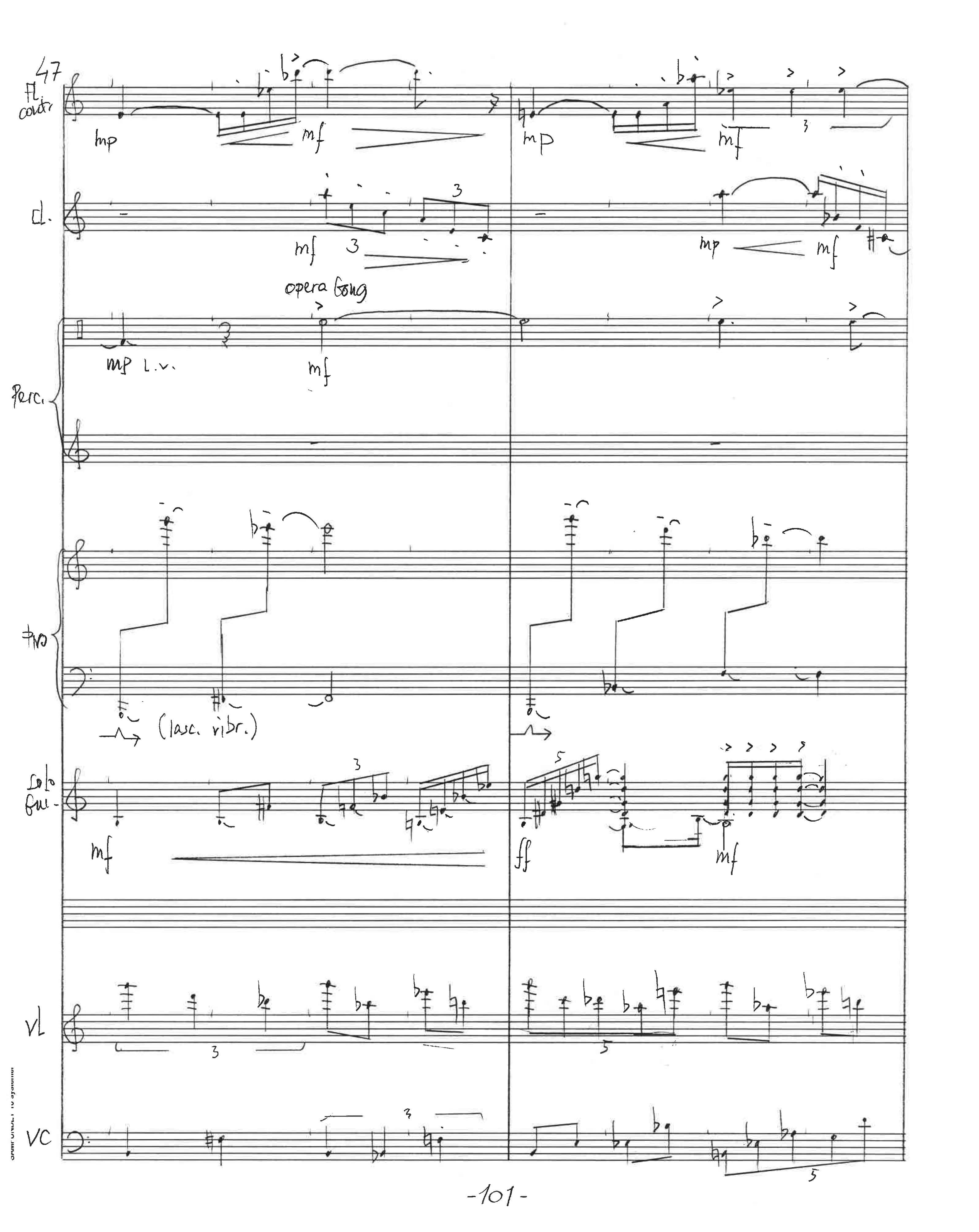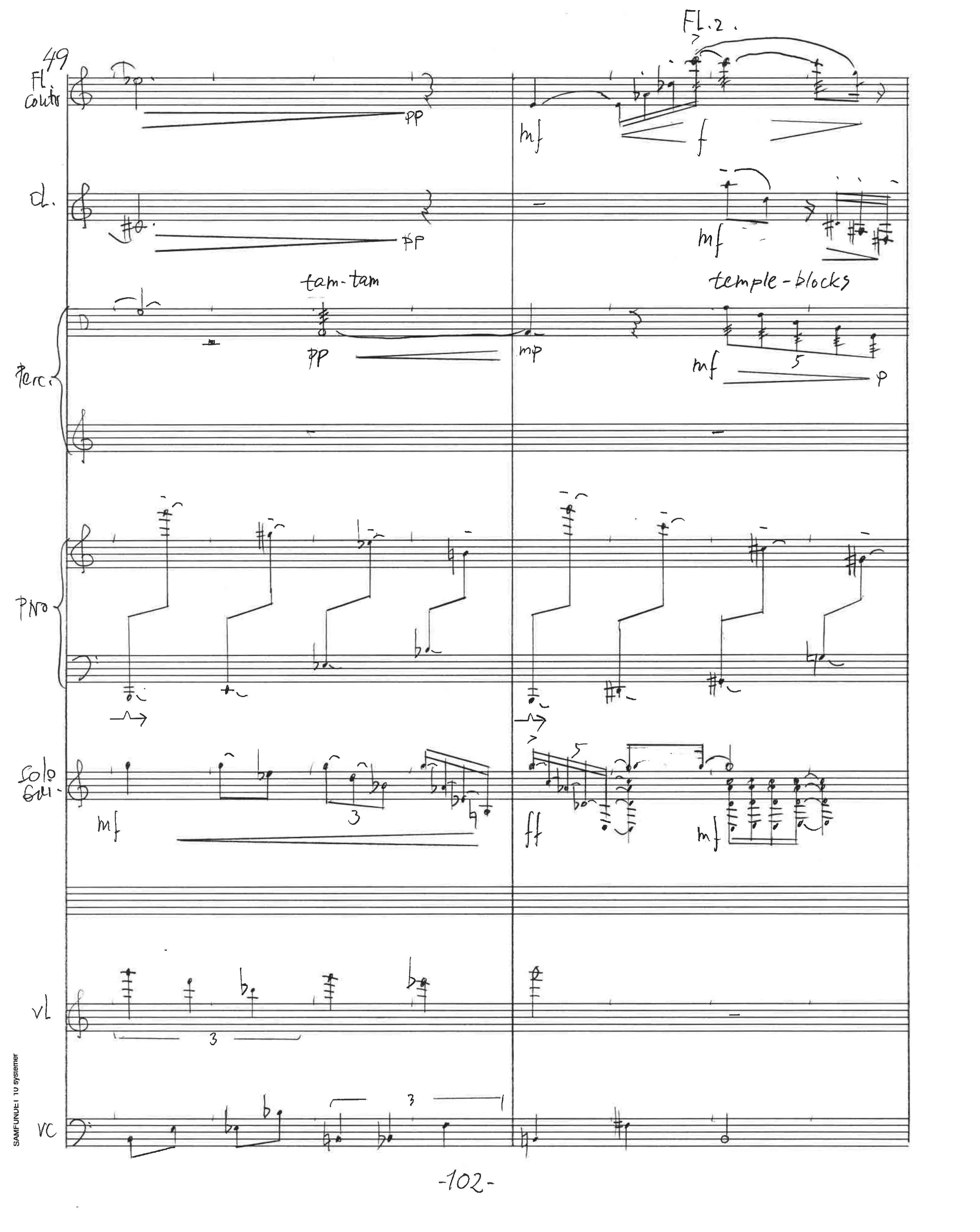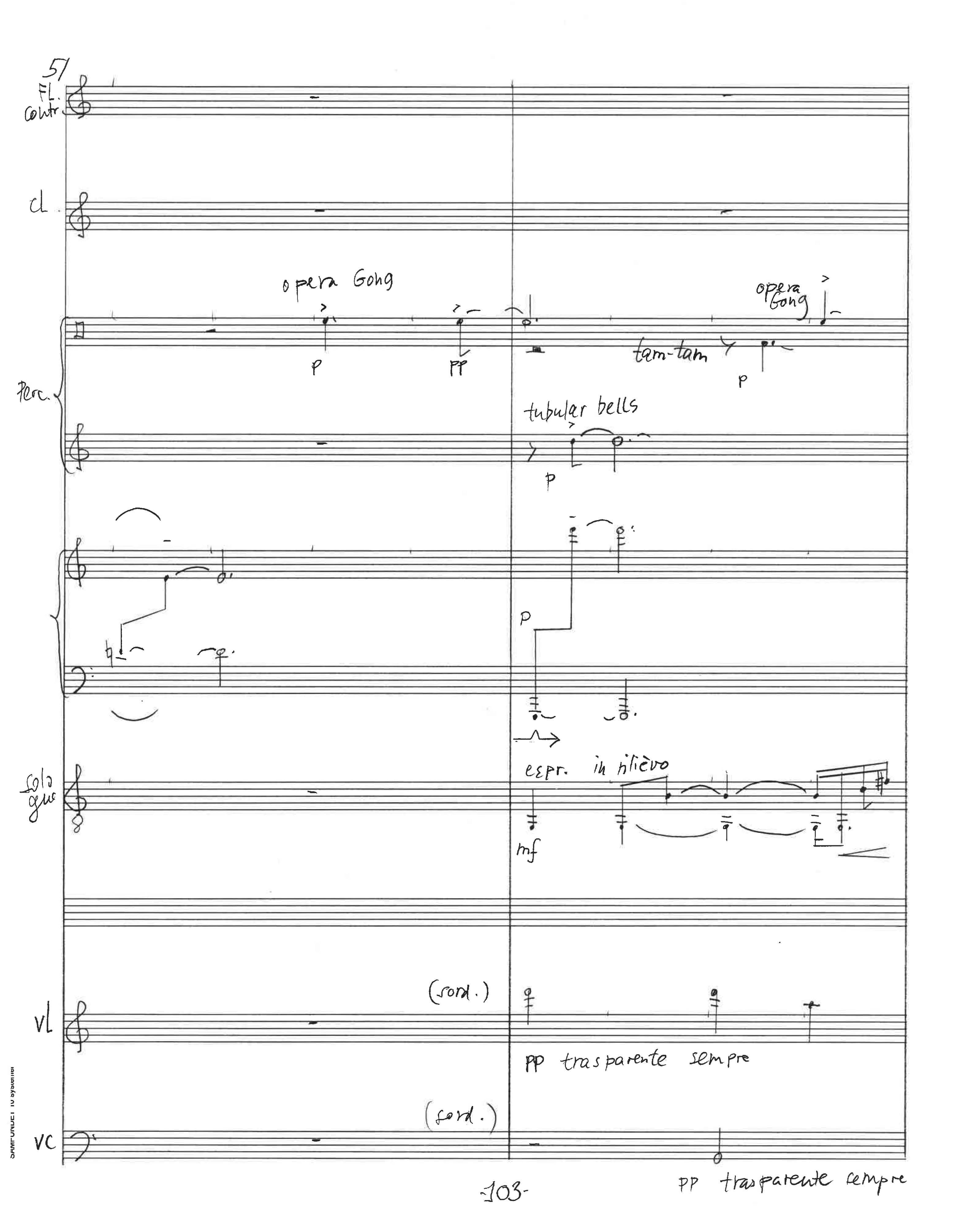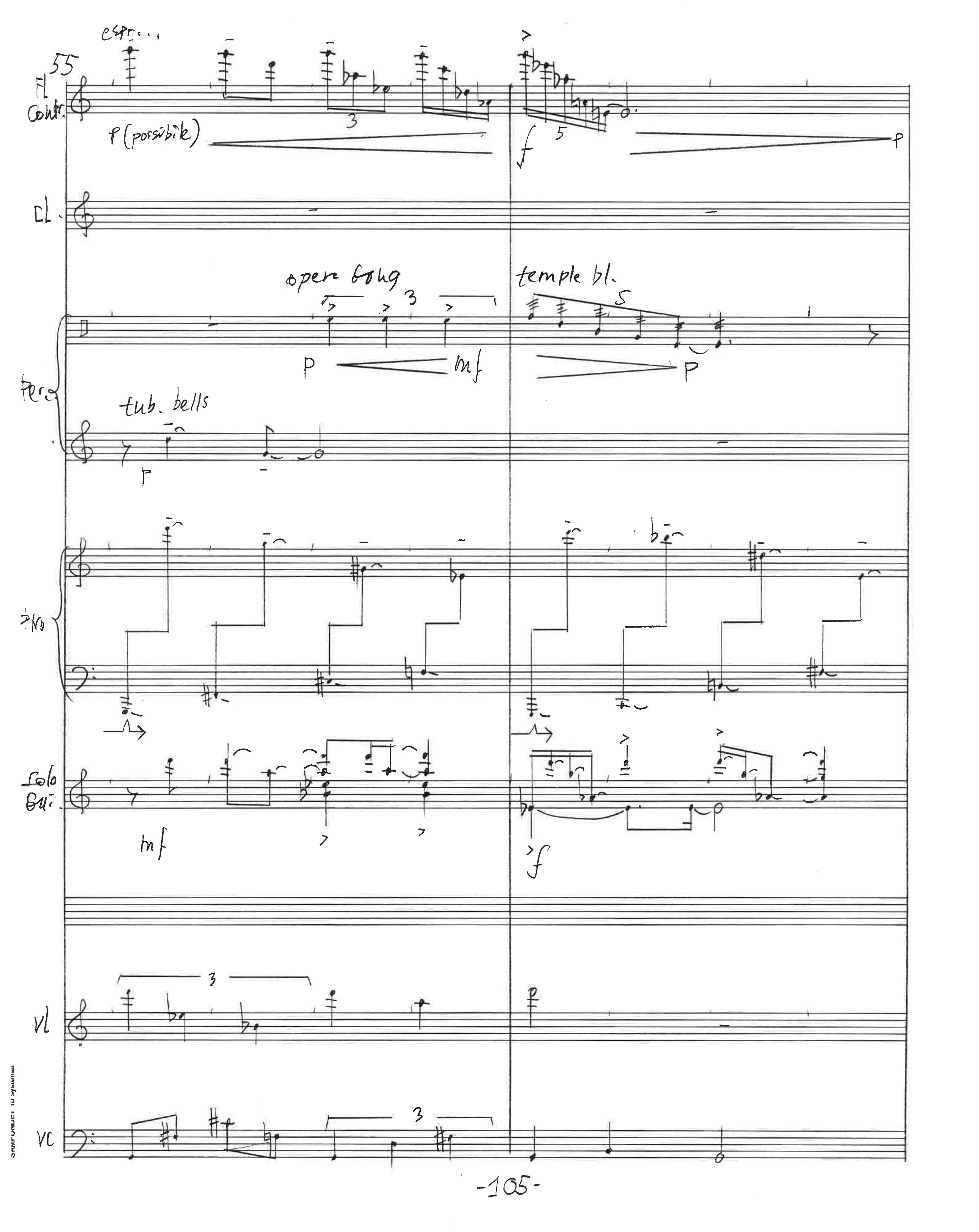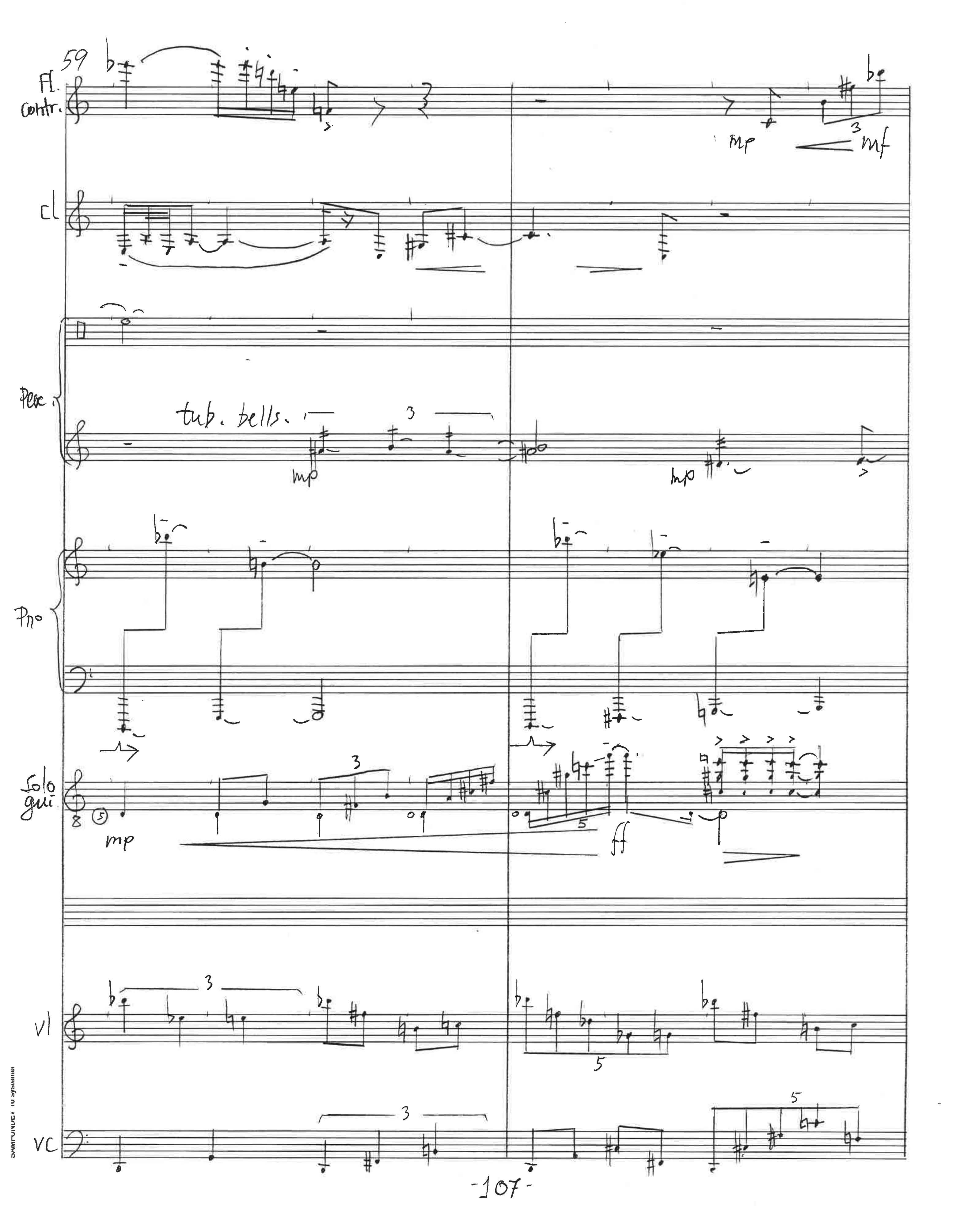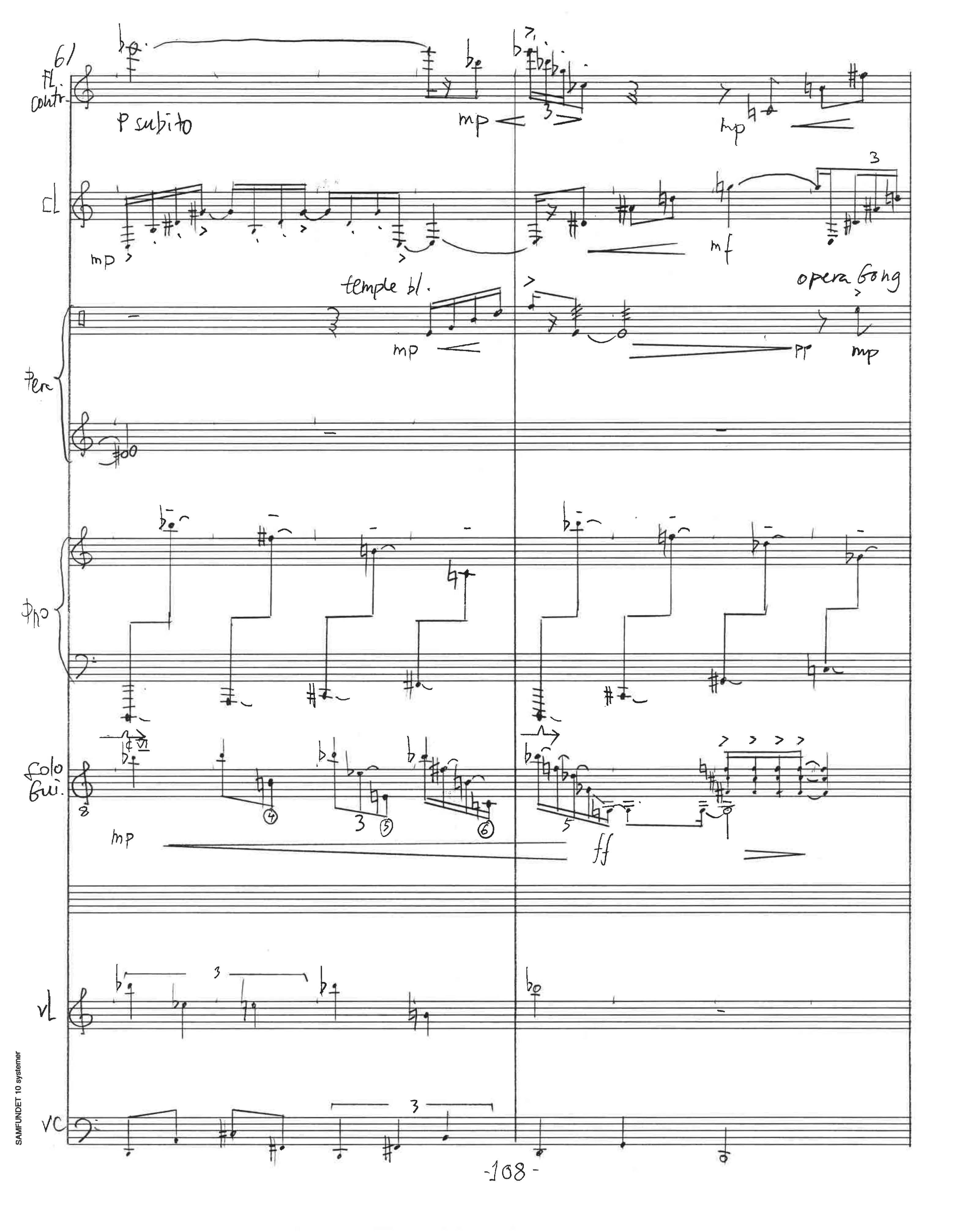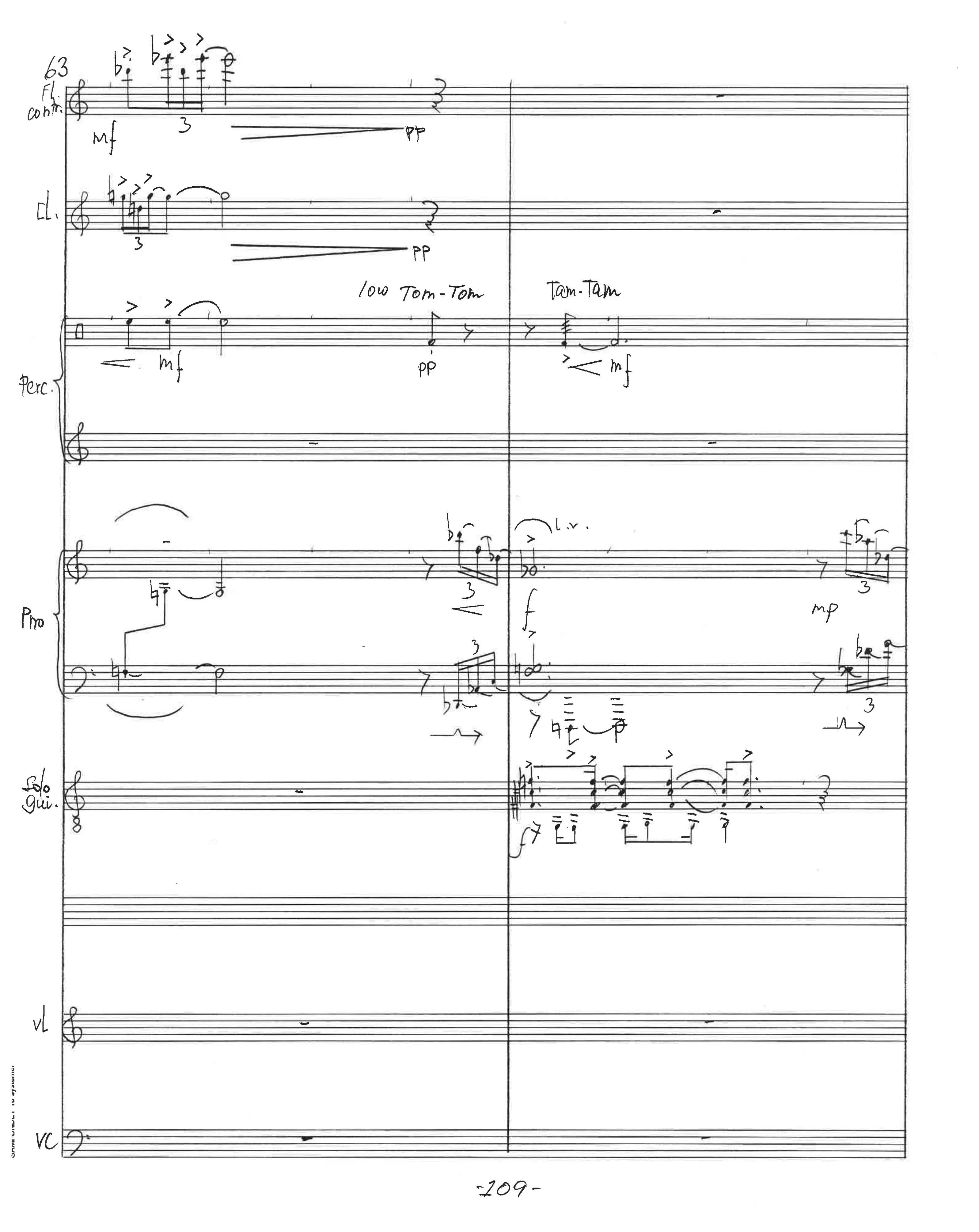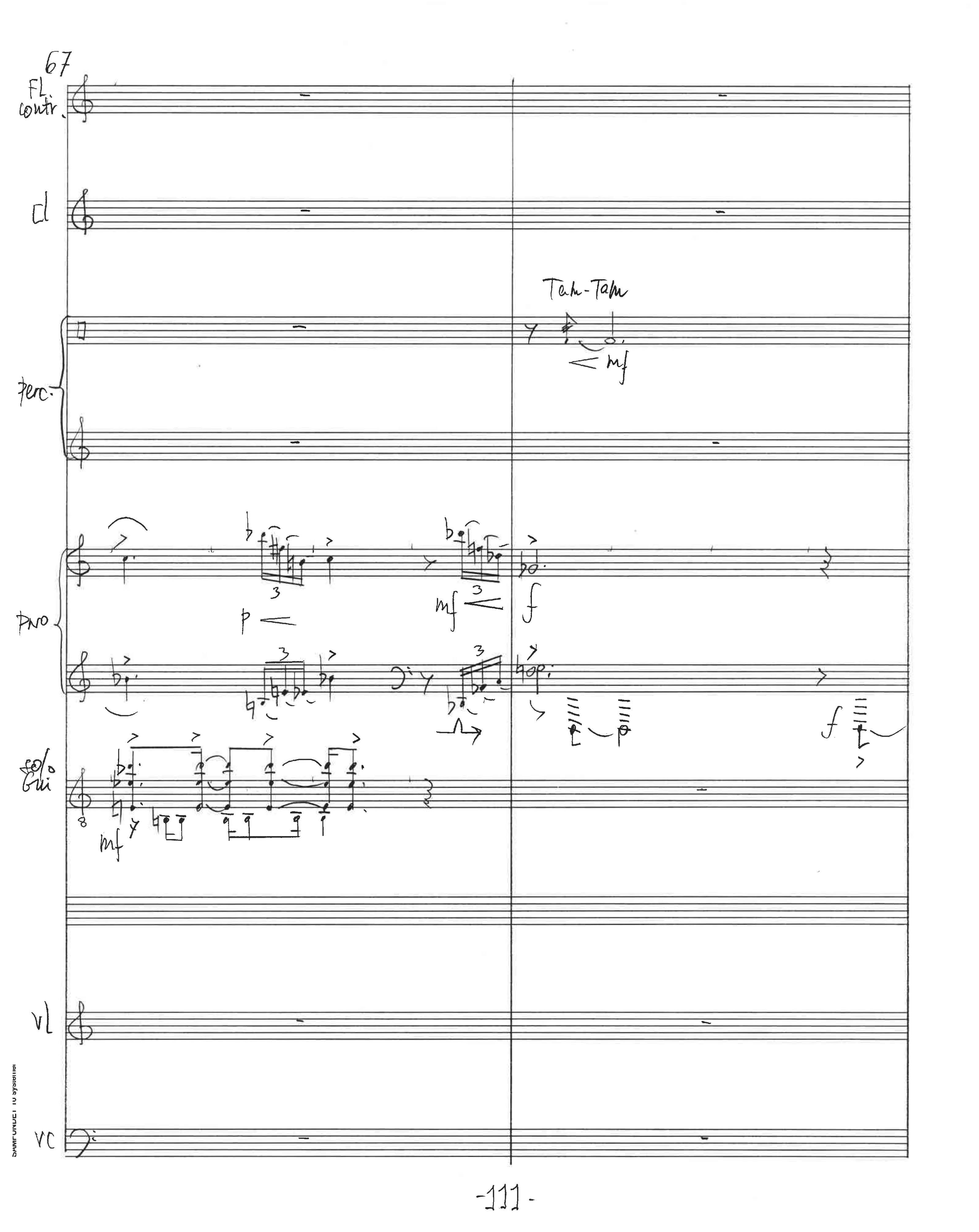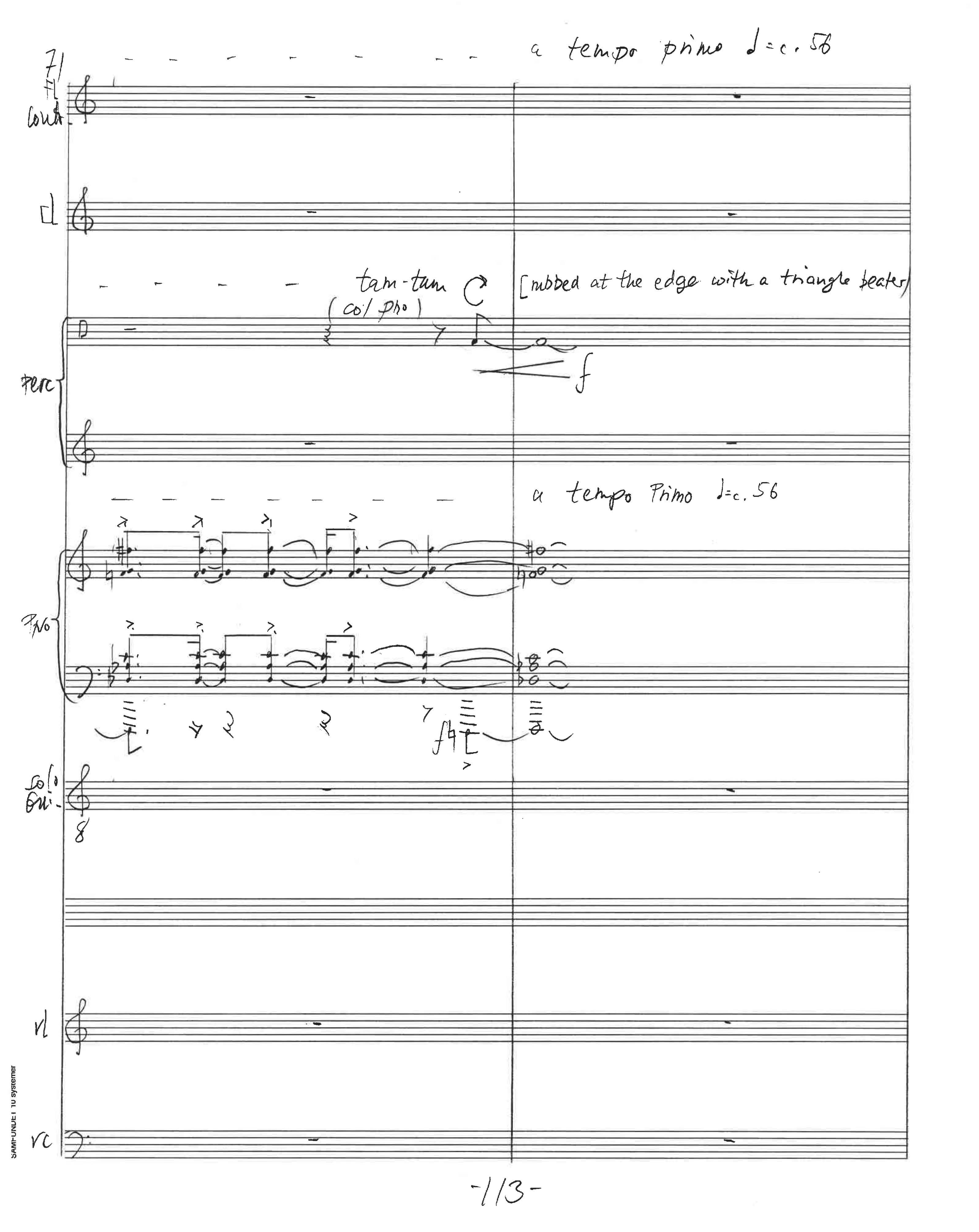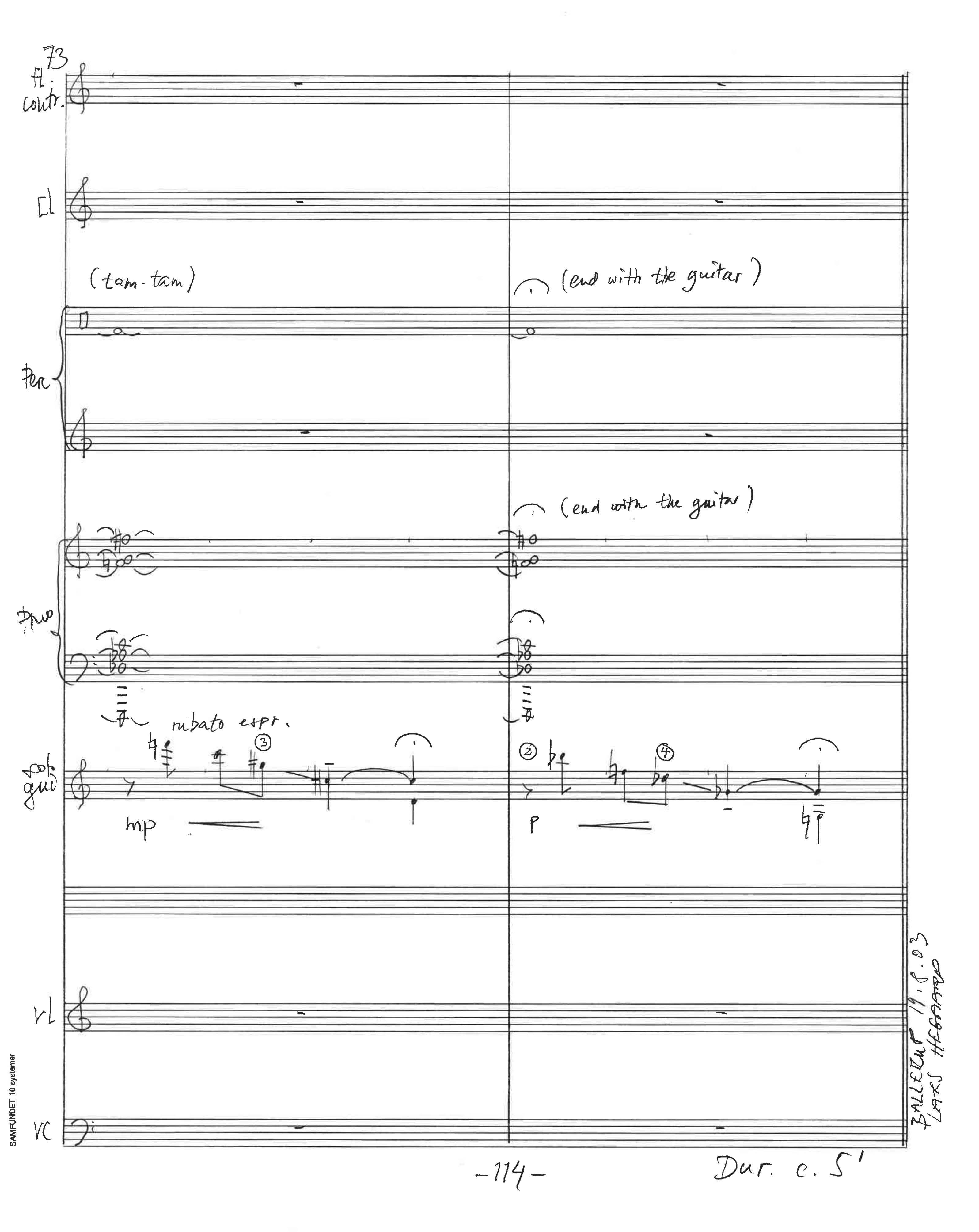Lars Hegaard
Rituals (2003)
for guitar and ensemble
Dur. c. 17′
Rituals for guitar og ensemble er komponeret i 2003 på bestilling af Ensemble Fyn og Jesper Sivebæk og med støtte fra Statens Kunstfond. Det varer c. 17 minutter og har 3 satser med titlerne: l. Obsessions. 2. Digressions. 3. Leaving it all behind.
Rituals er inspireret af en roman af den hollandske forfatter: Cees Nootenboom, som værket også deler titel med. Værket skildrer i 3 satser bogens 3 hovedpersoner, som alle har ritualiseret deres tilværelse på forskellige måder:
1. sats: Obsessions, som betyder besættelser, tvangshandlinger, skildrer en person der er tyranniseret af tid. En fanatisk, asketisk person, hvis tid er ritualiseret til mindste klokkeslæt. Denne persons liv ender tragisk. Han fryser ihjel i Alperne. (I partituret kan man se betegnelsen: like a sliding avalanche, som en glidende lavine.)
2. sats: Digressions, som betyder sidespring, afstikninger, skildrer bogens gennemgående hovedperson, en melankolsk; uambitiøs og kvindeglad person, der flyder tilfældigt af sted i tilværelsen. “Tidens tilfældighed” kunne være hans motto.
3. sats: Leaving it all behind, som betyder: ladende det hele bag sig, skildrer en person som længes efter at befri sig for sin fysiske form for at nå til en åndelig befrielse. Han dyrker derfor zen og den dertil knyttede the-ceremoni. Hans motto kunne være: “Tidens fravær”. Han ender med at begå selvmord efter den sidste the-ceremoni, hvor rakuskålen knuses.
Man kan som lytter naturligvis ikke i musikken finde en direkte oversættelse af romanens verden. Men første gang jeg læste bogen, var min tanke at skrive en kammeropera, så betaget var jeg af den. Dette stykke for guitar og ensemble, som ikke er en guitarkoncert i traditionel forstand, er måske en slags instrumental opera? I hvert fald handler den om tid og vores forhold til den, ligesom også musik gør det.
Lars Hegaard, 21.08.2003
Rituals for guitar and ensemble, was composed in 2003 as a commission from Ensemble Fyn and Jesper Sivebrek, with support from the Danish Arts Foundation. It lasts c. 17 minutes and has three movements entitled: 1. Obsessions, 2. Digressions, 3. Leaving it all behind.
Rituals was inspired by a novel by the Dutch writer Cees Nootenboom, and shares its title with the novel. In three movements the work depicts the three main characters of the book, all of whom have ritualized their lives in various ways:
The first movement, Obsessions, describes someone who is tyrannized over by time, a fanatical, ascetic personality whose time is ritualized down to the last tick of the clock. This person’s life ends tragically. He freezes to death in the Alps. (In the score, one can see the instruction like a sliding avalanche).
The second movement, Digressions, depicts the constant main character in the book, a melancholy, unambitious ladies’ man who floats casually through life. “The randomness of time’’ could be his motto.
The third movement, Leaving it all behind, paints a picture of someone who longs to be released from his physical form to achieve final liberation. He therefore practices Zen and the related tea ceremony. His motto could be ‘’the absence of time’’. He ends by committing suicide after the last tea ceremony, in which the raku bowl is shattered.
As a listener one cannot of course find a direct translation of the world of the novel in the music. But the first time I read the book, I was so fascinated by it that I had the idea of writing a chamber opera. This piece for guitar and ensemble, which is not a guitar concerto in the traditional sense, is perhaps a kind of instrumental opera? In any case it is about time and our relations with it, just as music is.
Lars Hegaard, 21.08.2003
INSTRUMENTATION
Flute (doubling alto flute in G)
Clarinet in Bb
Percussion (1 player): tam-tam, opera gong, suspended cymbal
4 wood blocks, 5 temple blocks vibraphone
antique cymbals (Bb, F)
tubular bells (also “waterbell” on B) tambourine
3 tom-toms
Piano
Solo Guitar (Nylon-strung acoustic amplified)
Violin
Cello
Pou Rv.llt=m
temrlf- r.u- t
Q.(t.

